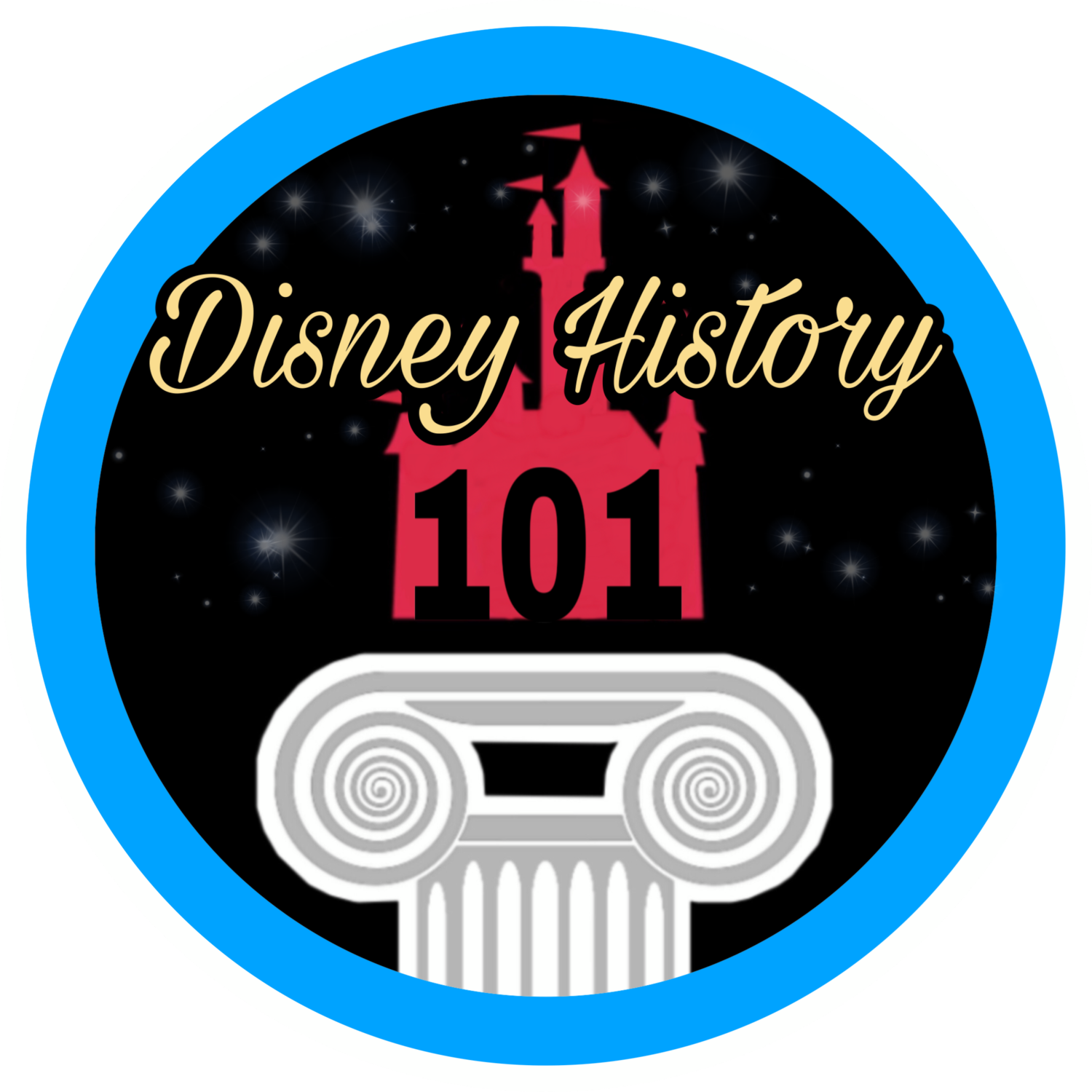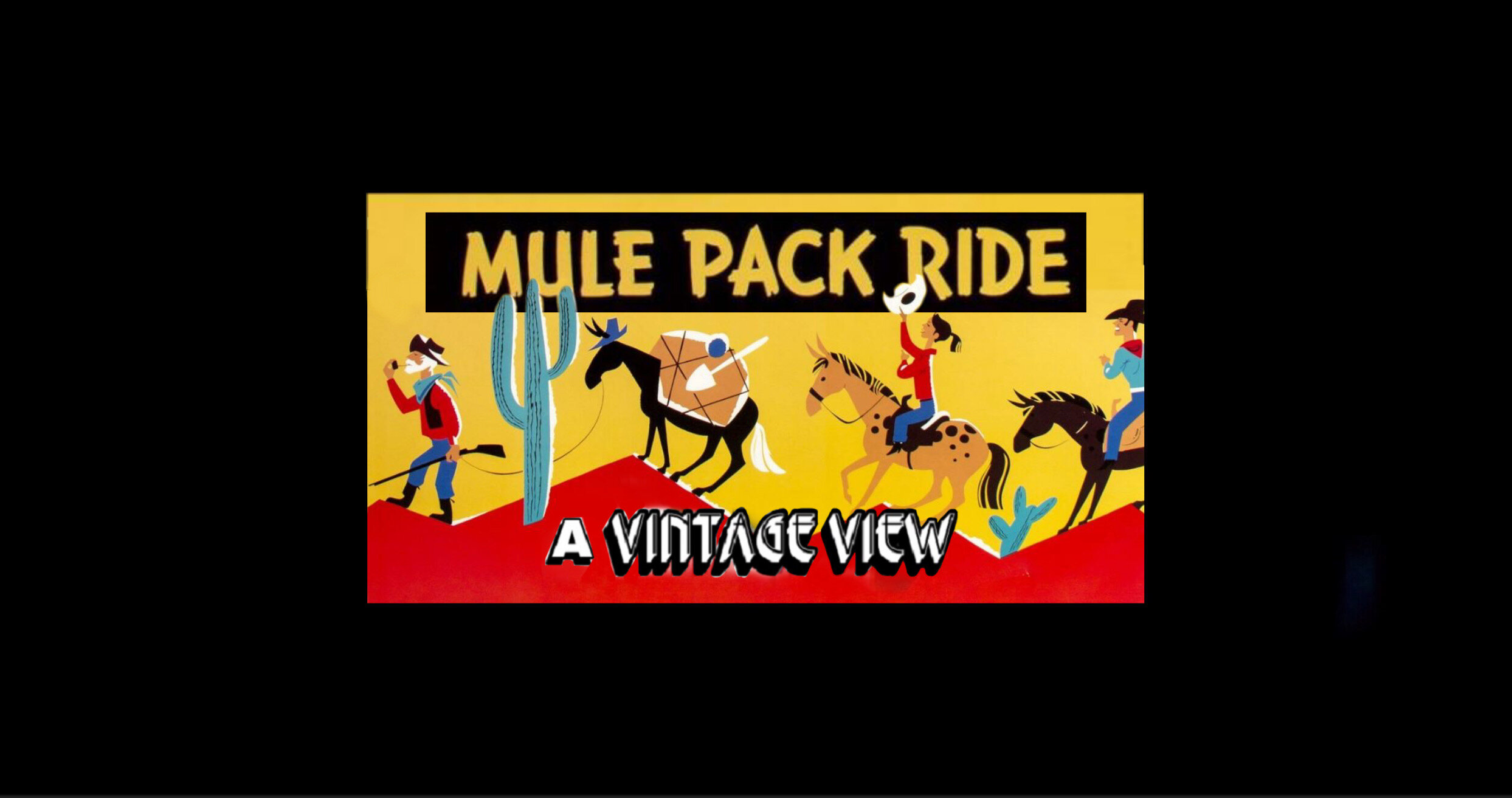MULE PACK (RAINBOW RIDGE PACK MULES)
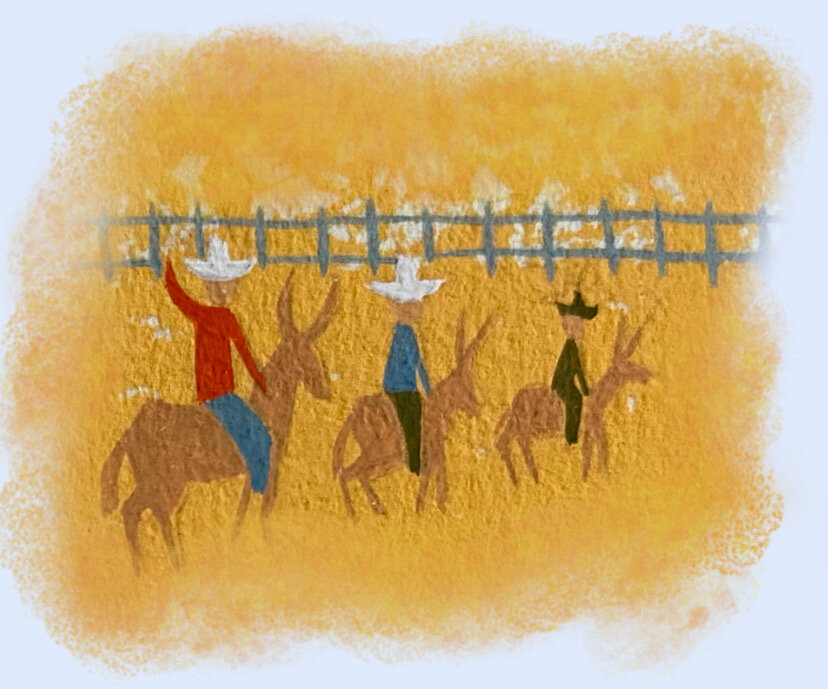

(July 17th, 1955 - February 1st, 1956)
At Disneyland there is a "story behind the story" of every attraction, every attraction is a living experience for the guest. Disneyland ride-through attractions or adventures have officially been defined as an “individual show, ride, or exhibit designed to produce an entertaining Guest experience. Disney attractions stir the imagination, enliven the senses, and provide the participants with positive, innovative entertainment, which is the essence of the DISNEYLAND Show.” It is important to review the story of the attraction, tell the story, explain it, and create interest. This is the story of the Mule Pack.
Equine regularly factored into the plot of Walt Disney Productions (like “Don Donald”, released 1936, which co-starred Jenny the Burro), and equine have always been part of Walt’s vision for a Park. An early form of (what would come go be known as) the “Disneyland Prospectus” [prepared in 1953 for Disneyland Inc. by WED Enterprises], mentions a Mule Pack Ride - “Take a Mule Pack Ride with an old prospector for a guide through the colorful mother-lode country of the pioneer days.” The contemporaneous “Proposed Diagramatic Layout of Disneyland” (Marvin A. Davis’ plot plan, produced for WED Enterprises, by September 12, 1953) detailed a “Pack Mule Ride” as well as its route through this section of “Frontier Land.” It was also written that “the Mail-Order Catalogue will picture everything for sale in the Emporium or at any place in Disneyland. If you want a real pony and cart or a miniature donkey thirty inches high you’ll find it in the catalogue.” Clearly, the development of Disneyland necessitated Owen and Dollie living on the Walt Disney Studio Lot for the duration of their development.
One of the foremost aspects of future Disneyland attraction development that Owen supervised was fabrication of equine tack during 1954. Diane (eldest daughter of Walt Disney) once recollected, “Dad’s first grandchild, Christopher , was born in December of 1954. Disneyland was under construction at the time, and Owen and Dollie Pope were hired to acquire and train the horses and mules that the park would need to pull the horse cars and stage coaches down Main Street. To be close to the horses, the Popes lived in a trailer on the Studio’s back lot and then at Disneyland. Dad would often visit them and the horses. Owen was a skilled saddle maker and made this miniature saddle as a gift for Dad’s first grandchild. My husband Ron was in the army and stationed at Fort Ord, and we were living in Pacific Grove, California. When Mom and Dad flew up to see their first grandson, Dad brought this little saddle with him.”
Owen and Dollie also oversaw the breeding and care of these Sardinian Donkeys, which were intended for “Frontier Land, which is Disney’s favorite section of the fair,” according to Loius Berg (Reporter for “This Week Magazine”)! In fact, they looked after the first Disneyland Cast Member. The “lovable little mule, Picolino, was the first of his breed to be ‘hired’ to work at Disneyland.” On that day, Walt Disney personally commissioned Herb Ryman to paint a portrait of Picolino (the first Disneyland Cast Member) to celebrate the occasion, and this Herb did, while standing with brush in hand before the Studio coral, according to “A Brush with Walt Disney” edited by Bruce Gordon and David Mumford, page 1963.
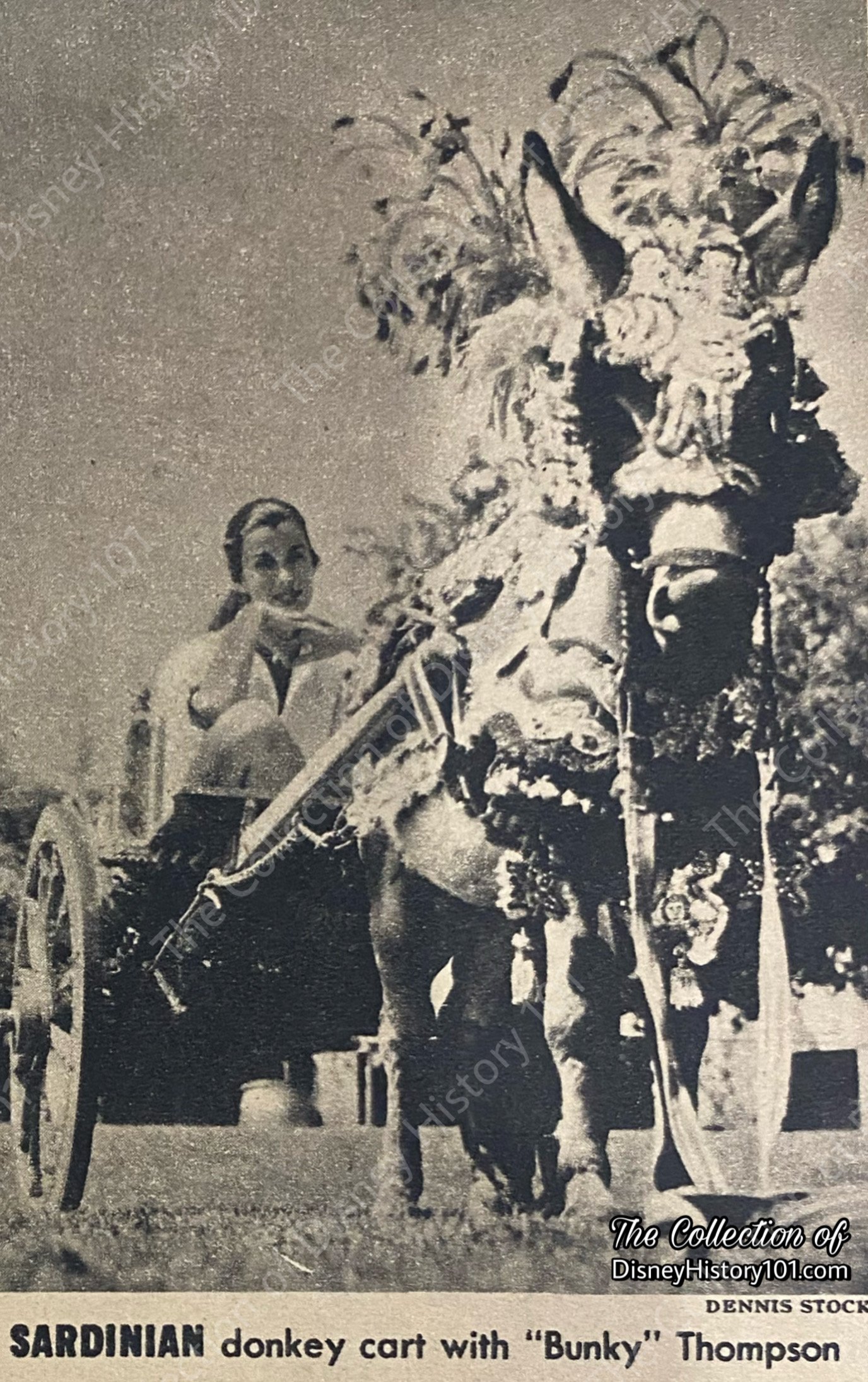
Many years prior, Walt had spent a number of his formative years on a farm run by his father Elias. So, it was only natural that Walt enjoyed the animals around the Studio. A testament to this was the account of Louis Berg, who had the privilege to tour the Walt Disney Studio “stud farm” late in 1954. He soon divulged : “I visited the stud farm where the midget horses, ponies, and Sardinian donkeys that will draw the wagons, carts and surreys are being nursed. And it’s a sight in this world to watch the tiny foals nuzzling up to mothers themselves no bigger than a normal foal. Disney knows every colt and every pony by name, and can tell you the characteristics of each of the several hundred animals : one likes to chew on cigarettes, another is a brat. ‘Get away, General,’ he said to a young colt that was biting his trouser leg affectionately.” Herb Ryman [in “Work With Walt” by Don Peri] collaborated Louis Berg’s observations, recalling how Walt “loved the the little animals - the little horses, ponies, and mules.” And Walt wasn’t the only one who loved the animals at the Studio. In his interview, Louis Berg continued : “Incidentally the pony corral is the favorite of Disney employees and their children. Most constant visitor is ‘Bunky’ Thompson, receptionist, who spends lunch hours feeding the animals.”
“55er” Day Sechler recalled: “At Disneyland, … Walt [sic] came to the Pony Farm a lot to watch us break horses. He was always concerned if he could do anything for you.”
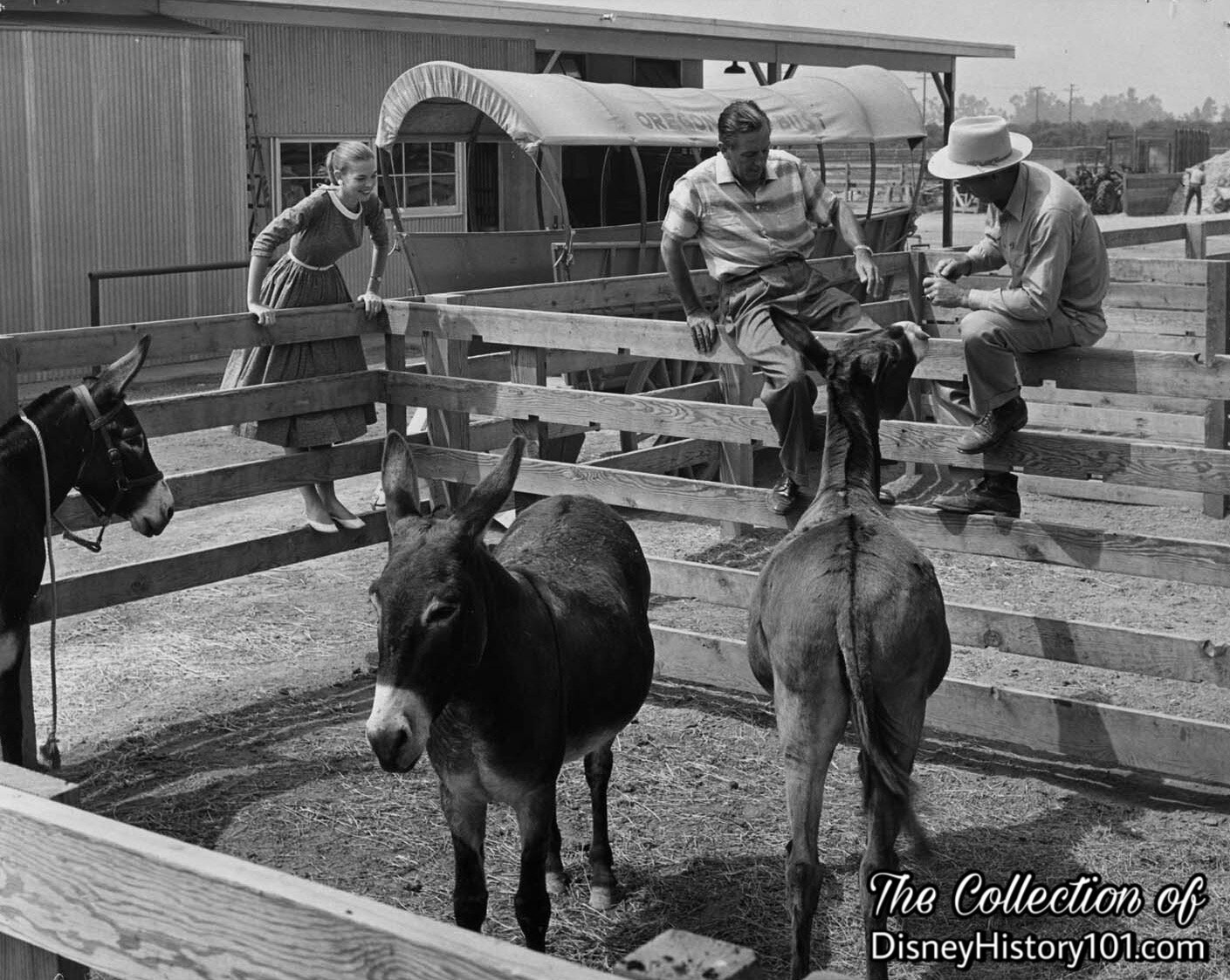
Sharon, Walt and Owen at the Feed Yards of the 6-Acre Backstage Disneyland Pony Farm, c.1957.
Soon one authorized “Disneyland Information & Nomenclature List” (prepared by Bill Cottrell of Disneyland Inc., by May 25, 1955) divulged the details of the “Mule Pack Ride” to Disneyland, Inc. employees in the following way : “A pack ride into the motherlode country in the Old West.” Further, “2 packs” were detailed, consisting of “1 lead horse and 9 mules in each pack.”
While most employees of Disneyland attended an orientation program, during this era, there were many Pony Farm employees who did not attend these sessions. Van Arsdale France remembered: “I think I managed to schedule almost everyone through orientation, with one exception. My only failure was with the people who were to operate the horse drawn vehicles. This operation was controlled by a crusty man named Owen Pope, whose headquarters were in what is still called ‘The Pony Farm.’ When I cornered him, he explained by saying, ‘Van, you're dealing with people people. We're horse people out here.’ He finally sent me one or two of his men. But, he was. doing his own training program.”
Before the Park opened, the Mules, Burros, and all equine were prepared for the noises that they would hear once On Stage in Frontierland (and other parts of Disneyland). Van Arsdale France once wrote: “He [that is, Owen Pope] was worried about the horses ‘spooking’ with all the sights and sounds of Disneyland. So, a recording of sounds from arcades and shooting galleries, and yelling kids made up. This was used as an audio aid for horse training. Since the horses were not directly on the payroll, they had to be carried as assets. All were given names. They all received names of people in accounting. Lucy Cotton, for example had a mule on the records named, ‘Lucy Mule.’” In so doing, Mule Wranglers who assisted Owen knew each equine “in their strings” including the new mules born at Disneyland.
One insert in area newspapers described how “Some of the more stubborn animals slid around the training area on their haunches two or three times before accepting the idea the older, lead horse was trying to get across. Trainers say all horse drawn equipment, from Frontierland stages to Fantasyland's Sardinian carts, will show the Disney perfection on opening day, July 18.”
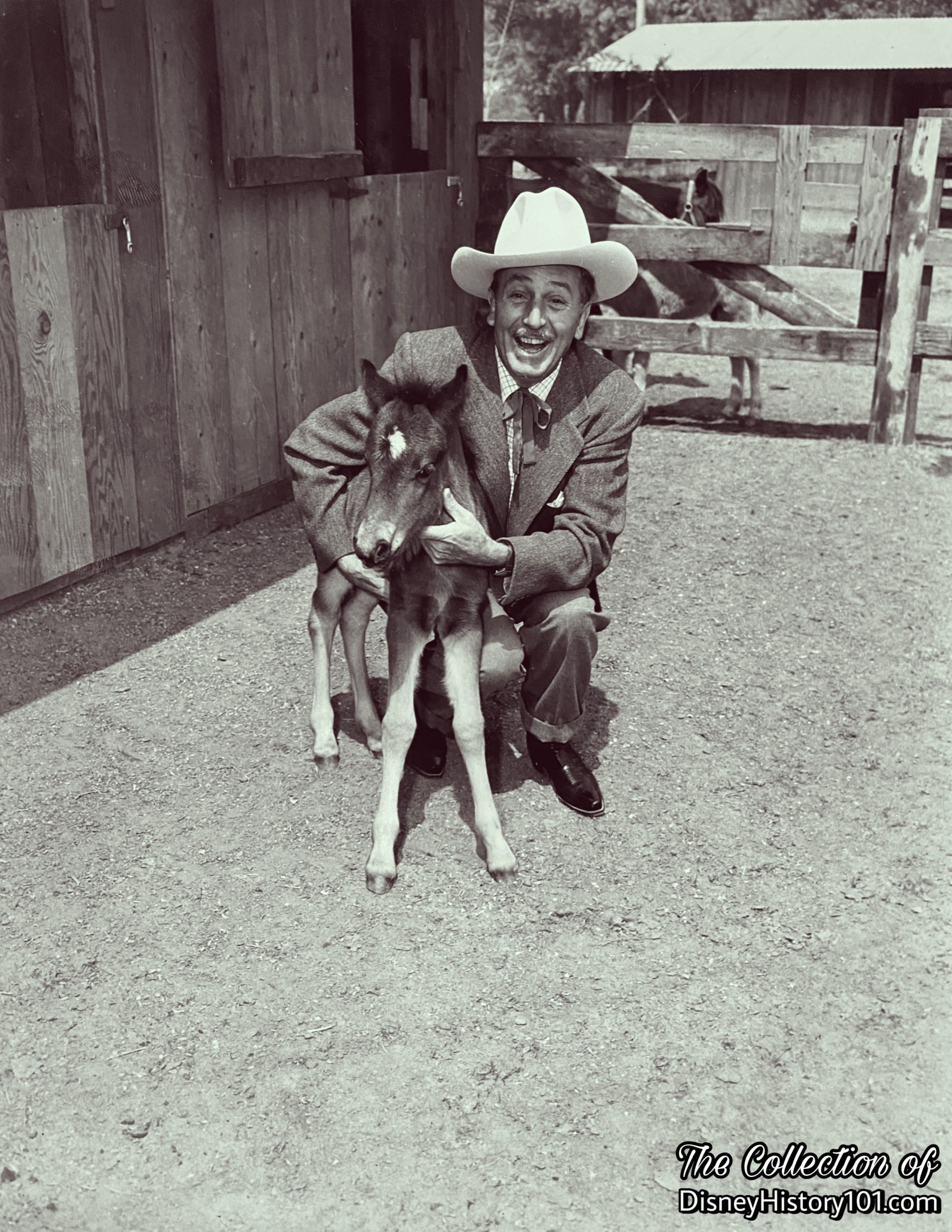
A press release photo depicting Atom the Burro & Walt Disney; ©️Walt Disney Productions.
New additions to the “Pony Farm” stock stem back to Disneyland’s opening year, when Atom the Burro (“Disneyland’s first citizen…born on the Magic Kingdom’s Pony Farm”), was introduced into the world before Disneyland opened. You may recall this image printed on the cover of special newspaper sections published Friday, July 15, 1955.
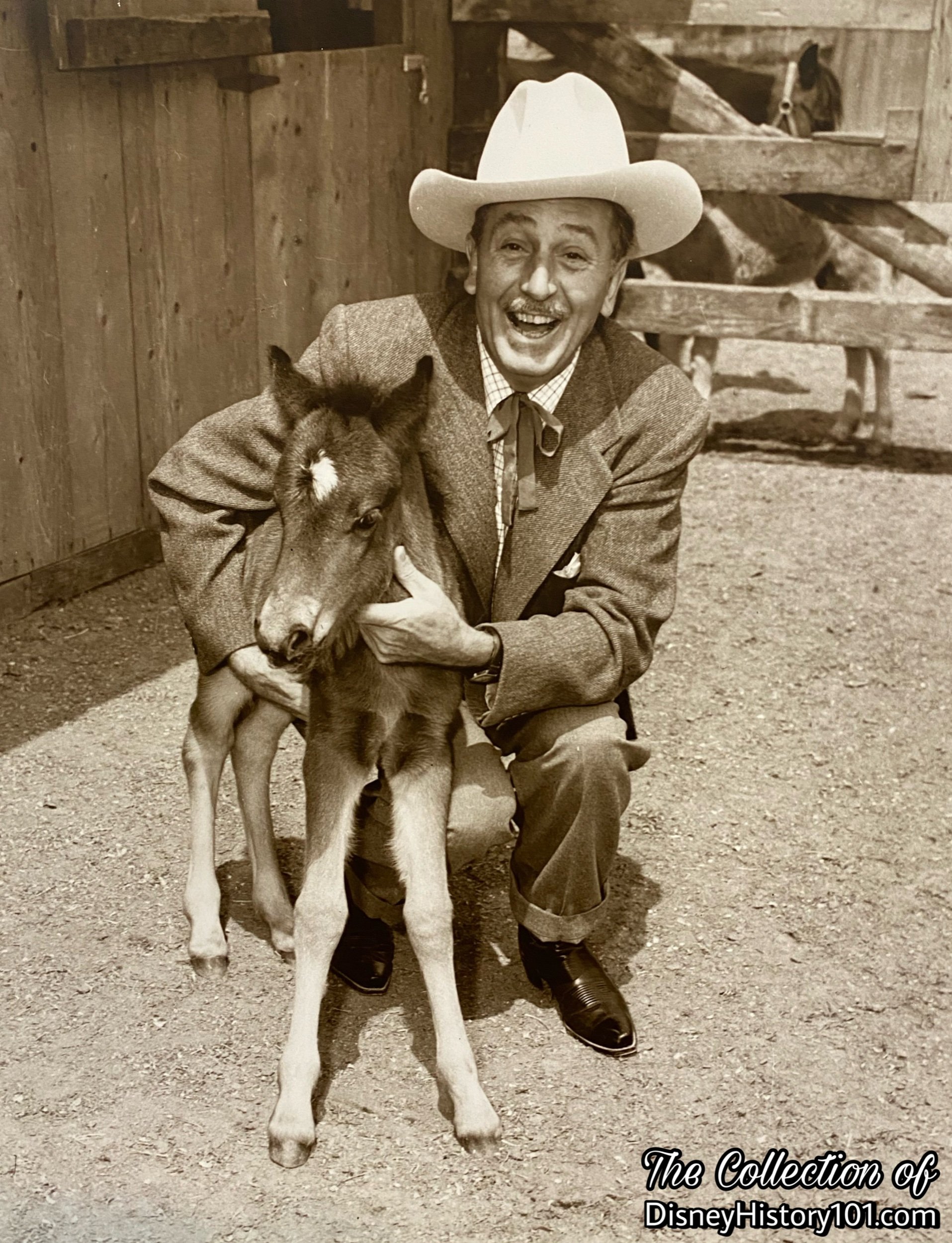
A press release photo depicting Atom the Burro & Walt Disney; ©️Walt Disney Productions.
Walt loved his Disneyland equine. For instance John Catone recalled seeing Walt “riding around the Park on a white horse.” Atom (above) is seen on the cover of the “Premier Souvenir Edition” of the Independent Press Telegram, published Friday, July 15, 1955 and on the inside cover of Disneyland Holiday (Spring of 1957) where he is depicted with the caption: “Walt Disney and a friend.”
Some mules were named after Disneylanders, like Lucy Mule (named after Lucy Cottom), and Burro Male Jim 2 (named after Jim Quigley). Occasionally, animals (including at least two mules) were sold - even before Disneyland opened. Hand-written notes made during the 1958-59 appraisal of Disneyland preserve this information.
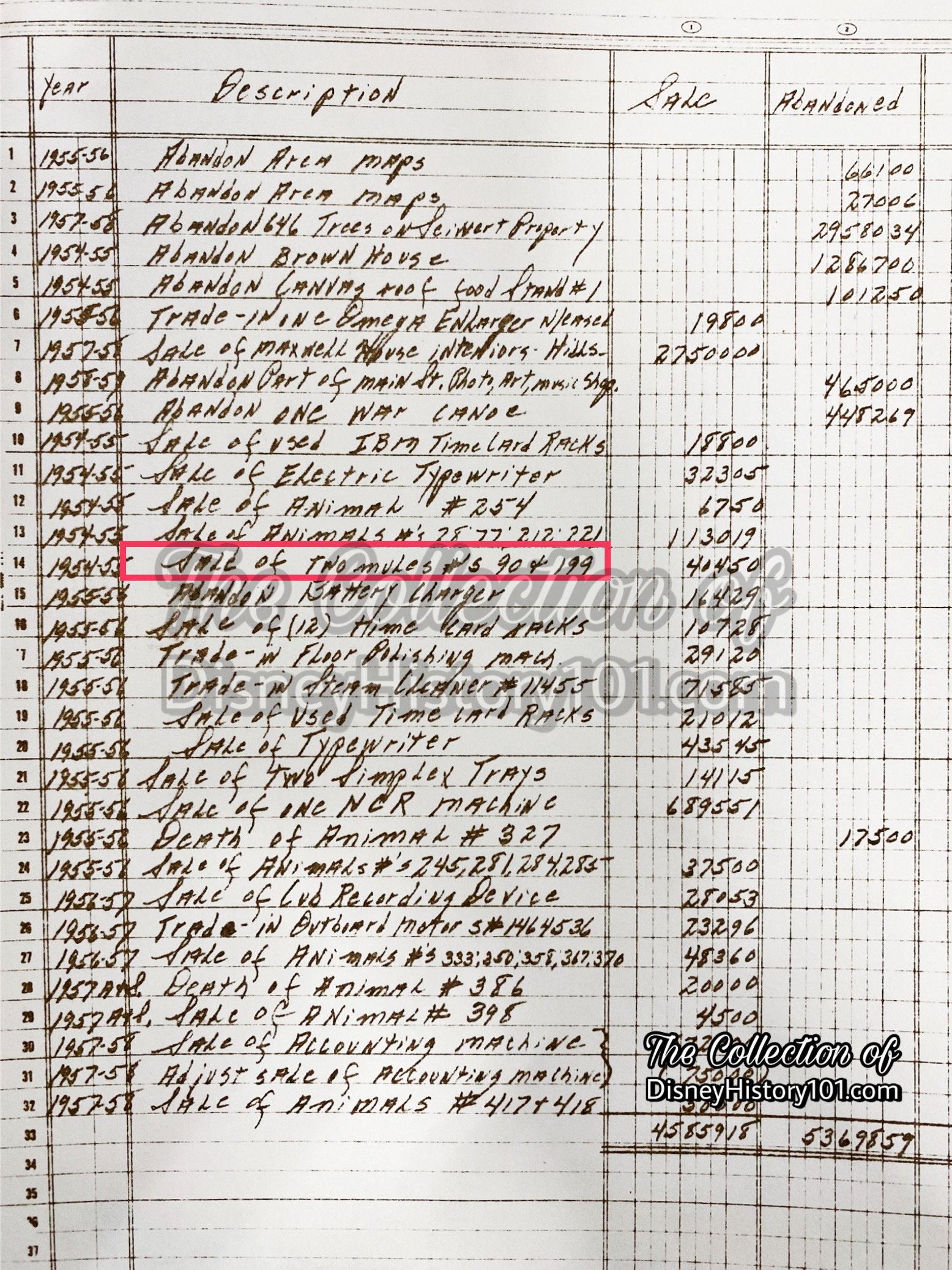
Note the sale of two mules (during 1954-1955) itemized on this list of “Disneyland Direct Purchases Capitalized”; prepared by October 4, 1959.
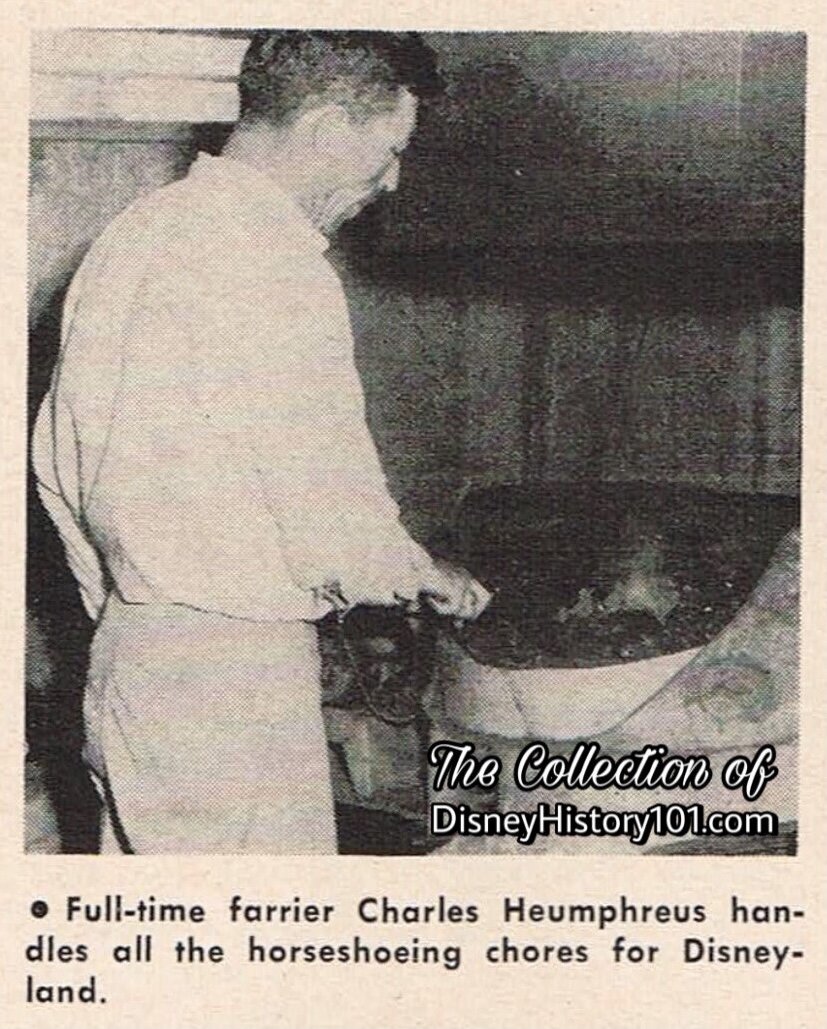
The rarely-seen Blacksmith Room was divulged in Western Horseman, (September, 1957)
While the horseshoes of the Belgians, Clydesdales, Percheron, and Shire-Percheron cross-breeds were made of rubber (to generate the “clip-clop” sound on Main Street), the horseshoes of the Frontierland equine (mules, Sardinian donkeys, midget horses and ponies) which travelled through unpaved areas were made of iron metal, the old fashioned way. The old Mule Shoes were once stored in a barn at the Pony Ranch. But many years later (and long after most of the Mule Trains had departed from Disneyland), the old shoes were relocated and piled high under trees (and behind a fence) near Big Thunder Ranch.
Some equipment was purchased, like 16 saddles which were specially rigged with a 14-inch seat, purchased for $1,248, by October of 1959.
By July 1, 1954, George Whitney of Disneyland, Inc. directed Amusements, with Ron Miller overseeing analysis, philosophy, capacities, planning, operator training, and amusement procurement.

At last, the Press Preview Day arrived, with the “Pack Mules - two packs - one lead horse and nine mules in each pack,” escorting guests through the wild country of Frontierland! The Mule Pack would go on to hold a special place in Disneyland history, as 1 of 22 initial major attractions at Disneyland! “55er” Day Sechler recalled, “Where Fritos now stands was a loadin' dock for burros, we didn't have mules then. A burro belongs to the ass family." Earl Anderson recalled “On opening day, John Yarber and I got a call that the gate had fallen off the Mule Pack Ride, and that we were to go and fix it. We had not the slightest idea where the Mule Pack was.”
“Disneyland's Painted Desert was a playground for the James Unger family recently when they took one of the first pack mule trains a cross this miniature desert waste. Cactus and sagebrush was moved in and the area given its realistic appearance by Disney craftsmen and artisans. Led by a Disneyland trainer, the riders are Mrs. James Unger and sons, Melvin, 9; Albert, 12, and Richard, 2, riding with his father, James W. Unger.”
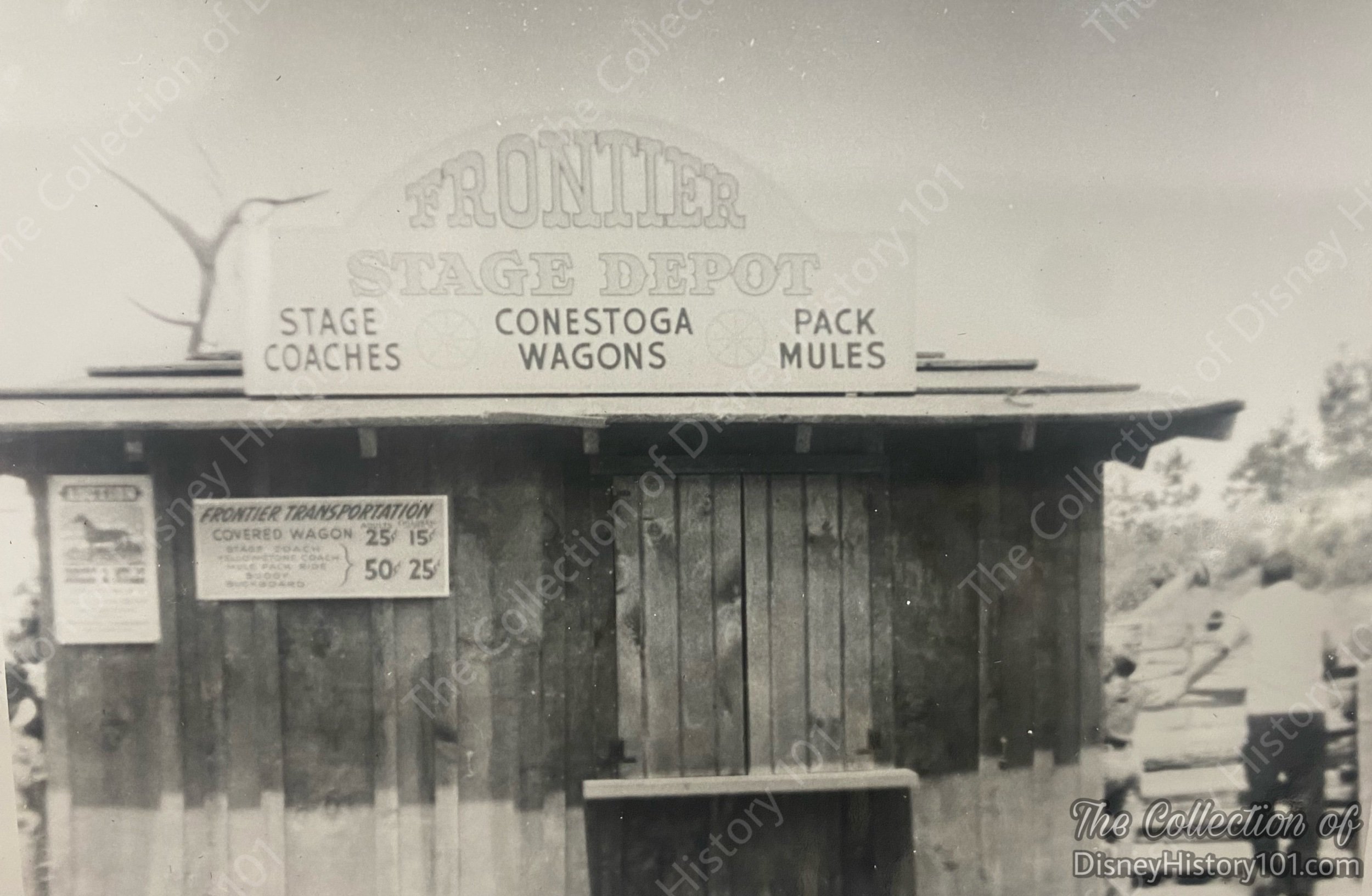
The Frontier Stage Depot.
Many Hosts started out working the mule attraction, and assisting young guests onto the saddles and into the stirrups. For example, after some encouragement from Eugene Lemmon (of Park Management and Operations), the legendary Ron Dominguez even spent part of his first year with Disneyland, working with the Mule Pack (among other equestrian-based adventures). The adventure has been described as “unpredictable, certainly never the same ride twice.” Charley Brock recalled: “In May of 1956, I went to work on the Mule Pack Trip. I'd work the mules some and the horses some. A mule will only work so much and then he'll quit. A horse will work until he drops. Burros are pretty stubborn. I'd sure get mad at the mules sometimes out in the Park, but I'd save the swearin' at them fill I got 'em back in the barn. I'd call it 'MULE LANGUAGE!”
The attraction was very popular. Soon (within 1954-55), a Conestoga Wagon and Mule Pack model kit (potentially Walt Disney Productions licensed merchandise) was also suggested by the Strombeck-Becker Mfg. Co.


(June 26th, 1956 - June 26, 1960 )
The Mule Pack soon went down for a major rehabilitation. Several years later (during 1961), Eleanor Heldt (Magic Kingdom Club Administrator) commented that “During a major rehabilitation, it is sometimes necessary to close an attraction for several weeks. This of course, is when the smallest details are checked, replaced, or repaired as required for the maximum safety, convenience, and comfort of our guests.” Beginning on June 26th, 1956, several new attractions (and enhancements) proved the truth of Walt Disney’s promise that Disneyland would continue to grow! As the mules were included among several exciting attractions debuting during 1956, that increased ride capacity, one day in August saw a peak total of “197,547 individual rides” enjoyed by Guests (according to a letter from Walt to Ward Kimball, dated January 23, 1957).
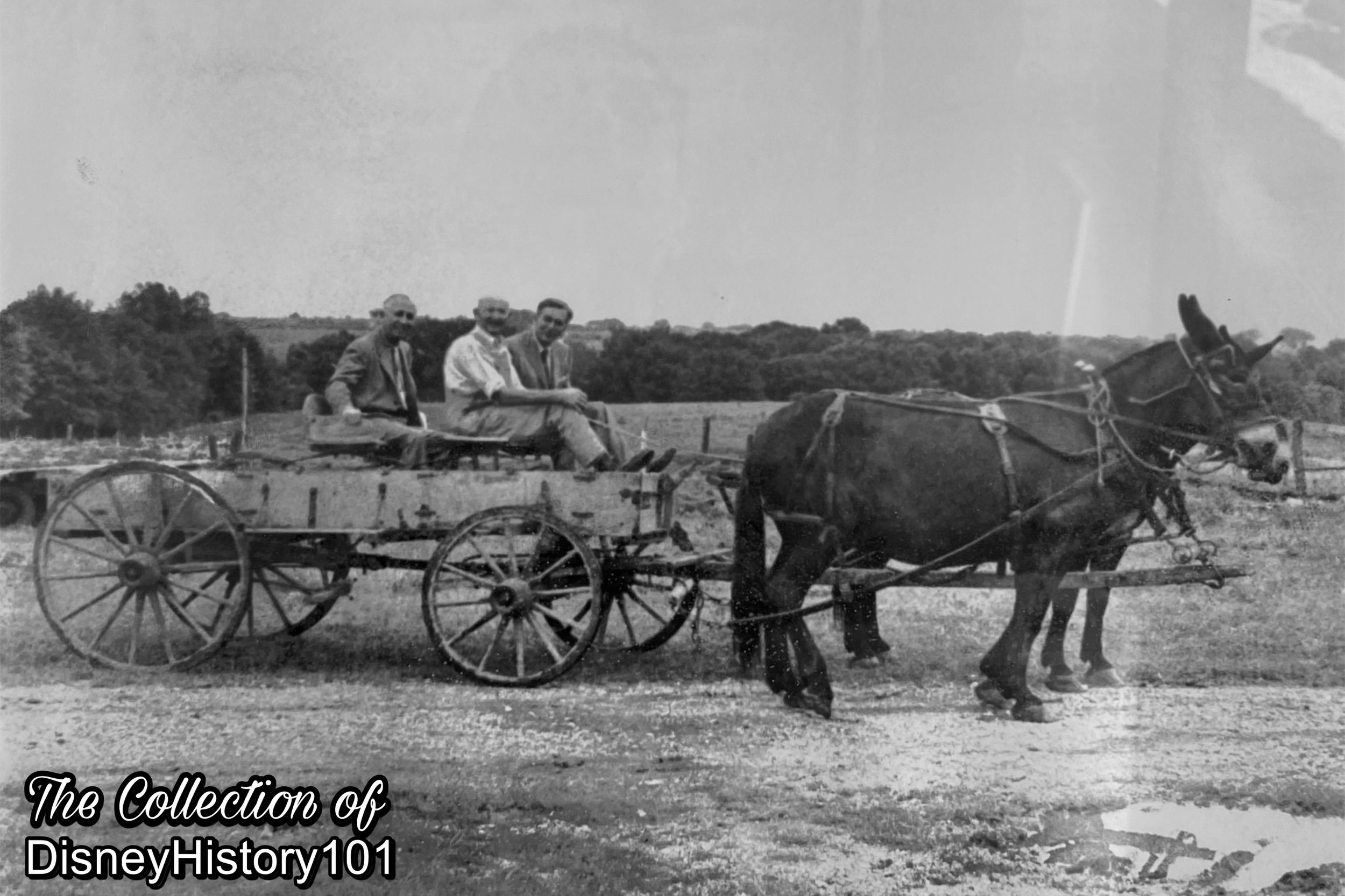
Walt & Roy visit Marceline over Fourth of July weekend 1956; L-R: Roy Disney. Frank Van Tiger, Walt Disney
In 1906 Frank had delivered fence posts to the Disney Farm in his Peter Schttler Wagon. When Walt and Roy came back for a visit in 1956 (not long after the reopening of the Pack Mules at Disneyland) they enjoyed a ride in the very same wagon pulled by mules.
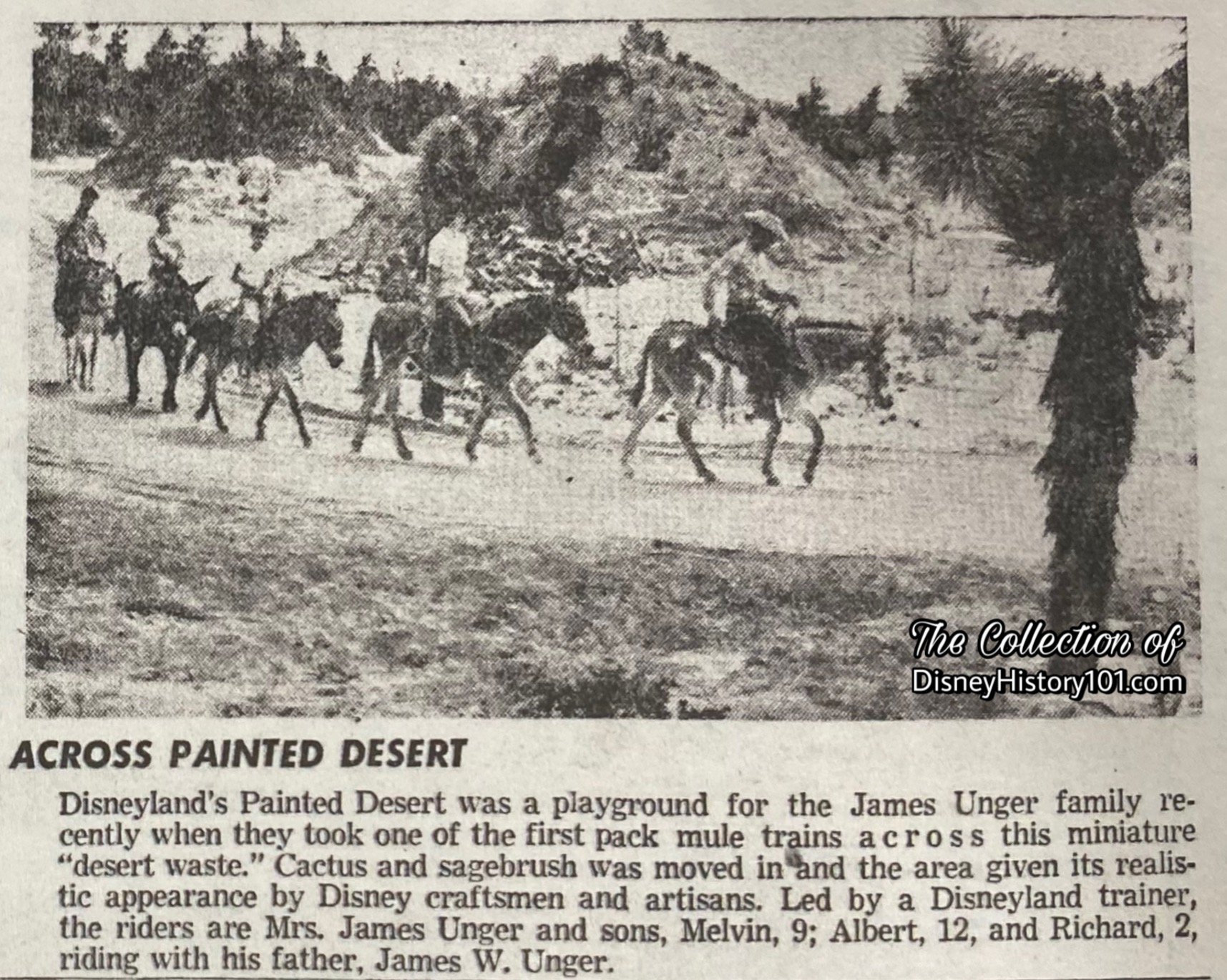
Published July 15, 1955.
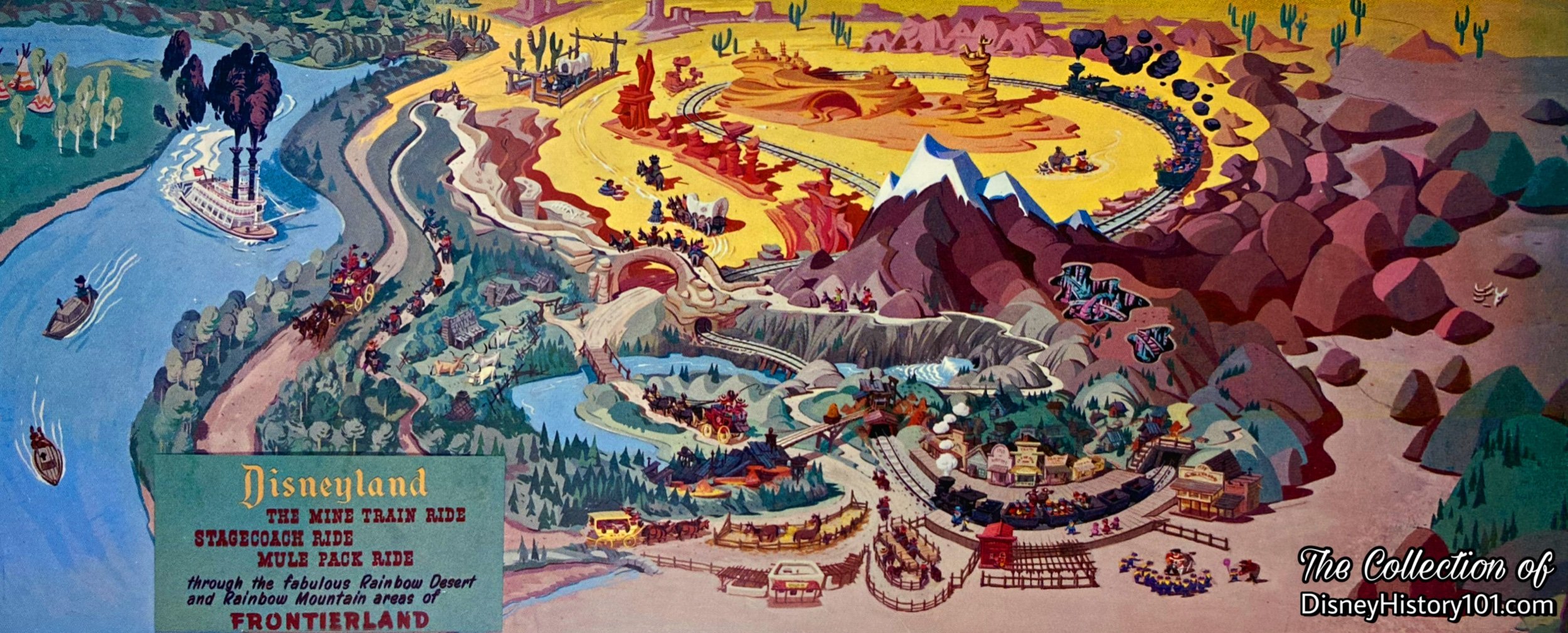
"The Official Guide to Disneyland" Excerpt, 1956; This image was also the subject of a Disneyrama postcard.
Just outside the mining town of Rainbow Ridge sat the boarding station for the pack mule train. Now, there were “three wonderful ways” to enjoy the Painted Desert at Disneyland.
This is a Walt Disney Artist's conception of a section of FRONTIER-LAND in Disneyland, featuring the awe inspiring Mine Train Ride, the exciting Stagecoach and Mule Pack Rides, where one can journey through the many fantastic sights of the Rainbow Desert and Rainbow Mountain areas, returning with a view of the famous Mark Twain River Boat and Tom Sawyer Island.
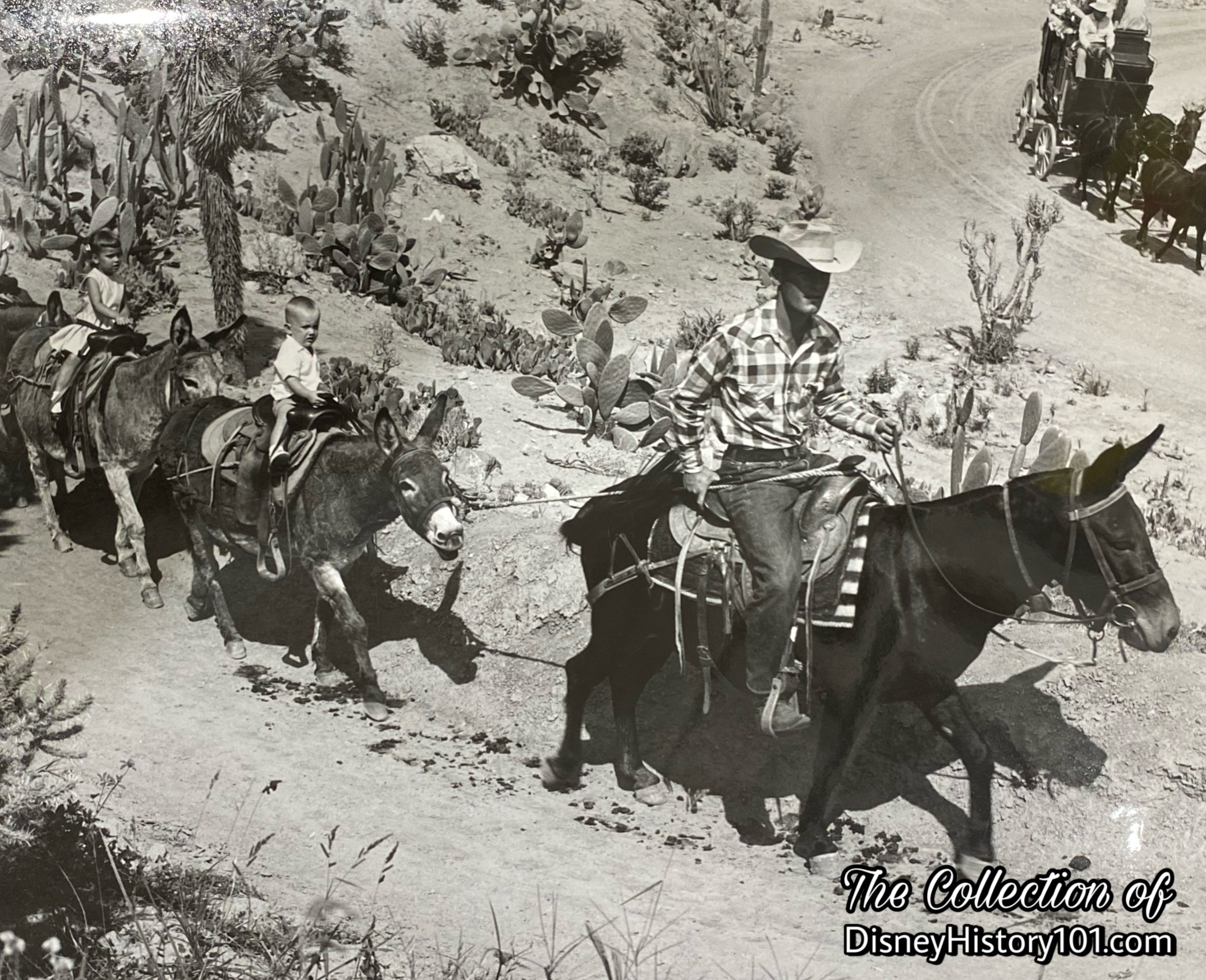
A press release photo depicts a Mule Train on the trail overlooking a Stagecoach; ©️Walt Disney Productions.
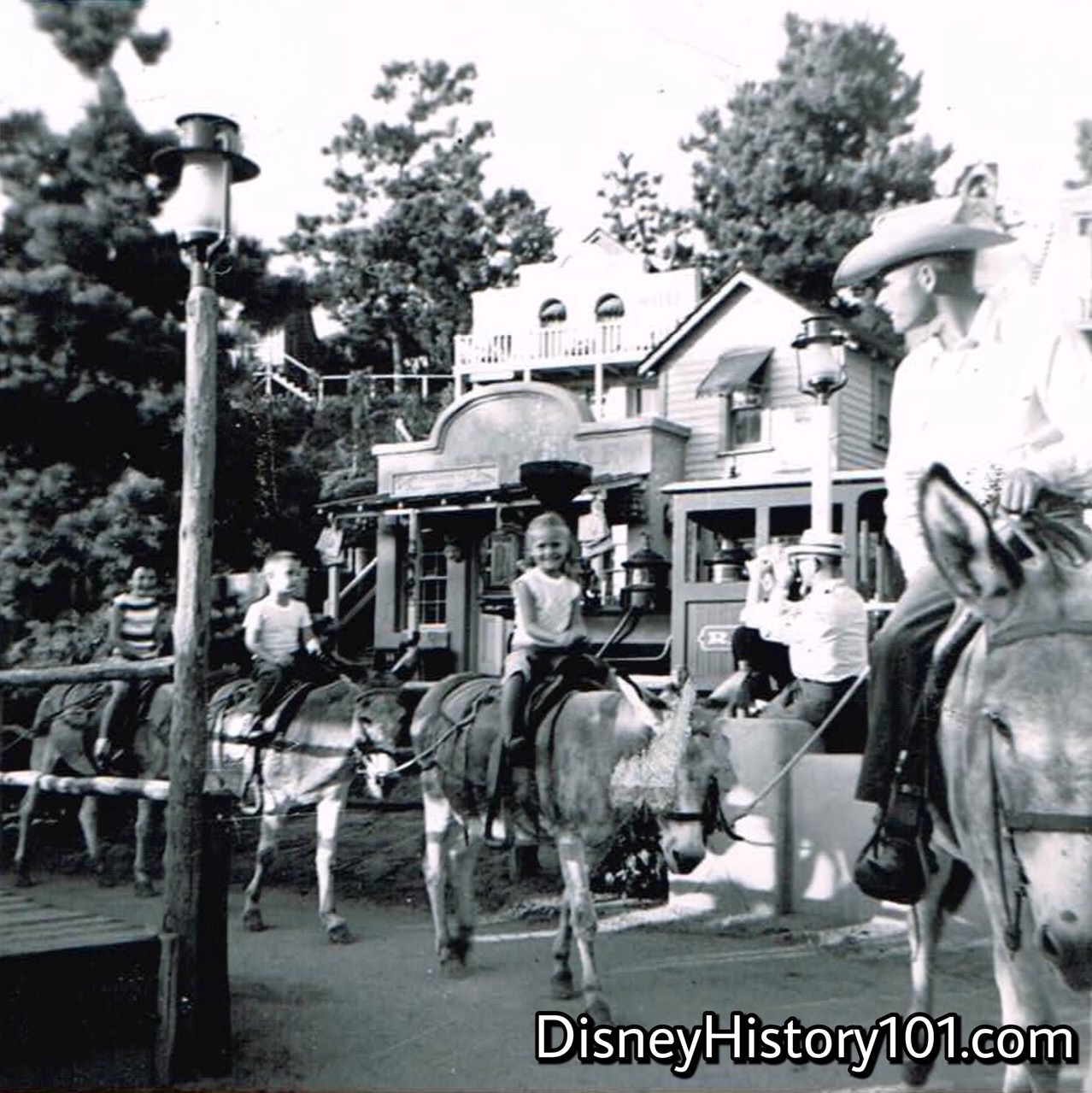
Pack Mules at Rainbow Ridge, (September, 1957)
Similar to the Mine Train, the Rainbow Ridge Pack Mules also departed from the town of Rainbow Ridge!
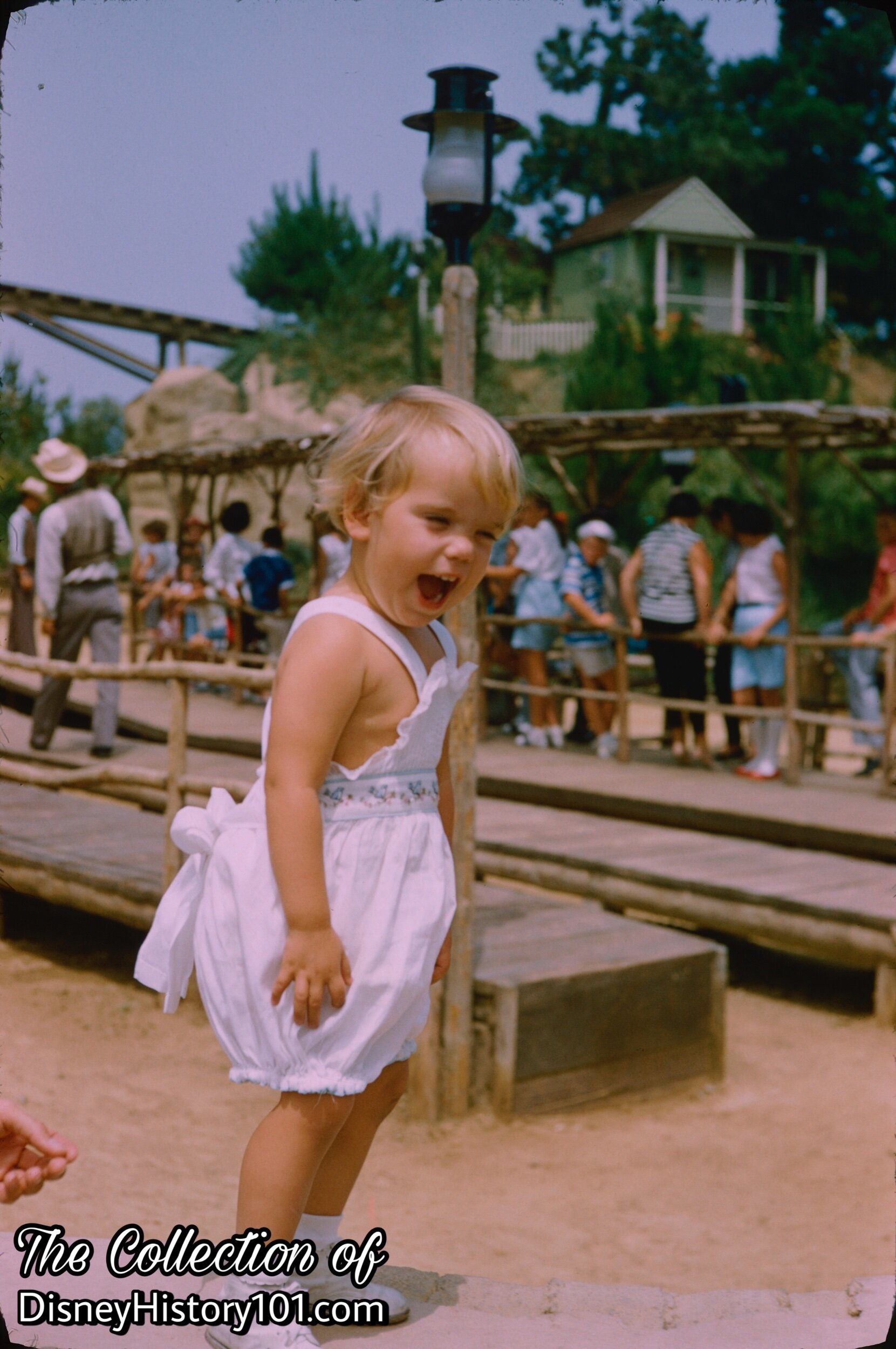
A young guest gets excited iver the Pack Mules at Rainbow Ridge, August, c. 1958.
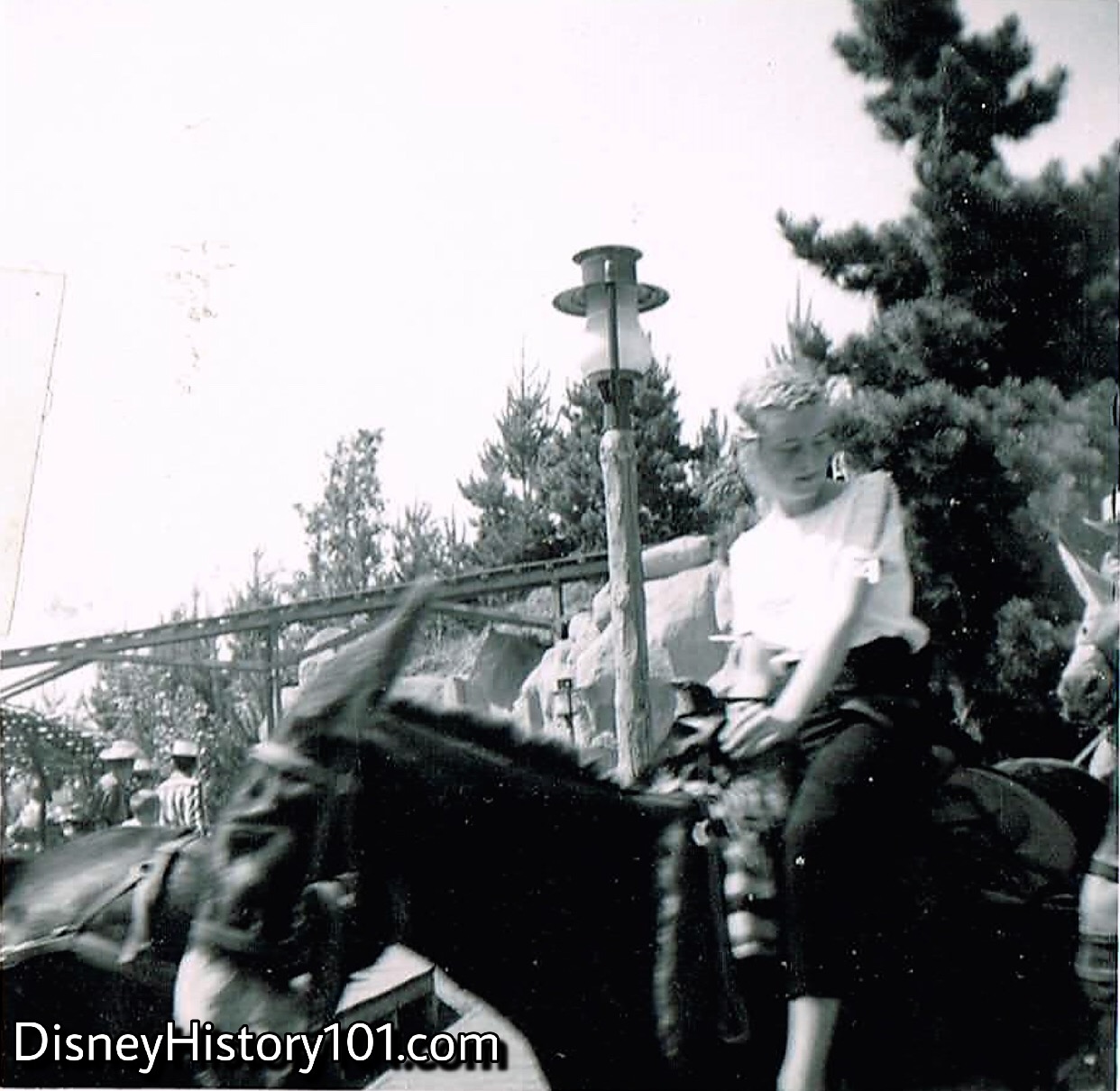
Pack Mules at Rainbow Ridge, (August, 1958)

Pack Mules at Rainbow Ridge, (August, 1958)
According to “Disneyland Inside Story”: “No animals in the Disneyland Pony Farm were more difficult to work with than the Frontierland Pack Mules. They began their show business careers by nibbling at guests' souvenir hats as they saddled up. When the operators got wise and started collecting the hats before loading, the mules occasionally retaliated by nipping shoes. One mule mistook a girl's long blonde ponytail for a ‘hay snack.’”
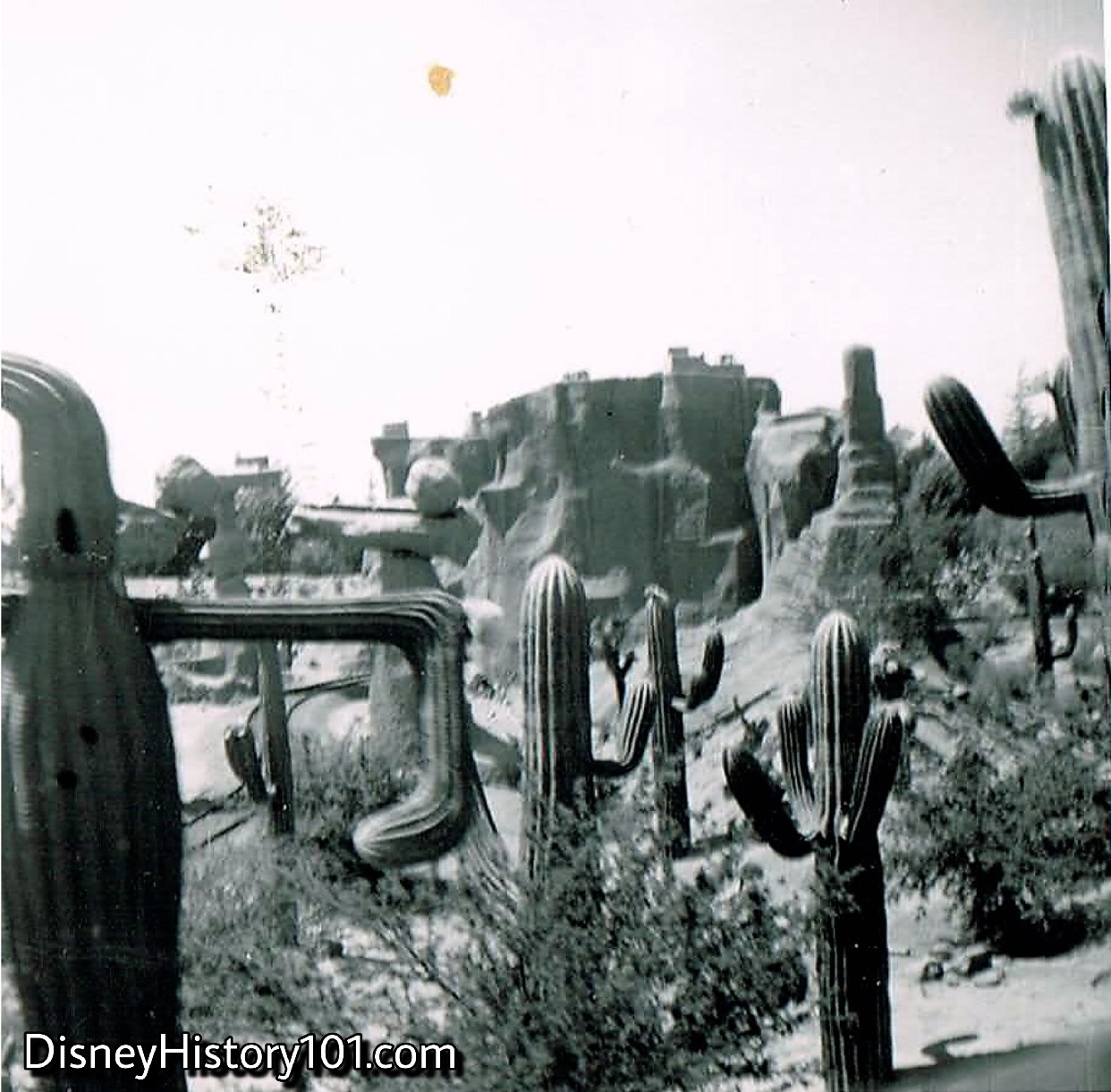
Rainbow Desert, (August, 1958)
The Rainbow Ridge Pack Mules offered alternate views of the Painted Desert along a route not taken by the ore cars.
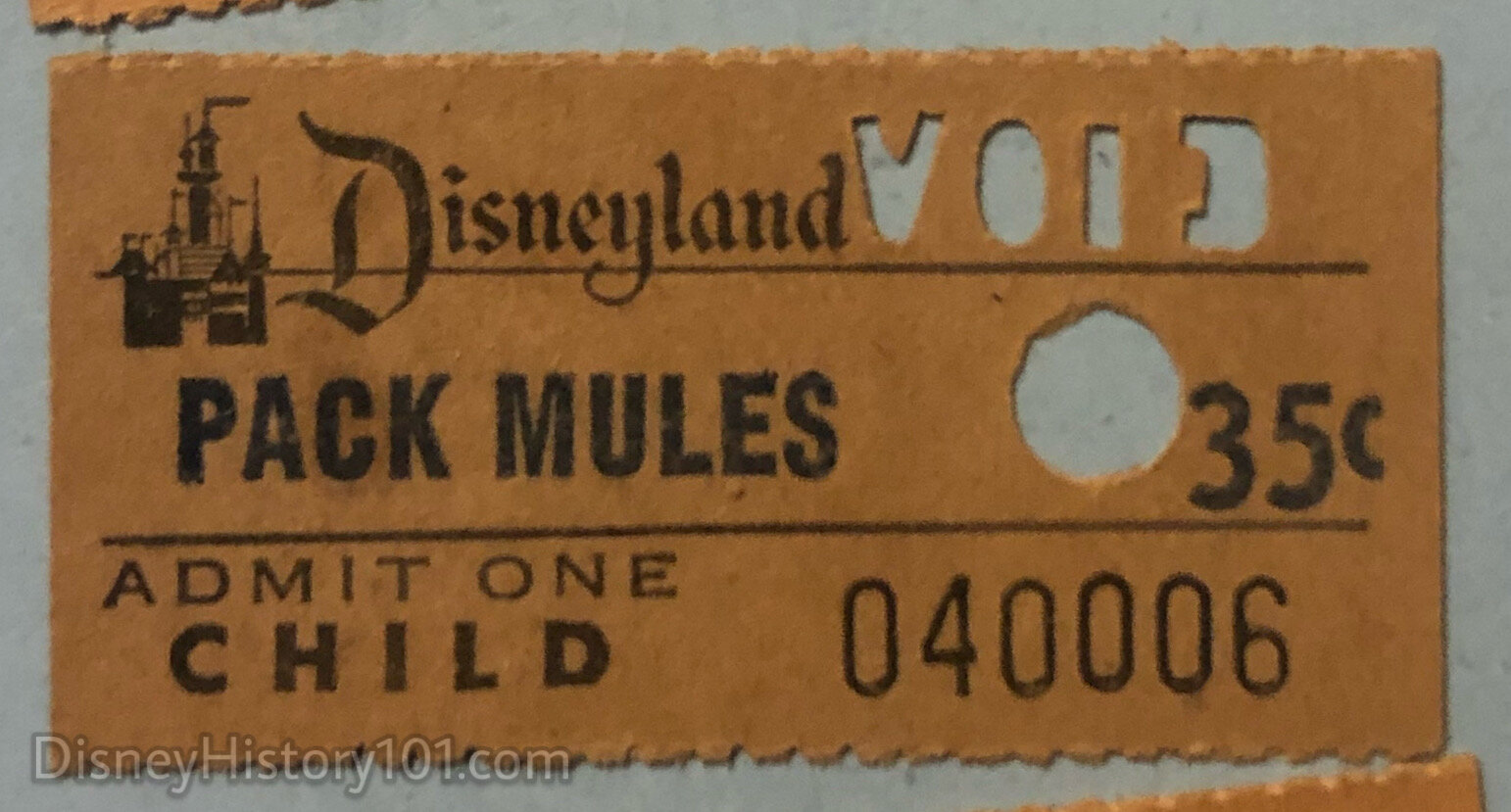
Pack Mules Ticket (1959), The Collection of James Keeline
The tickets (like the ones for other early attractions), were likely produced by Globe. According to James Keeline, “The price [for ADULT and CHILD admission] stayed the same for the first few years but the lettered individual tickets started to appear in this era too.”
“‘VOID’ was used when they wanted to have tickets to put on display in the park ticket booths if people wanted to trade them in towards passports, etc.”
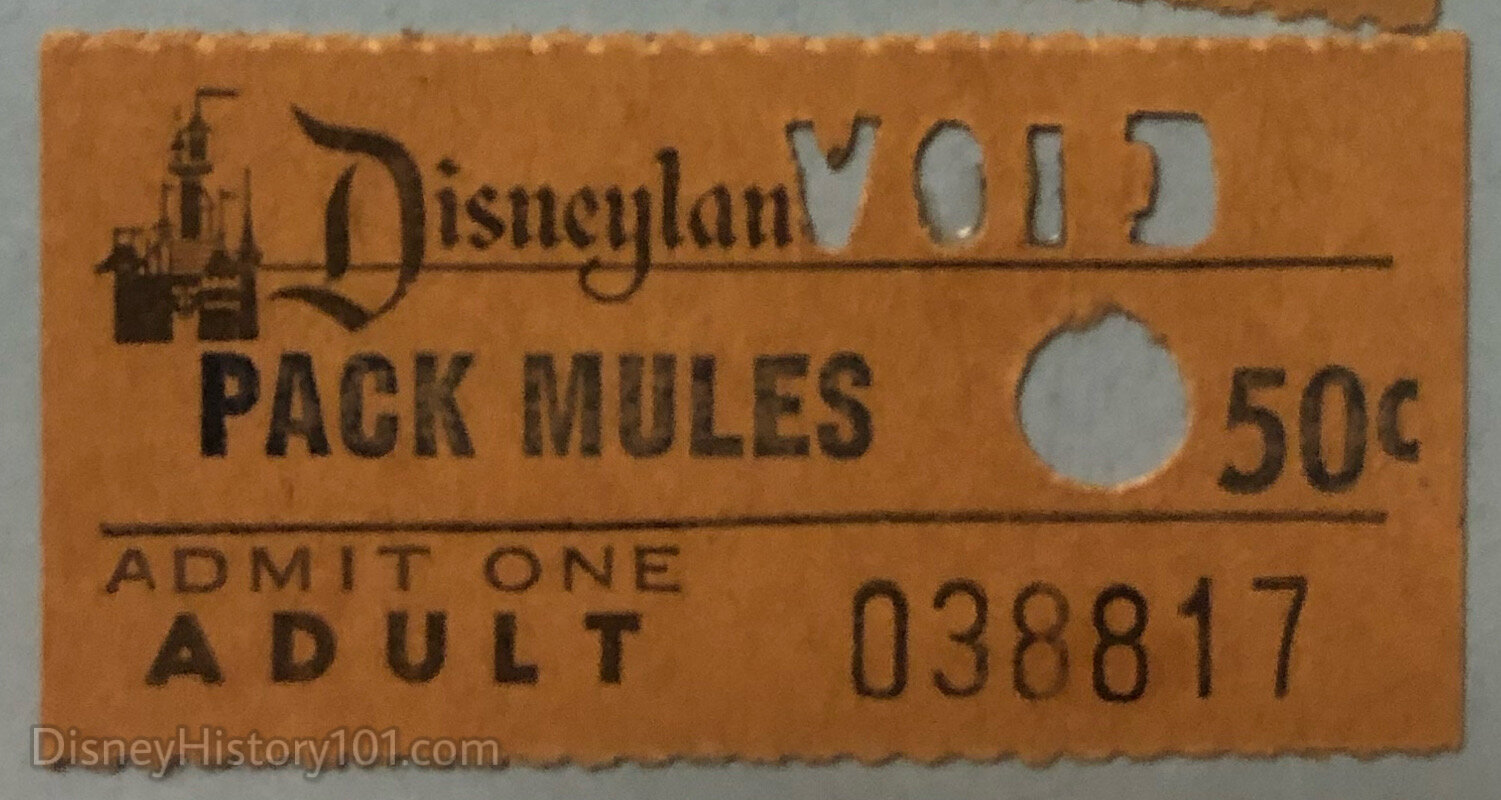
Pack Mules Ticket (1959), The Collection of James Keeline
Admission during 1958 just was one “jumbo” “D” coupon (the price of 35 cents, for one child), the same as the Jungle Cruise, Indian War Canoes, or the Tom Sawyer Island Rafts.
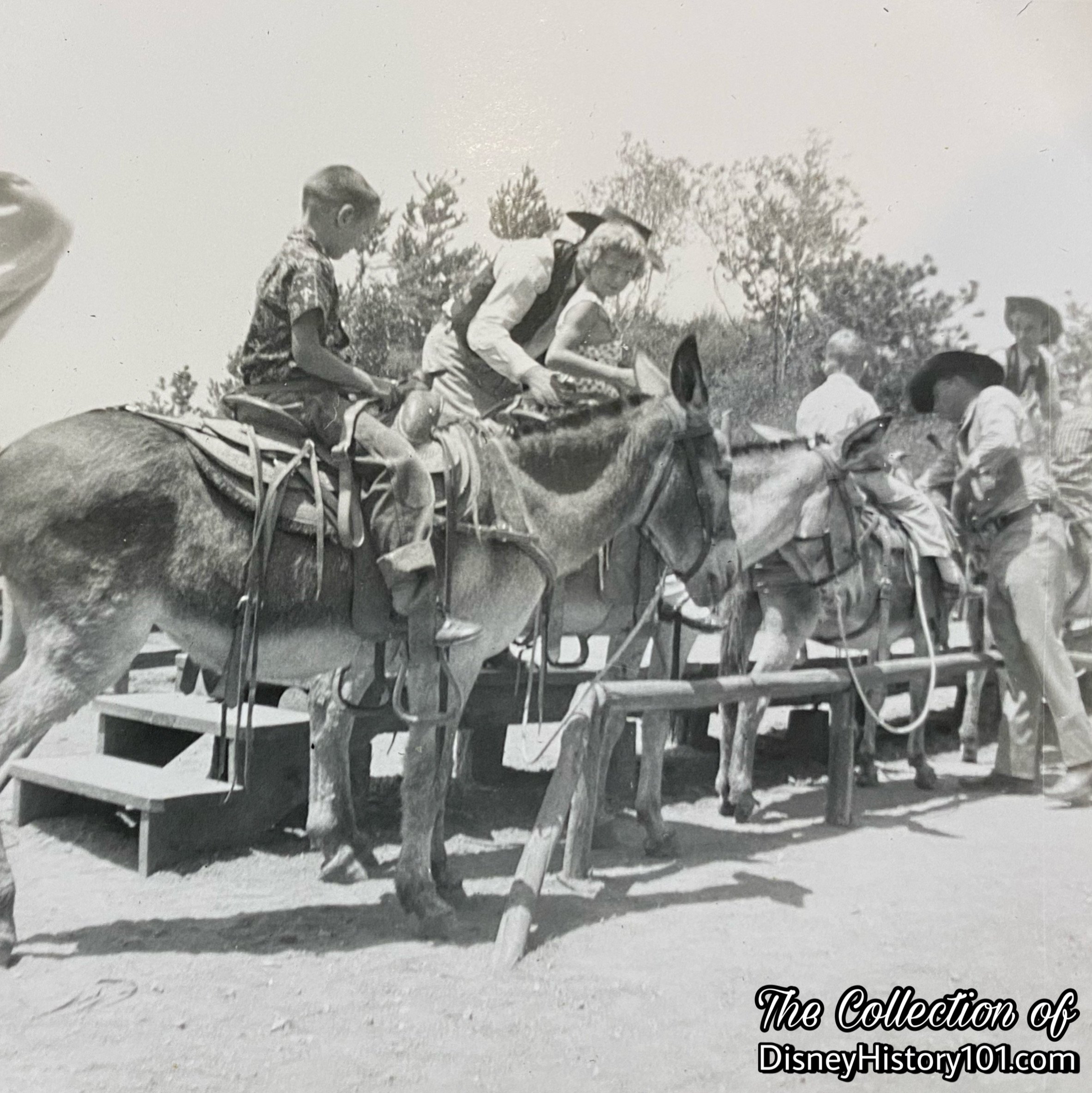
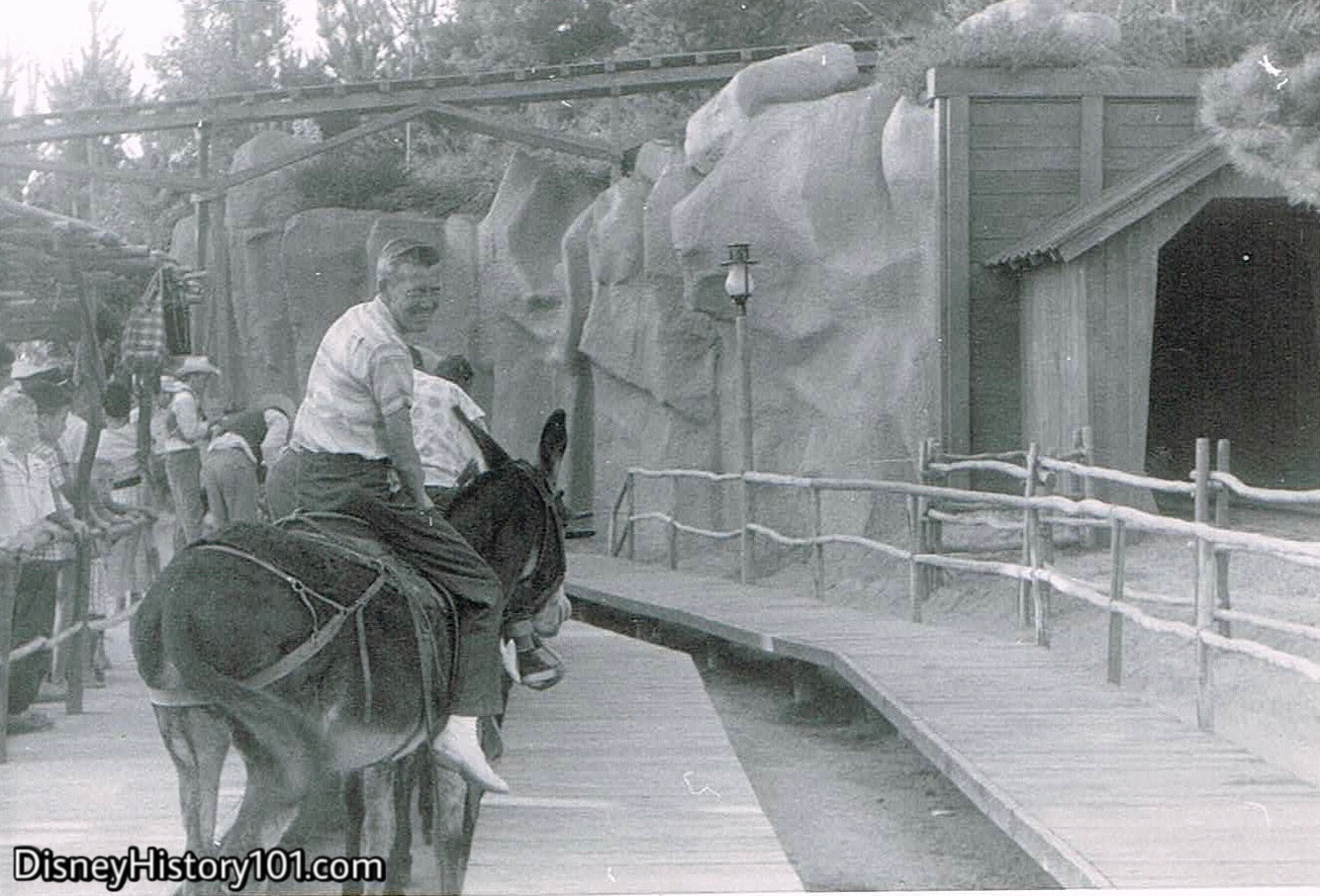
Pack Mules at Rainbow Ridge
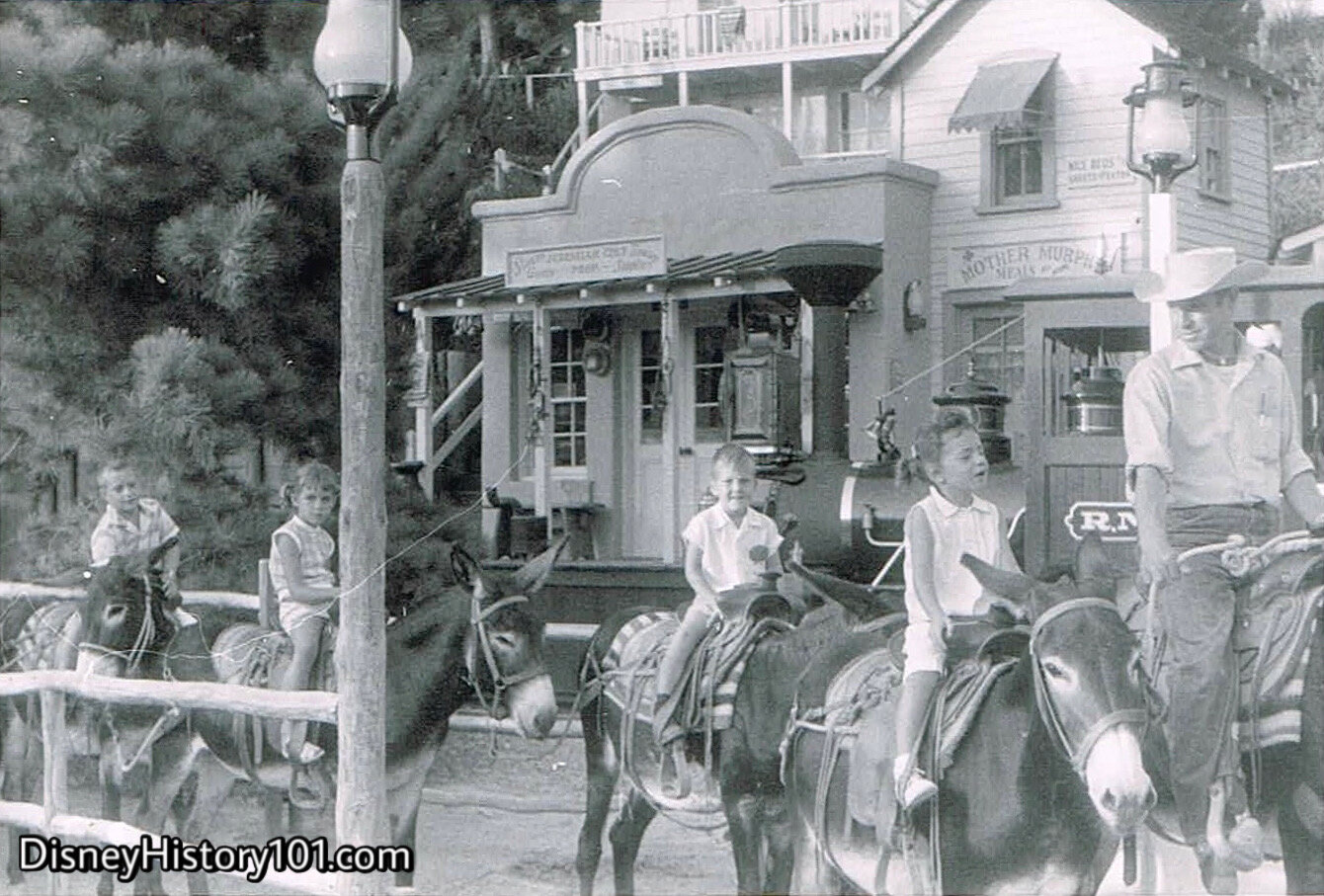
Pack Mules at Rainbow Ridge
While some prefer the gondolas of the Mine Trains, hardier pioneers find a tour of the desert via sturdy pack mule more to their liking!
In order to assure an adequate amount of transportation, mules and burros were kept at two locations. This is evident by reports of an appraisal was conducted (from 1958 to 1959) through Bank of America, to qualify Disneyland, Inc. for a loan that would support a massive expansion of Disneyland.
During 1958, a couple of Bank of America District Appraisal Officers (William Smith & K.E. Johnson) appraised the livestock owned by Disneyland, Inc. Located in Disneyland, Orange County were found five small mules (ages 4-7; valued at $125 each) and 50 burros (ages 4-10; valued at $50 each). Other animals were pastured at Rock Creek Ranch in Llamo, California. There, were 35 burros (valued at $35 each) and five small crossbred mules (valued at $75 each) subsiding on pasture grass and alfalfa. A final account revealed that there were 88 burros (3 at Disneyland, 85 pastured) and 11 mules (4 at Disneyland, 11 pastured).
Appraiser representative (e.g. K.E. Johnson) of the District Appraisal Officer (J.C. Biggers) of the Bank of America Fullerton Branch was sent to Disneyland in November of 1959 to inspect assets including the related equipment and livestock. In addition, the mules and burrows were also appraised - one mule gelding valued at $100 a head; two burrow mares valued at $50 a head, totaling $350; 4 burrow geldings valued at $50 a head, totaling $200.
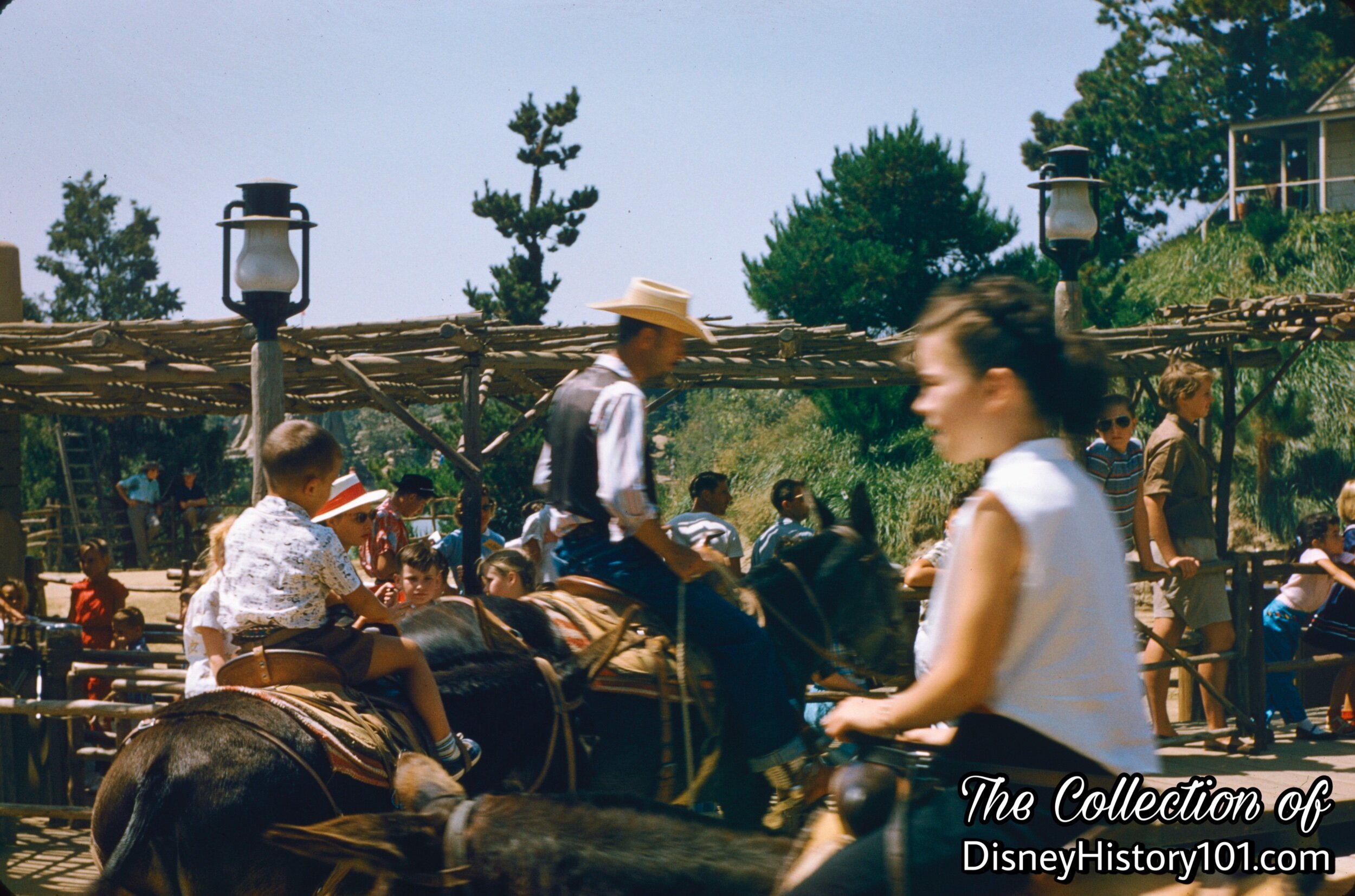
Pack Mules at Rainbow Ridge, (1950s)
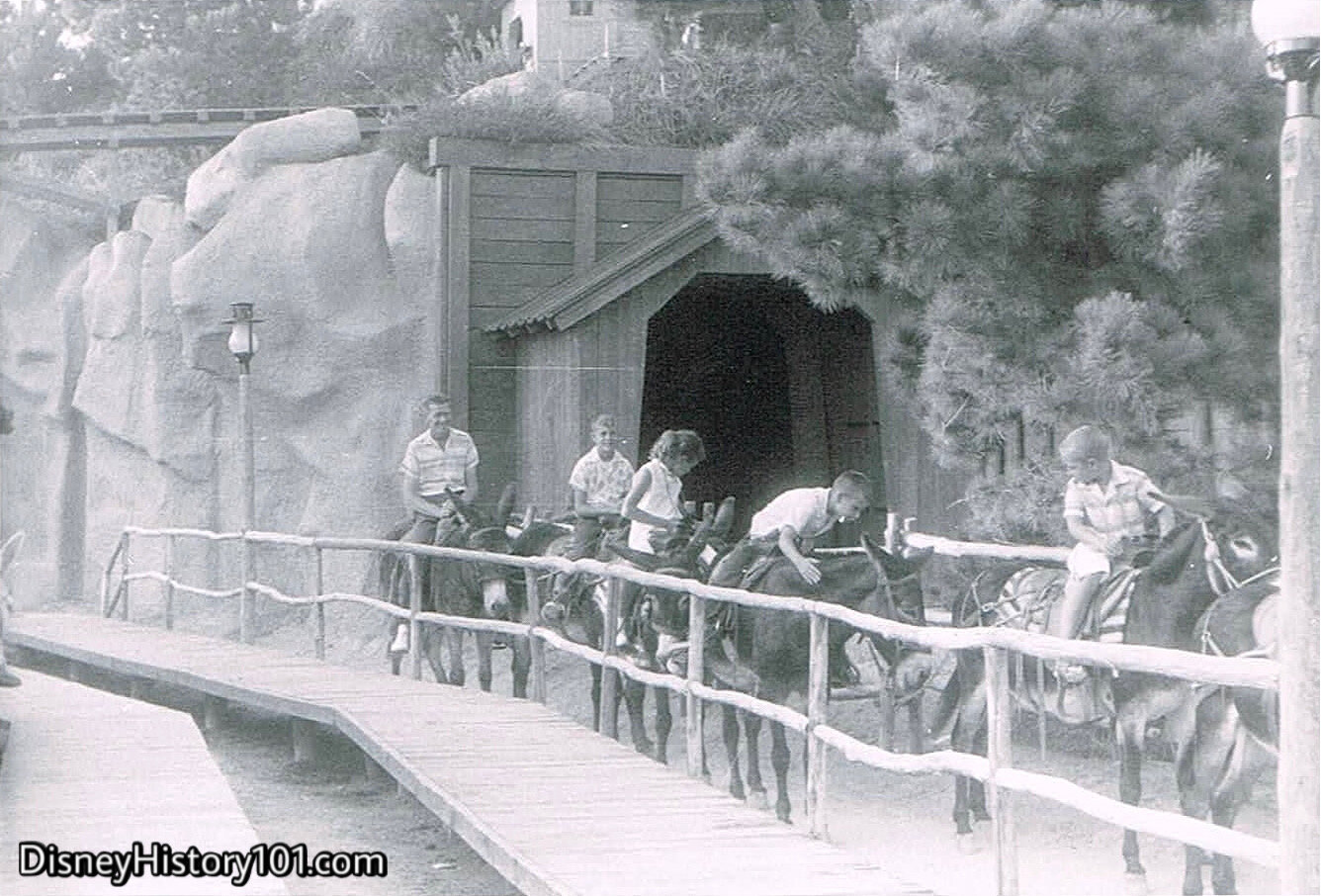
Pack Mules at Rainbow Ridge
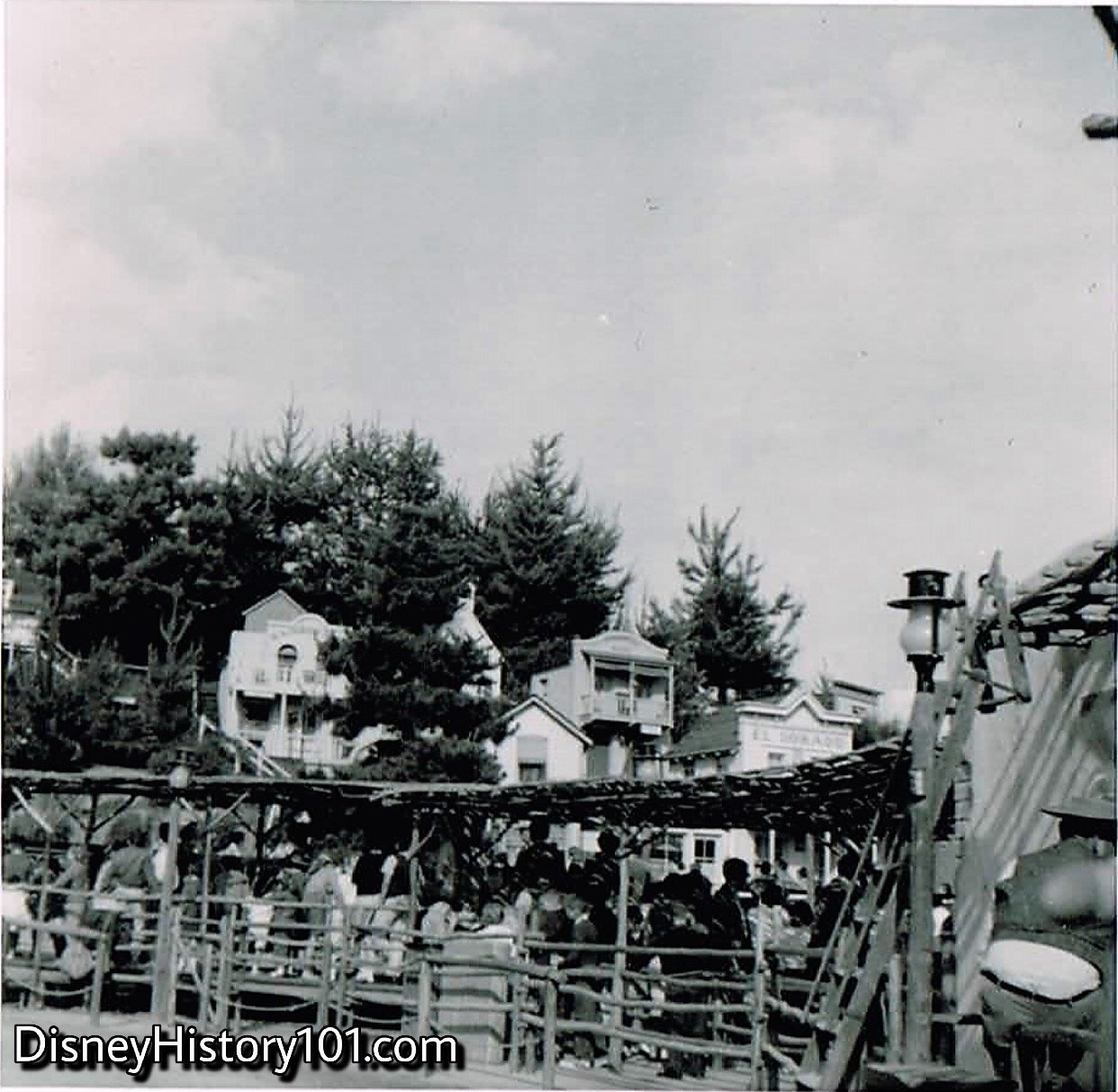
Pack Mules at Rainbow Ridge, (1959)
The Rainbow Caverns Mine Train attraction (of 1956) brought scenic “natural” wonders to the mule train route. That same year, a covered awning (similar to the ones in the Mexican Village) was added to the queue to protect guests from the rays of the sun before ‘saddling up’.
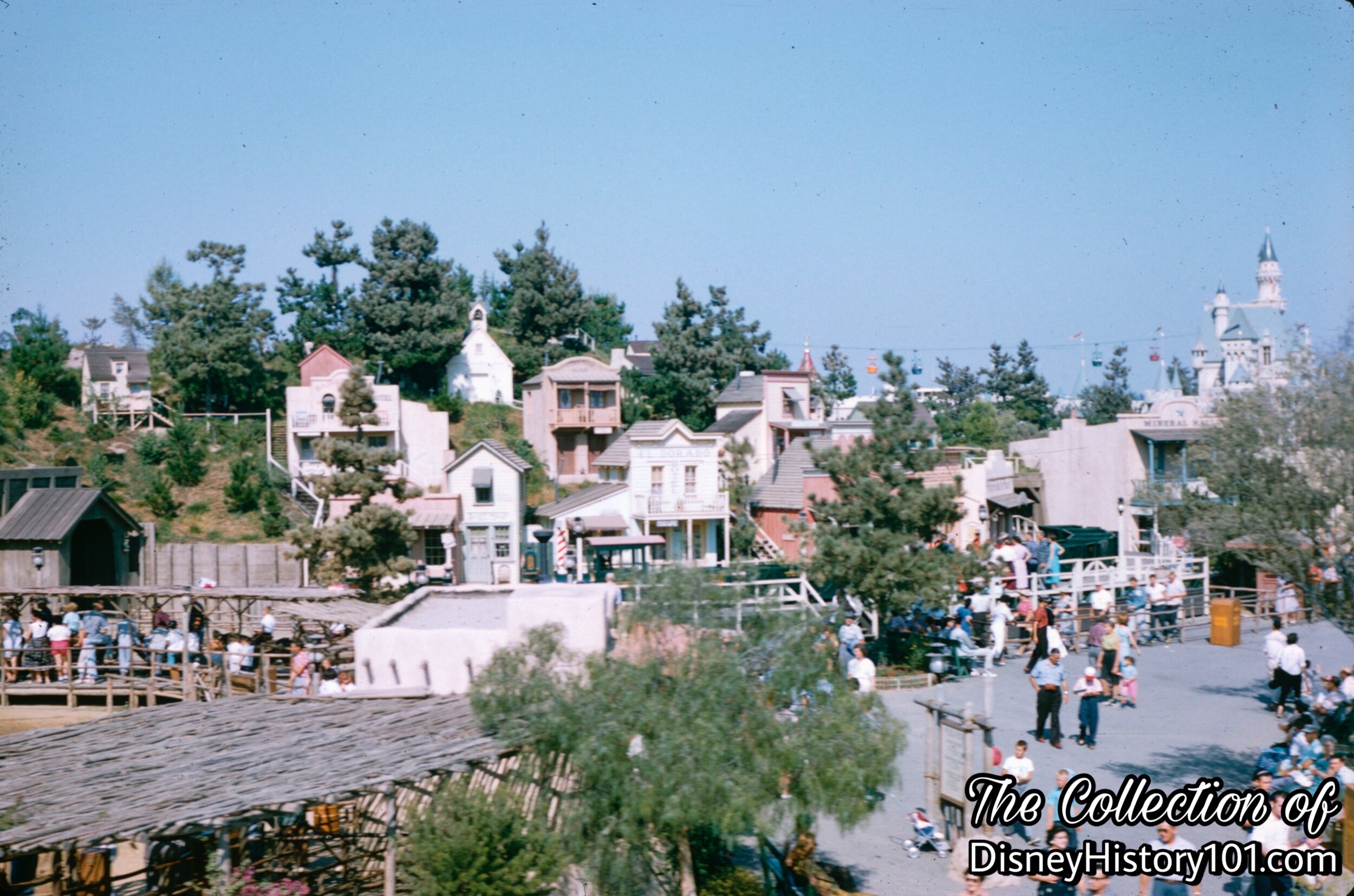
Mule Pack Queue and Loading Area at Rainbow Ridge
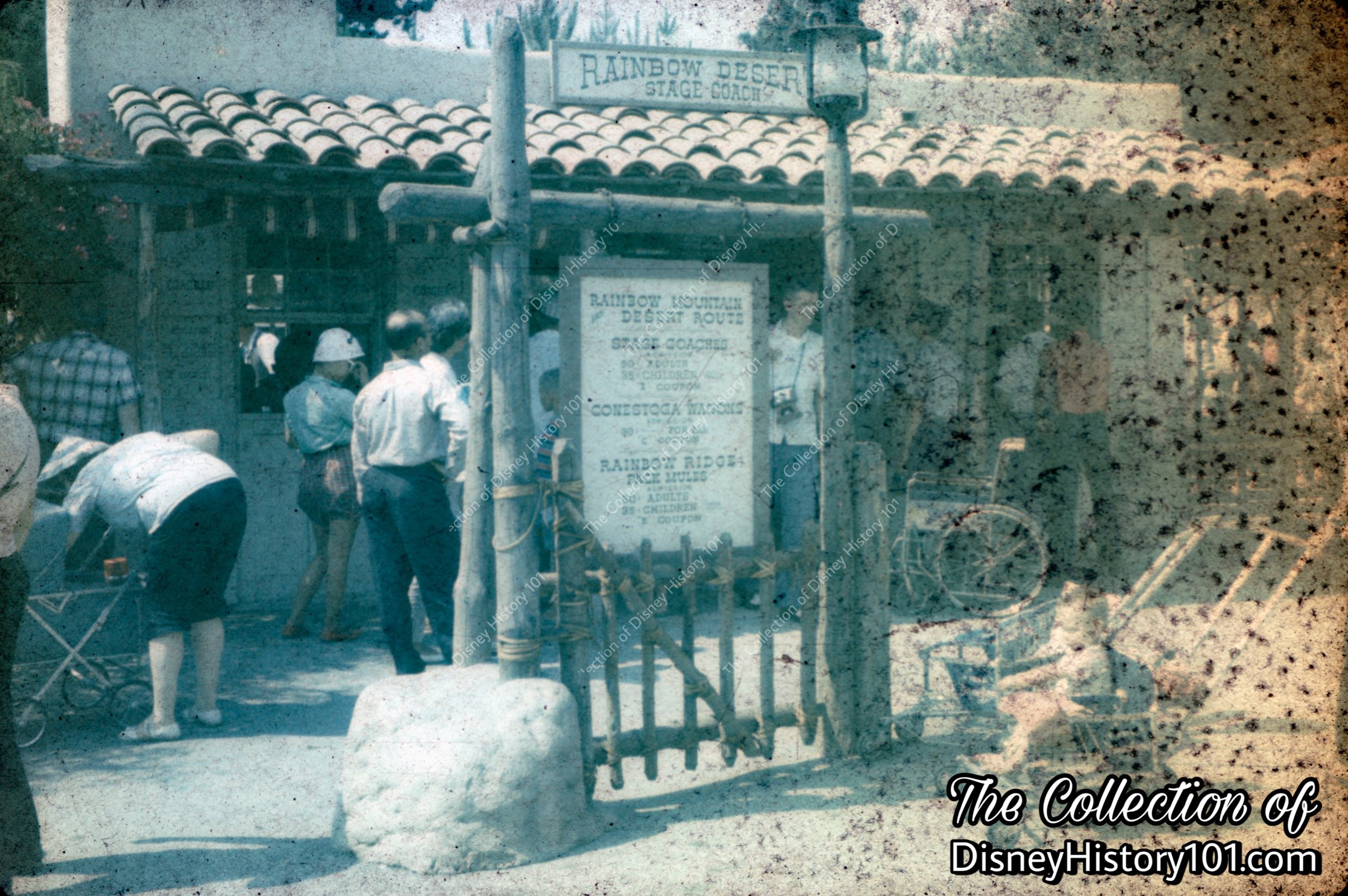
Once upon a time, Mule Packs, Conestoga Wagons, and Stagecoaches transported guests through the Rainbow Desert. This was the scene until July of 1959, when the horse-drawn vehicles began to disappear from Frontierland. During that year of 1959, Joe Fowler was Vice President of Disneyland Operations Committee and Doc Lemmon of Disneyland Operations was overseeing Operators of Rides & Amusements (like the Mule Packs, Conestoga Wagons, and Stagecoaches), Livestock, Parking Lot, and Ticket Sellers.
By this late date of October 4, 1959, several related direct purchases had been made including “16 saddles special rigged with a 14” seat” valued at $1,248. That very month, the first printing of the internal publication “Disneyland Dictionary” described the adventure in this way: “Pack mule ride into the mother-lode country of old West on mules such as were used by gold miners and settlers of the era.” By this time, the Rainbow Ridge Pack Mules consisted of two (2) packs - one (1) lead horse and nine (9) mules in each pack.

(June 10, 1960 - December 9, 1973*)
*Some sources state February 1st, 1973 and December 9th, 1973, while Disneyland LINE asserts October of 1973.
In 1960, a brand-new “seven acre composite True-Life Adventure called Nature’s Wonderland” would be “based on elements of four Disney films - Beaver Valley, Bear Country, The Living Desert and The Olympic Elk… a journey by mine train or pack mule into a wilderness populated by more than 200 life-like animals, birds and reptiles,” according to “Walt Disney Disneyland,” page 44, printed by Officine Grafiche Arnoldo Mondadori - Verona; first published 1964. Yes, the mules would now embark along a trail that offered alternate vantages of The Living Desert and the rest of Nature’s Wonderland! Youthful explorers could now see the “back country” of Nature’s Wonderland from the back of a sturdy and sure-footed pack mule, from dawn ‘til dusk.
As quickly as the Bounding Big Horn Sheep appeared atop Cascade Mountain (among the approximate 200 critters), it quickly disappeared so as to not threaten the mules. Precautions were also taken to not frighten the mules passing over Natural Arch Bridge. Operators would refrain from ringing the bell or blowing the whistle while the Mine trains passed below.
Back in 1957, Disneyland maintained around 200 head of horses, ponies, mules, and burros. Despite all the equine-powered vehicles at Disneyland, most of these “200” were mules and burros. By 1962, Disneyland had a total of 195 horses and mules [according to an article by Art Linkletter published in The Ford Times Guide To Travel In The USA, published 1962]. Of course the latter figure still mostly included the mules and burros (98 mules and 68 burros were most of the head of horses kept by Disneyland by the summer of 1966). One may wonder why there were so many mules on hand and the reason is because the Mule Trains consisted of eight mules, and there were as many as “10 trains running during the summer” seasons, accruing to Backstage Disneyland (Summer, 1966).
None of these animals worked more than 4 hours a day, six days a week. When they weren’t working, the horses were stabled in clean and individual tie stalls, while the mules and burros had their own corrals and lots. “They receive excellent care, as does everything connected with Disneyland. Gear is kept clean, polished, and in good repair. A full-time farrier is kept on hand, and barns, stalls, tackrooms, and corrals are kept spic and span”, [according to The Western Horseman, published September of 1957].
According to “Disneyland Inside Story”: “Although blessed with extraordinarily short work hours, the mules would stop for no apparent reason along the trail and refuse to continue, regardless of the verbal lashings applied by the mule skinner. And almost anywhere, at any time, one of the creatures would break into a loud and repetitious series of brayings that sounded astonishingly like ‘hee haw.’”
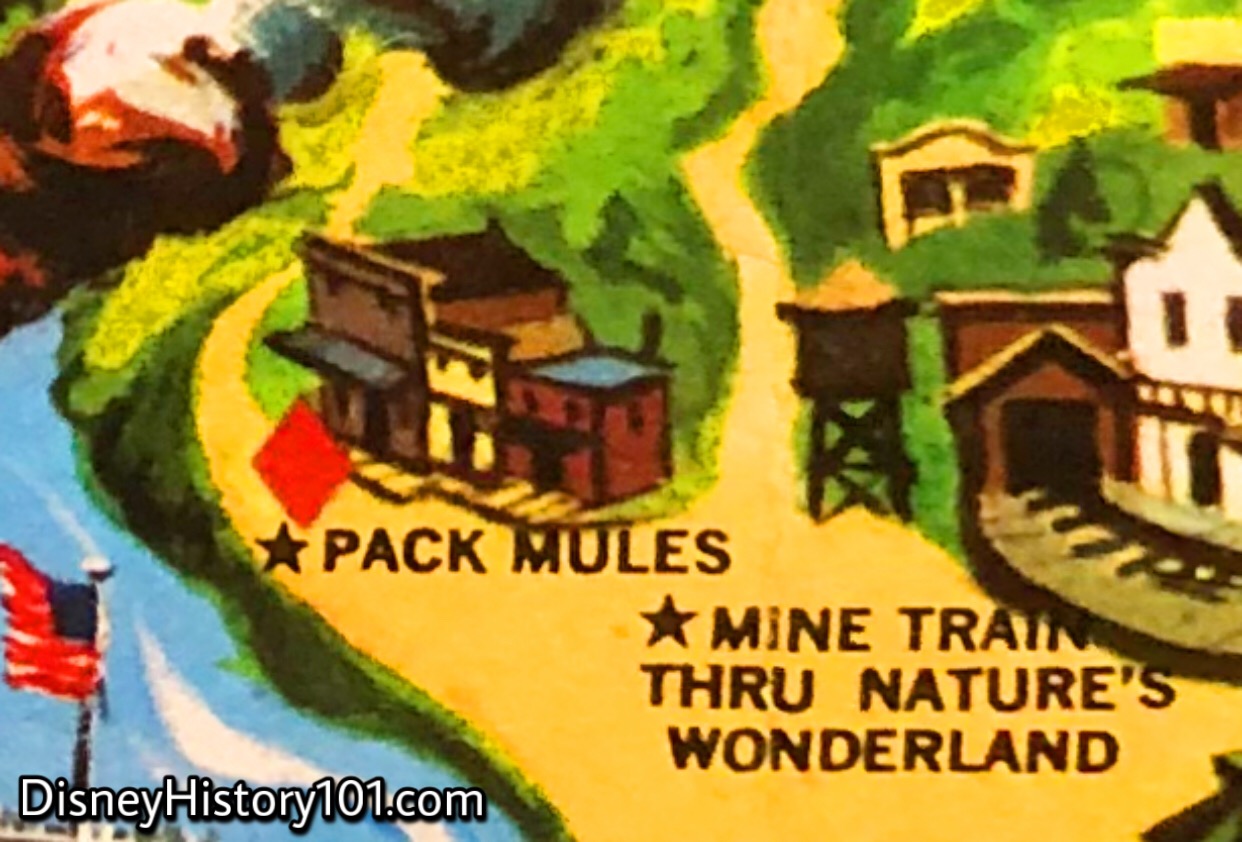
Disneyland Map Excerpt
In 1965, Backstage Disneyland published the following short report: “Famous Mule Master, WALT BRICKER, placed his feet comfort ably on his ‘desk’ in the old Blacksmith Shop at Rainbow Ridge. ‘Yessir,’ he mused, ‘It was quite a Summer. Had one of the finest crews in the Park. Broke the ride record on July 14 with 3848 guests carried. The riders and loaders operated together as a team.’ Then he told how the operators were all taken to Owen Pope's Pony Farm to see the magnitude of the Disneyland equestrian operation. The mules consume a ton and a half of hay a day and, thus, must work to pay for their keep. Each rider lines up his (or her) string of mules and then combs, grooms and saddles each one.
JIM LINDSAY, foreman of the riders, is tremendous with the animals and calls every mule by name. He personally rides every new mule to see if he is safe for the guests. If a shoe becomes loose on one of the mules, Jim opens his old tool chest in the Blacksmith Shop and removes the shoe.
Walt tilted farther back in his chair and his eyes twinkled. ‘Sure have some good looking girl riders,’ he beamed. And that CAROL SPAETH is a real sharp horse trader. Watch out for her.’ ‘And take that DANNY JOHNSON. She is quite a gal with animals. She can out work most men. She used to saddle forty horses at her father's stable before starting her shift at Disnevland.’ CHARLEY YATES is an old timer. He used to be a jockey. AL HOWRY used to ride for Betty Grable. FLETCHER SKELTON comes from New Mexico where he used to punch cattle. He still rides a horse as if he was on the range, spurs and all.’”
Another rehabilitation ended with an extended Loading Dock added for the summer of 1966.
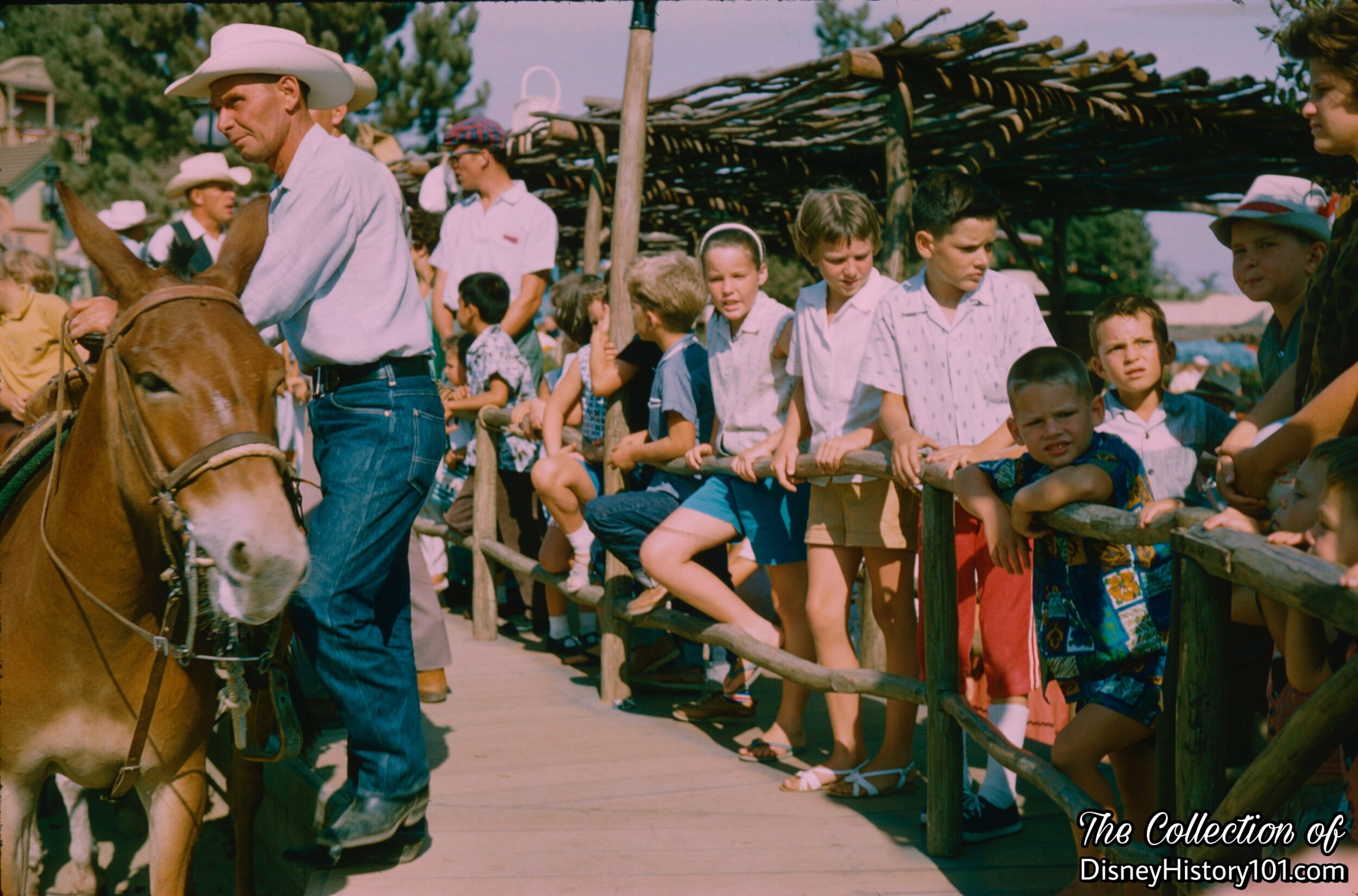
Pack Mules Attractions Hosts (possibly Charley Brock, left) and Guests at Rainbow Ridge Guest Control queue area, August 4, 1960.
Charley Brock recalled: “Well, one day we were workin' 10 string o' mules in the Park and the Santa Ana winds got to blowin' Limbs were fallin' on the trail. There was a big tree at the end of the loadin' dock and it started cracklin. I stopped loadin' and I was scared and shakin' as the tree kept creakin. I had just got my last string out when the big tree fell with an awful crash!”
Disneylander and “55er” Frank Pfannenstiel went to work on the mules in 1961. Eddie Dixon also alongside the chute where his mules were bein’ loaded.
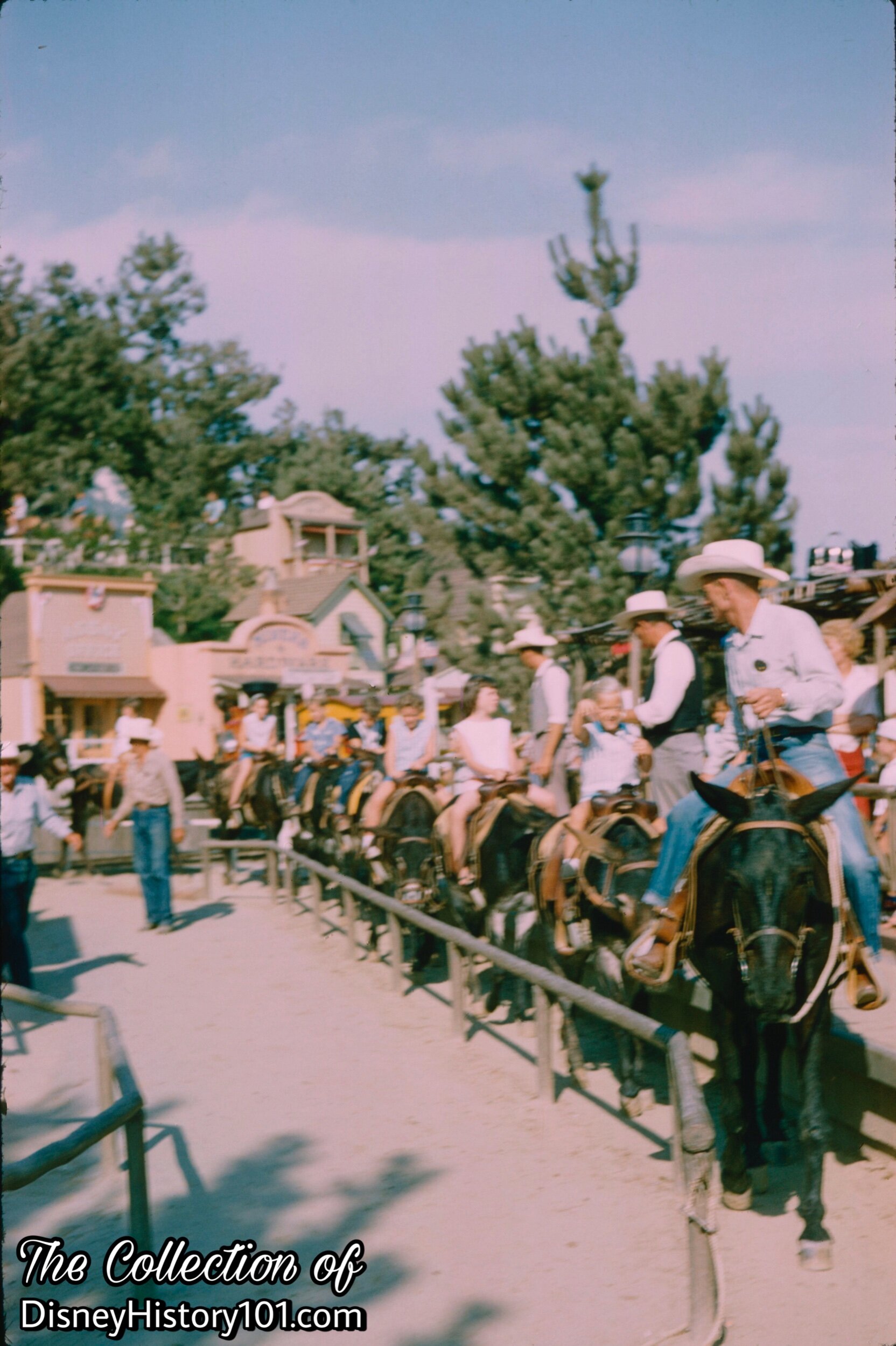
Pack Mules at Rainbow Ridge, (August 4, 1960)

Pack Mules at Rainbow Ridge, (August 4, 1960)
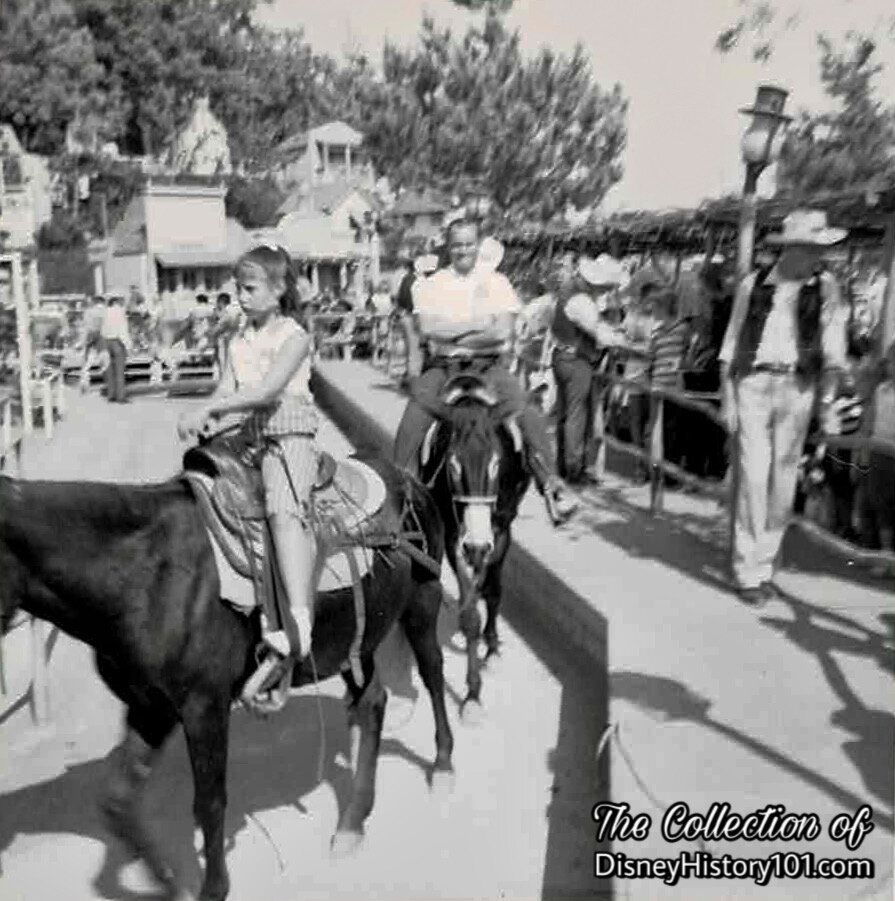
Mule Pack, (December, 1961)
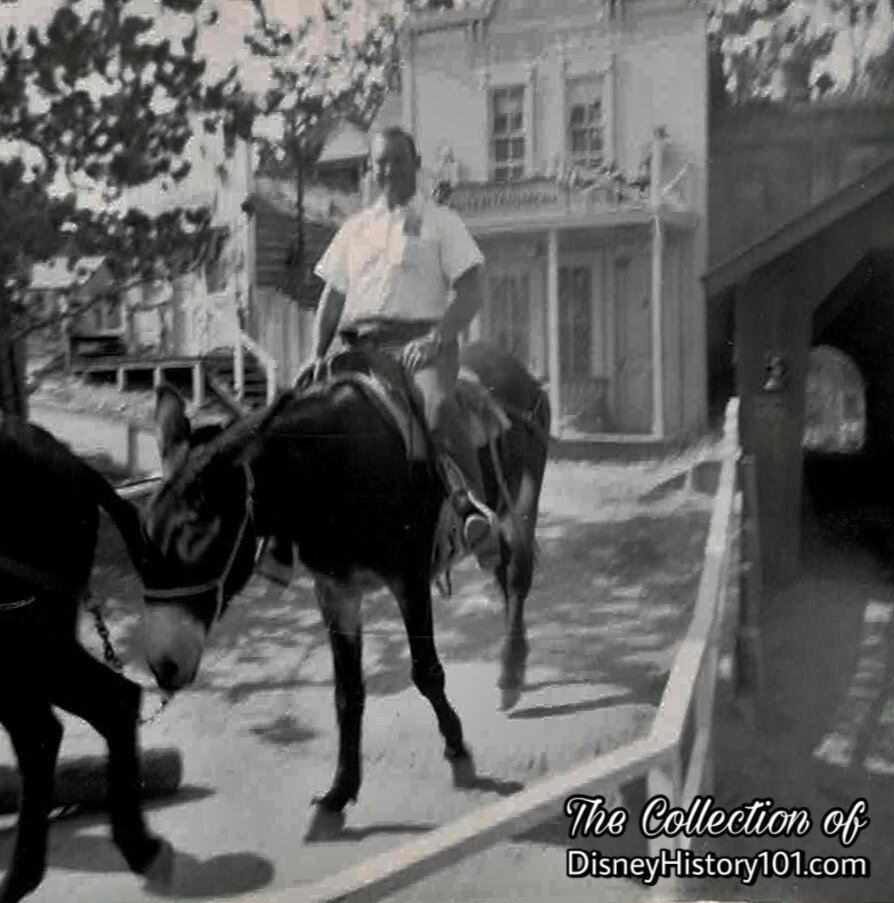
Mule Pack, (December, 1961)
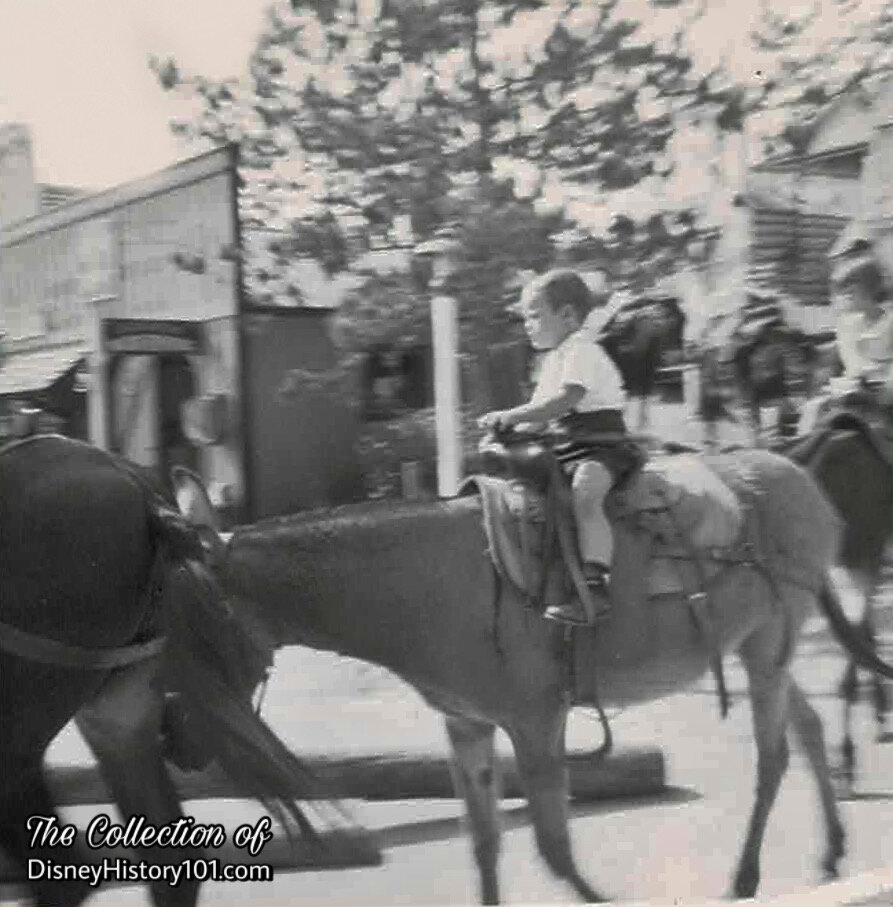
Mule Pack, (December, 1961)
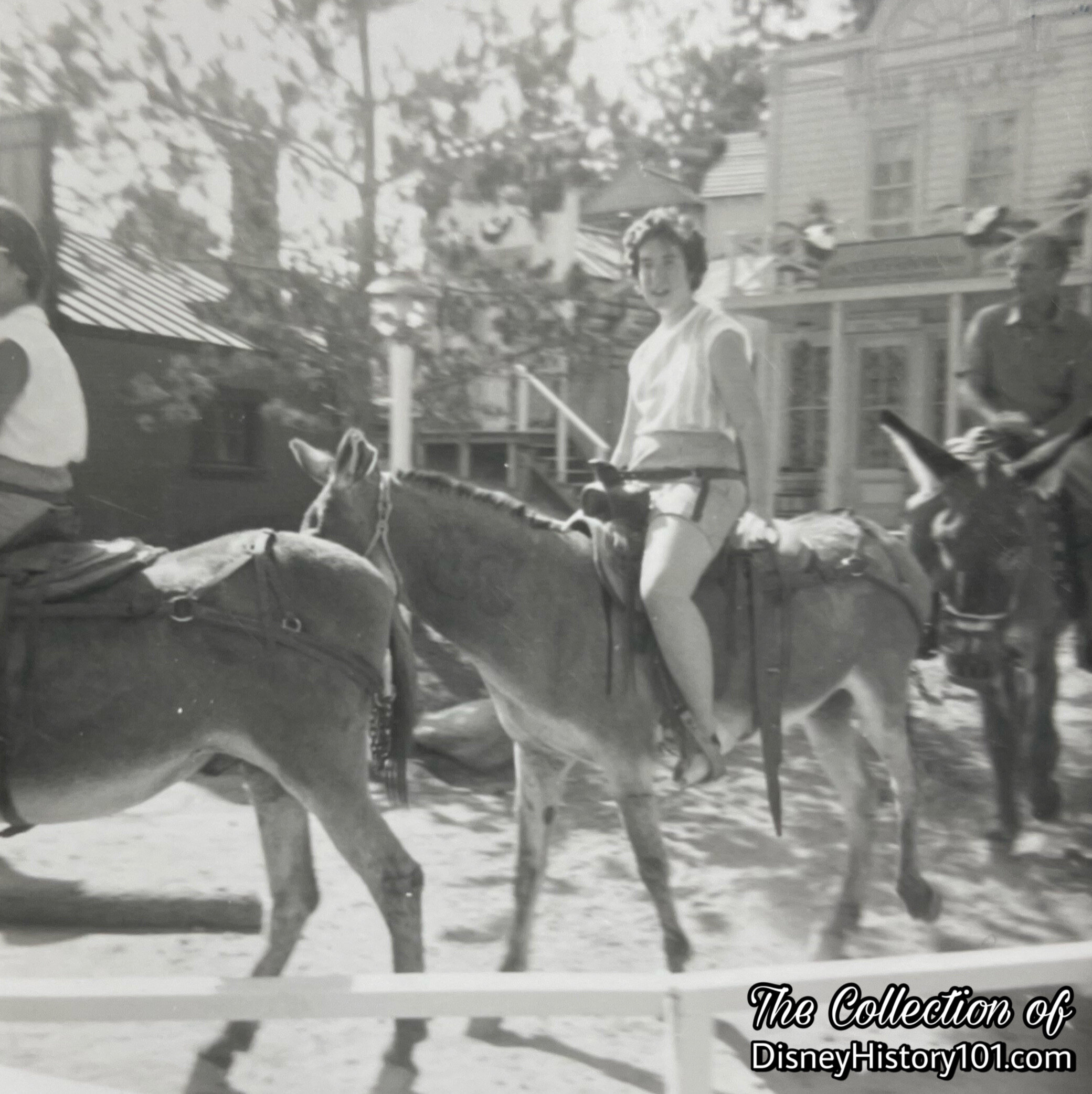
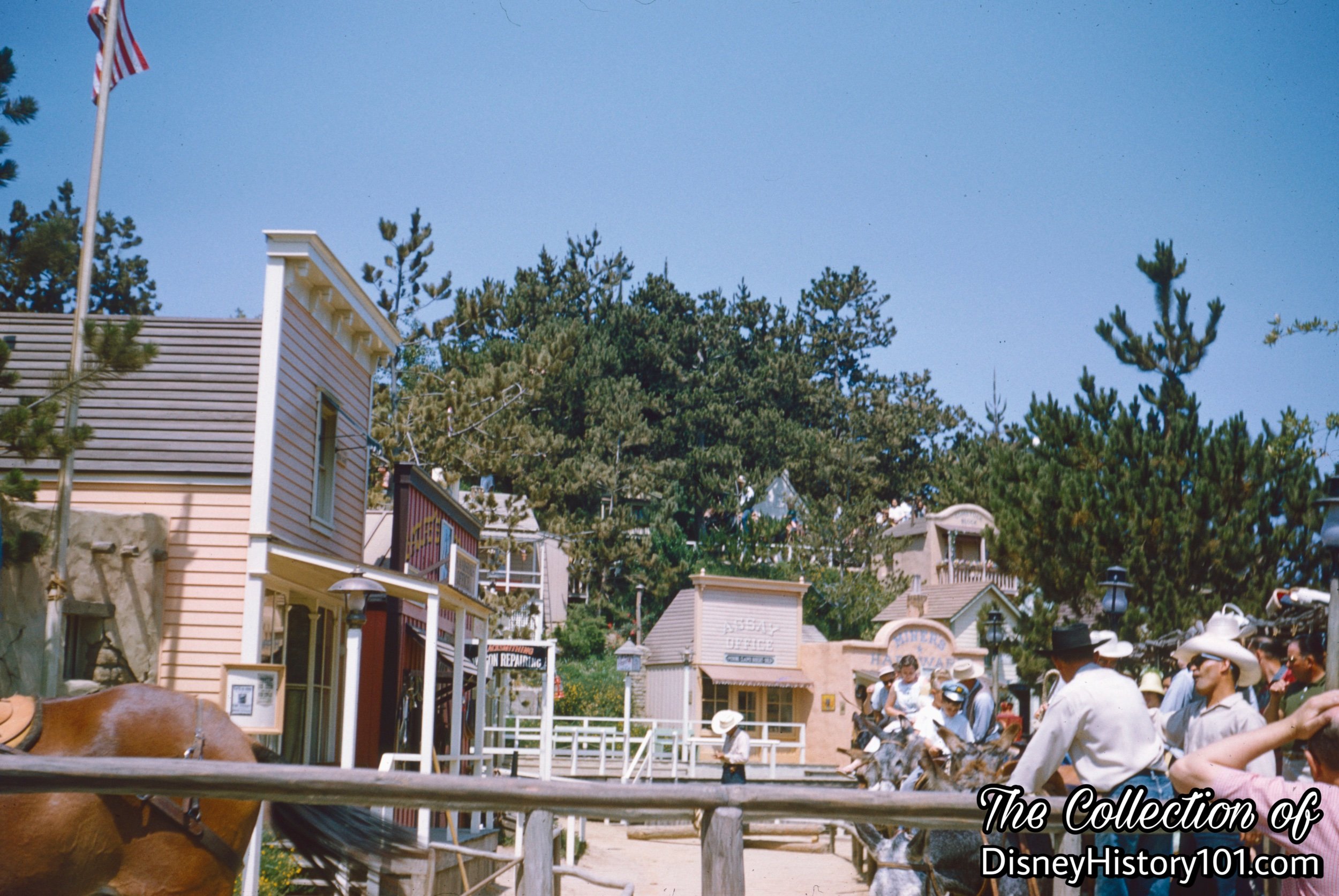
The Mule Pack Ride was occasionally featured in media. For instance, in August of 1962, Lloyd Richardson, Larry Clemmons, Joe Marquette, Coy Watkins, and Jack Leppert (of the Walt Disney Studio) filmed and shot scenery “(1) near the fighting stags, (2) behind a building in Rainbow Ridge and (3) on the Mule Train itself,” for Studio Production #3185.
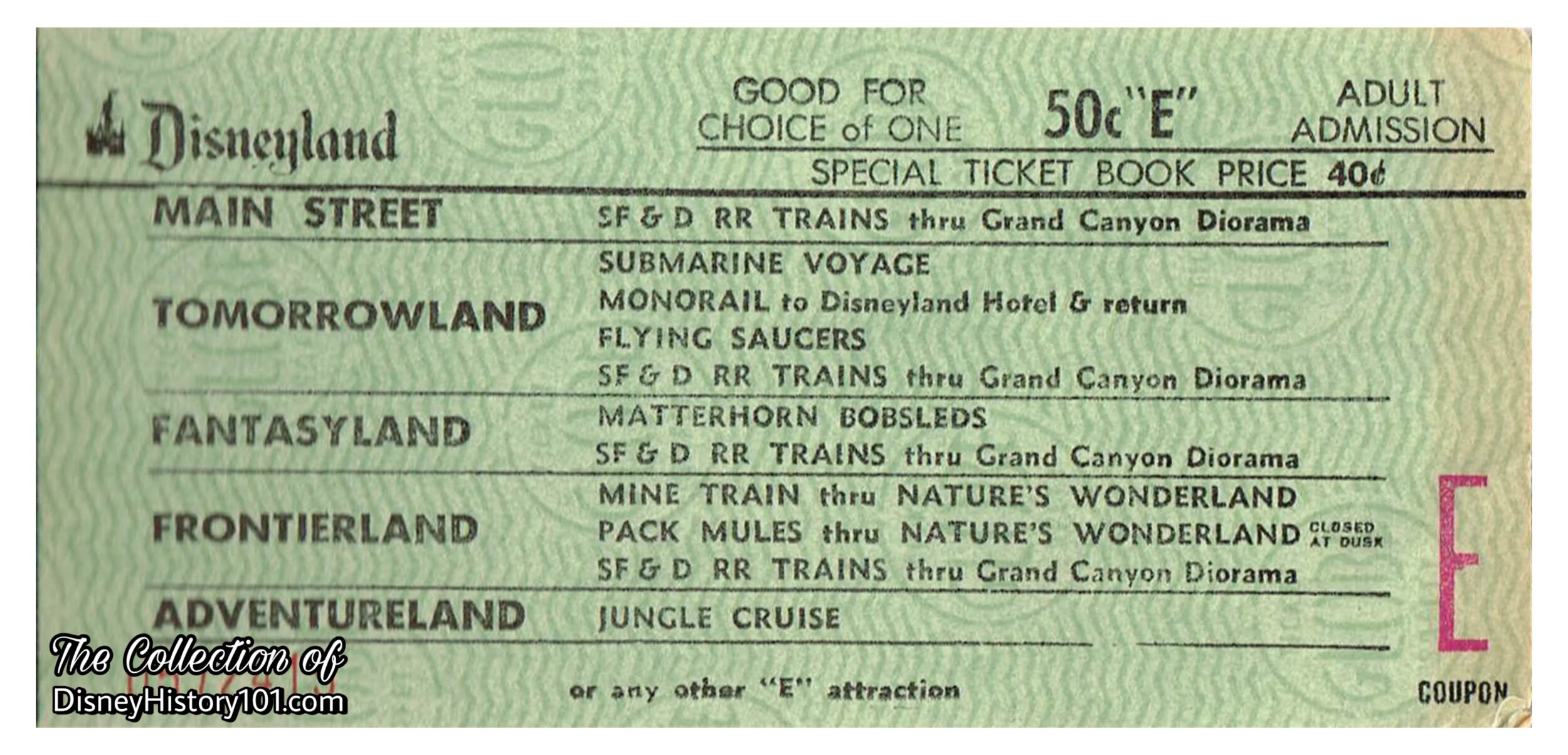
Disneyland "E" Adult Admission Coupon, 50¢ Value, c. 1961-1964.
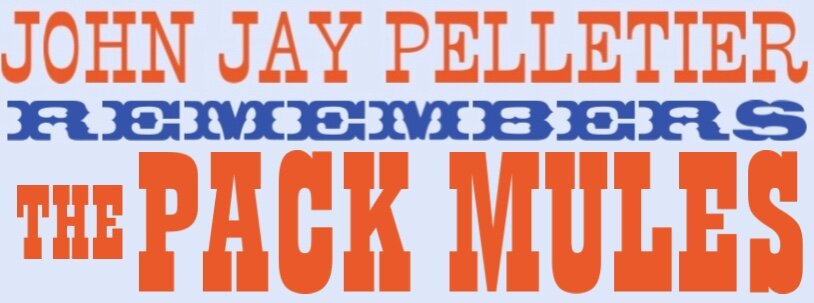
Many notable Disneylanders had a privileged part in the Pack Mule rotation - the set order of operating positions established by the attraction's Working Lead. Plenty of Disneyland Cast Members had their start as Mule Riders, like “55er” Charlie Brock, Mike Leslie (eventual successor of Disneyland Pony Farm Supervisor Day Sechler), Walt Joseph Jackson Brickner (who was often mistaken for either Walt Disney or the late Clark Gable), and Eddie Dixon (another c.1965 Cast Member). Many of these had a passion for working with equine and most animals, like John Jay Pelletier. This is John’s story :
“I had just come from canada in 1960 and gone from country living to city living. I think in 1961 dad had just got a new job and took the family to Disneyland. At that time they had Tom sawyer’s Island (and I enjoyed that), the canoes, and the mule train. I was 15 the first time I went. Mom and dad loved the jamboree and the Golden Horseshoe saloon. We had ice cream, pop corn, apple candy, and that sort of stuff. I remember the fantasy of it all, and the characters. That was my first experience with Disneyland.
Then there was a Grad Nite. The gal I dated was a senior, and I had never seen Disneyland at night. It was all lit up, and so pretty. I lived in Fullerton and if we got on top of the house we could see the fireworks at night. One of my teachers worked for Disneyland, and mentioned that Disneyland was hiring. A friend of mine said, “Do you want to go work for Disneyland?” Come middle of may of 1965, he got a job right away on the monorail, and the Horseless Carriages, and the train. I never got the call, and went to work with my dad in the oil fields. I got the call [later] in the middle of June, and they asked if I had experience working with animals and mules. They said we have an opening on the mule train, and the pay starts around $1.75 an hour 1965. So, I went to work for the mule train, and the next thing I knew, I had my own train. I would load the kids, get the animals, feed them a little, give them a break, and then get back in line and do it again.
Having been raised on a farm in Canada, I learned to saddle up horses and teams of Mules to pull logs out of the forest. So I felt at home…it was fun. The hardest part was to tell people that they were too big [to ride]. Kids were the best, …I spent time with each one while adjusting the stirrups. I always carried pieces of carrots in my pocket for the stubborn ones. Mertal always got excited when she would see me. She knew I had carrots for her.”
The Mule Team was particularly close. Charlie Brock recalled one Thanksgiving. “There was a girl rider, name of Margaret Karl, and she said that she would fix the turkey and everybody to bring the trimmings. She brought a tablecloth and set the table in the old mule shed. She had a 23 pound turkey, and we had olives, cranberries and punkin' pie!”
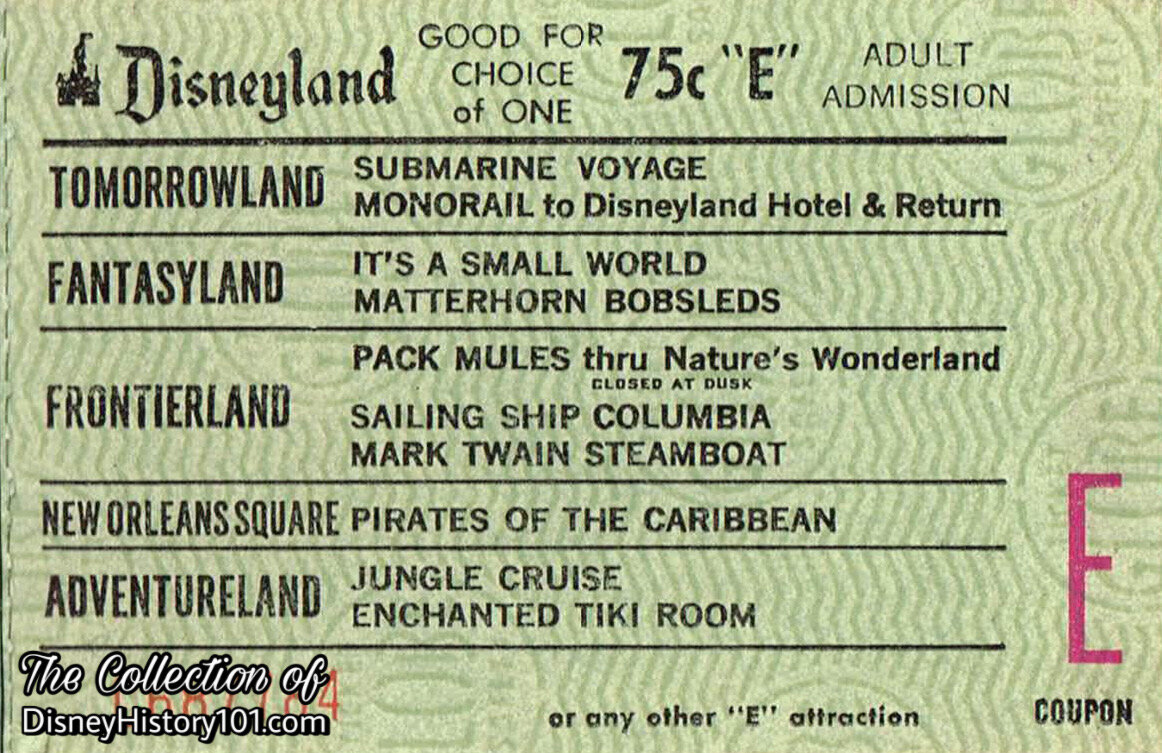
Disneyland "E" Adult Admission Coupon, 75¢ Value
In 1965, the cast of admission for seeing Nature’s Wonderland from the back of a sturdy Pack Mule was exactly one “E” coupon, or 75¢ for adults and 65¢ for children.
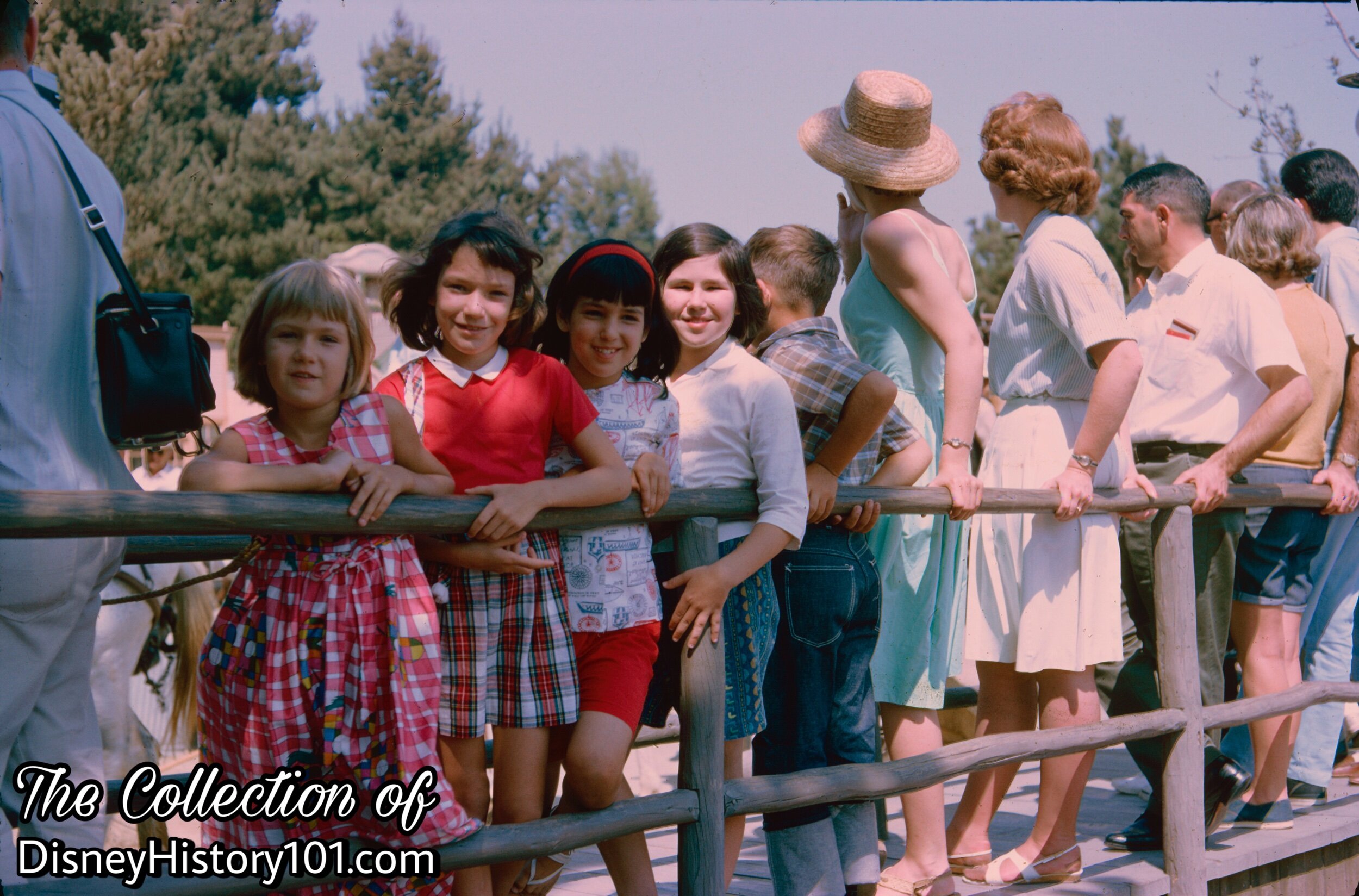
Pack Mules at Rainbow Ridge Guest Control queue area, c. August, 1965.
Younger guests also had the opportunity to mount their very own Pack Mules Through Nature’s Wonderland!
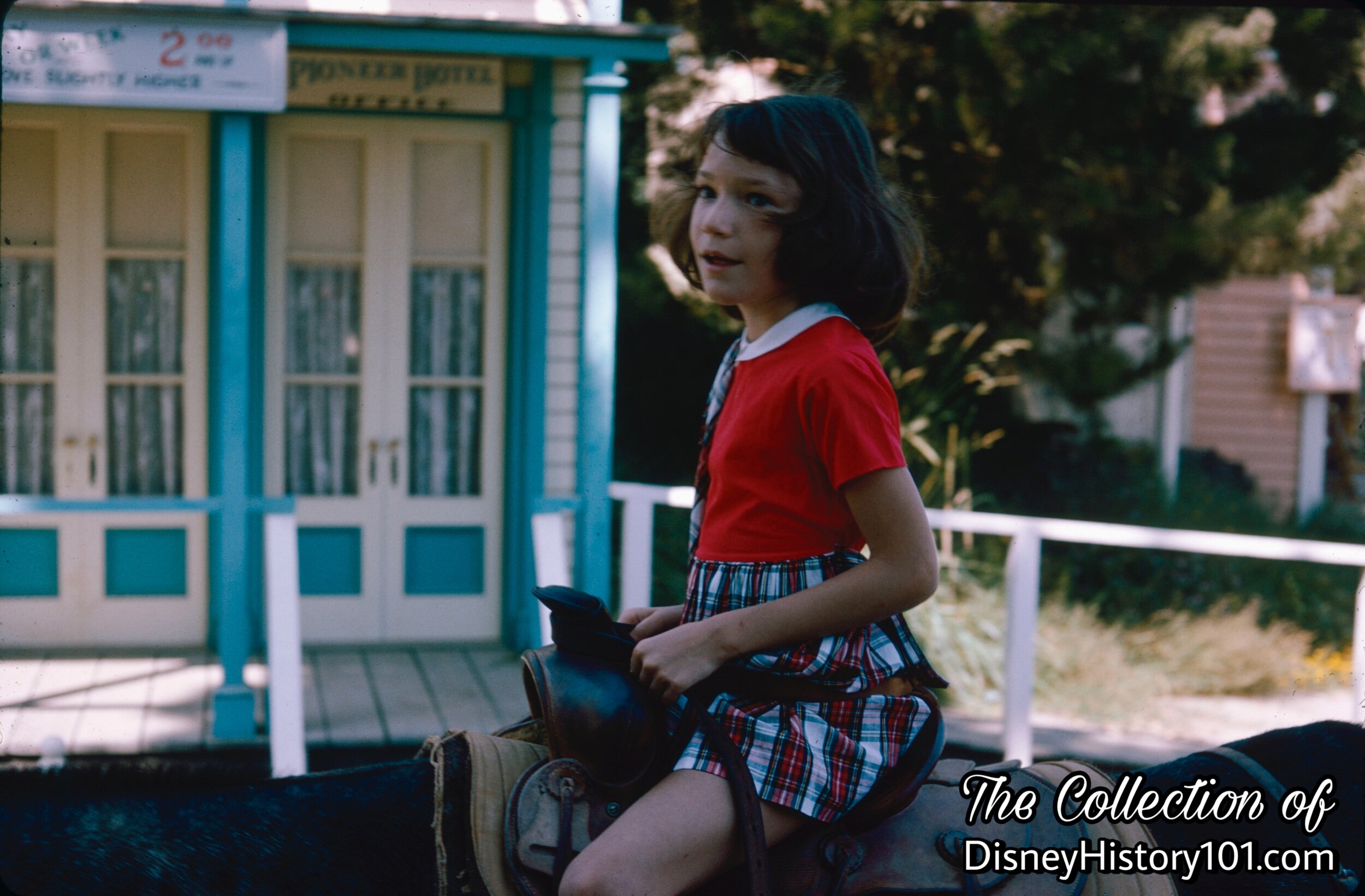
Pack Mules at Rainbow Ridge, (August, 1965)
How exciting to not be required the accompaniment of an adult during the duration of your journey!
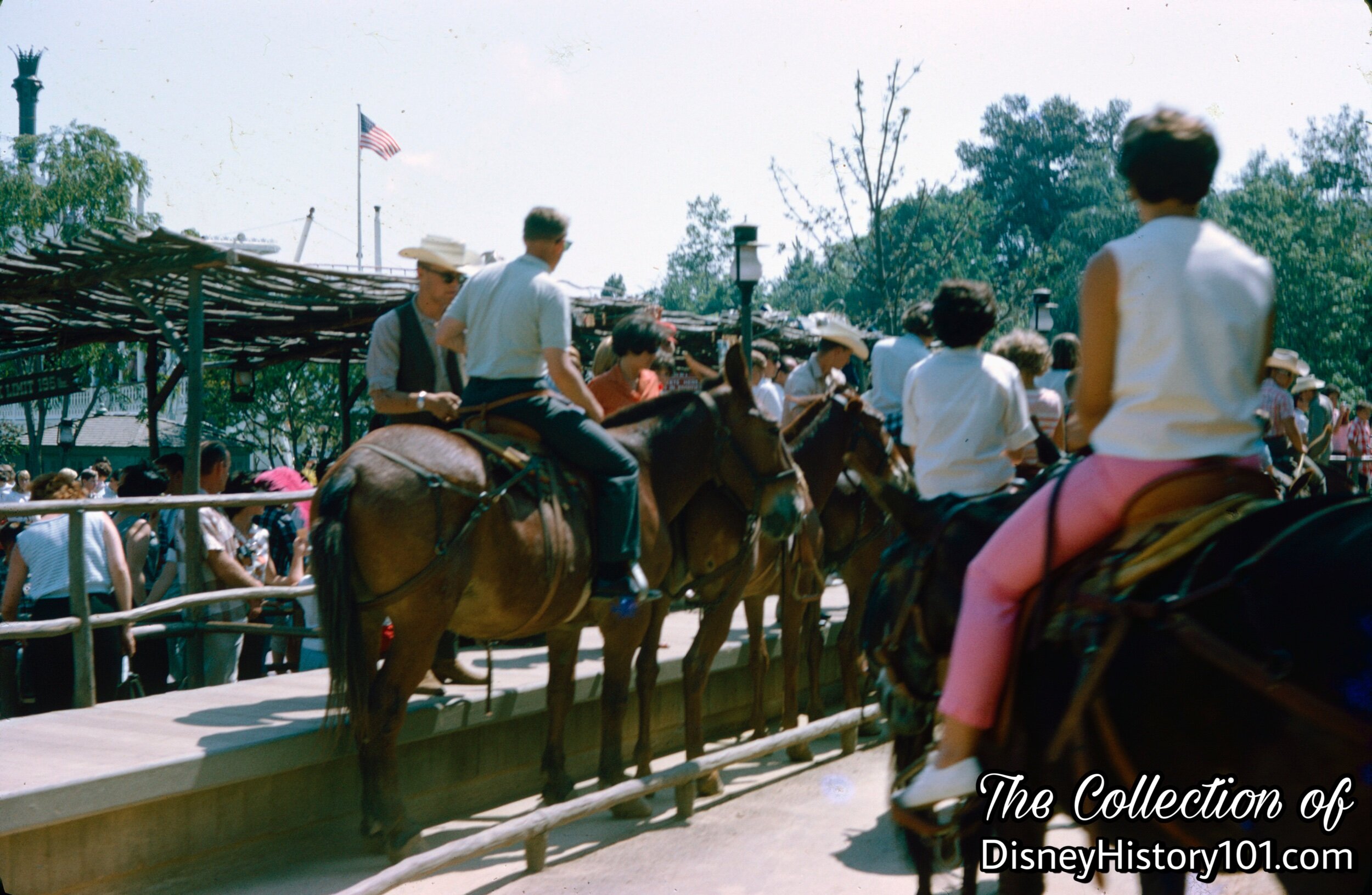
Pack Mules at Rainbow Ridge, (August, 1965)
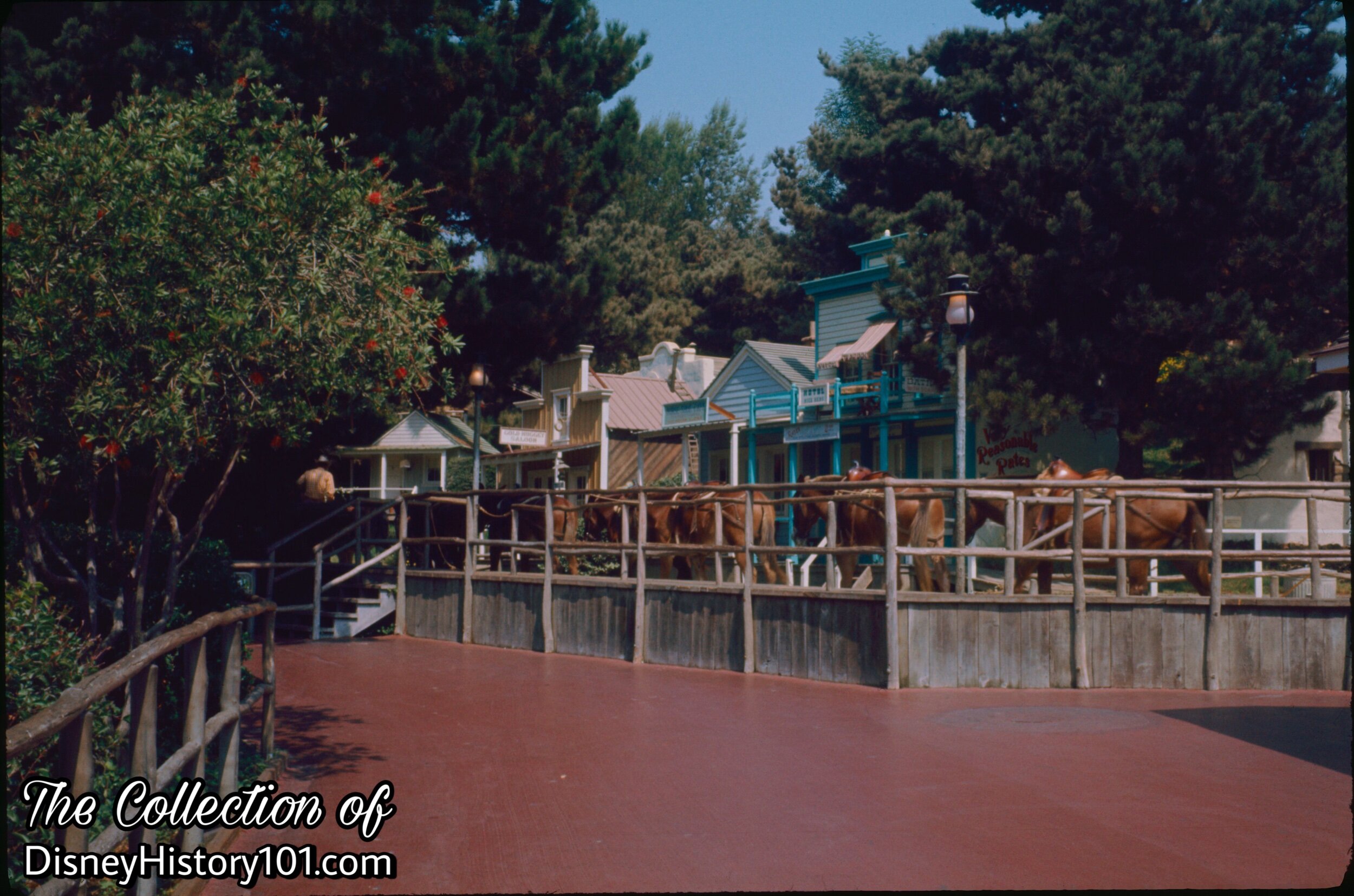
Pack Mules at Rainbow Ridge, (September 17, 1970)
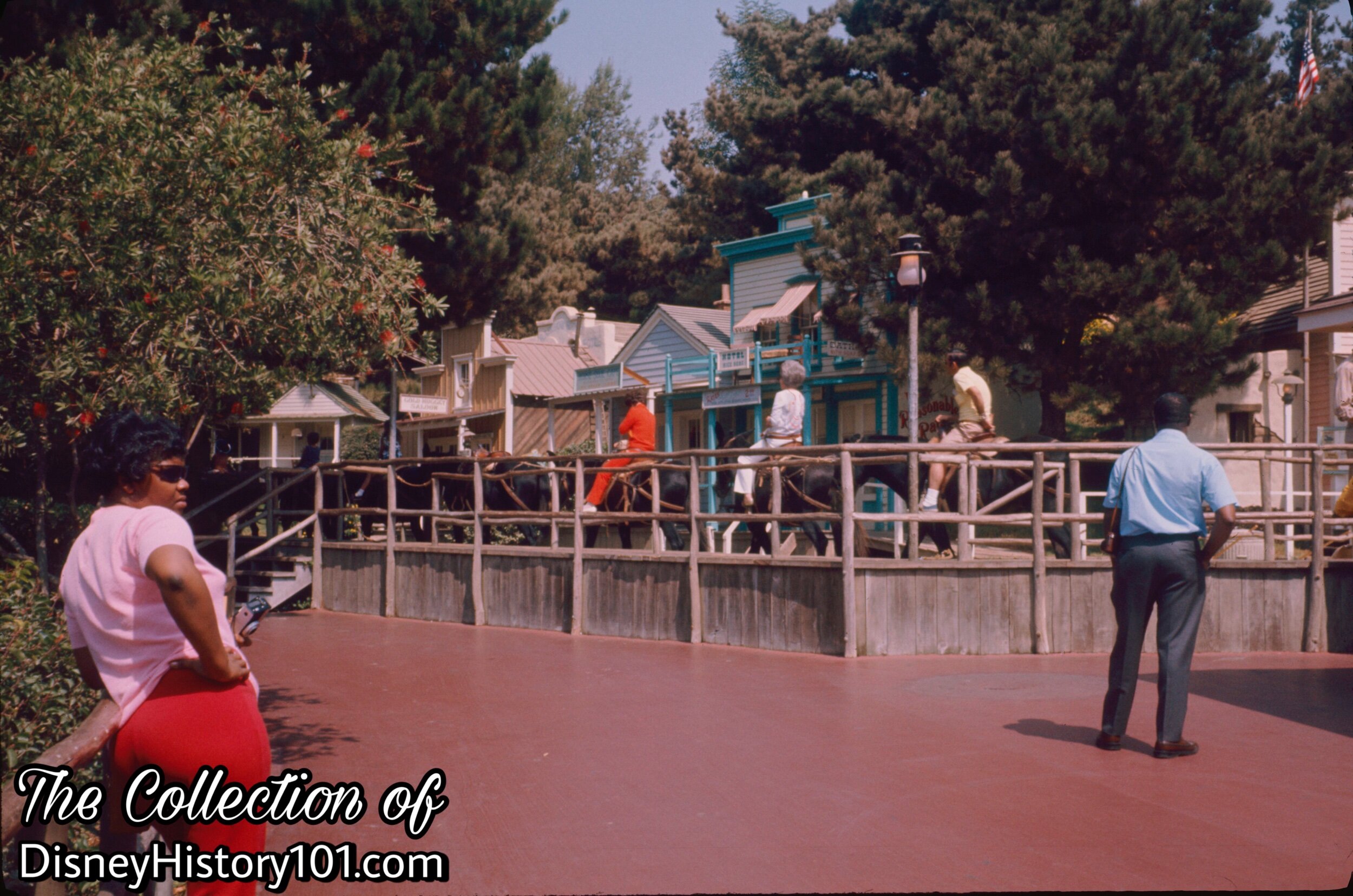
Pack Mules at Rainbow Ridge, (September 17, 1970)

Disneyland "E" Adult Admission Coupon, 85¢ Value
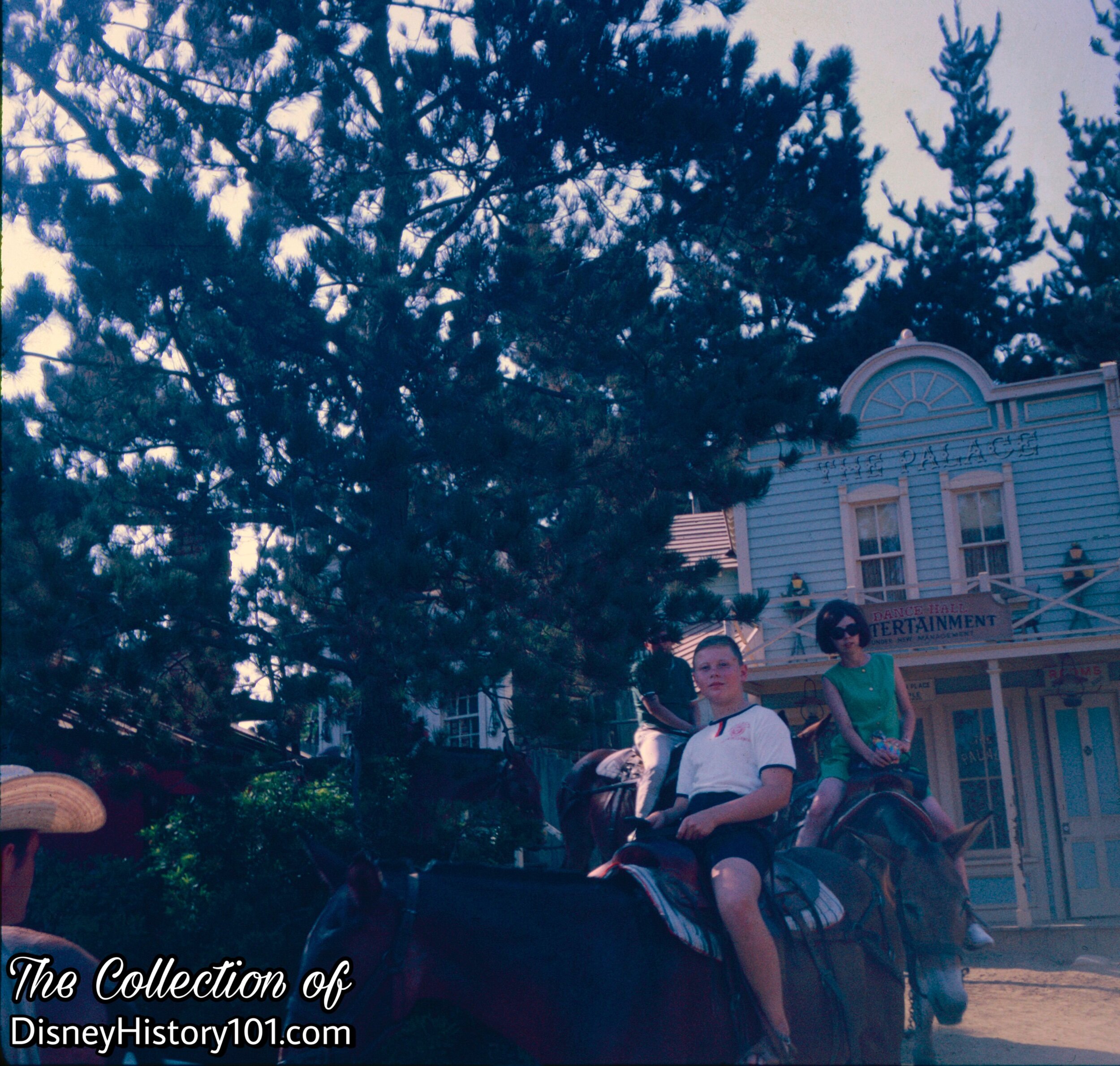
Pack Mules at Rainbow Ridge, (c. July, 1967)
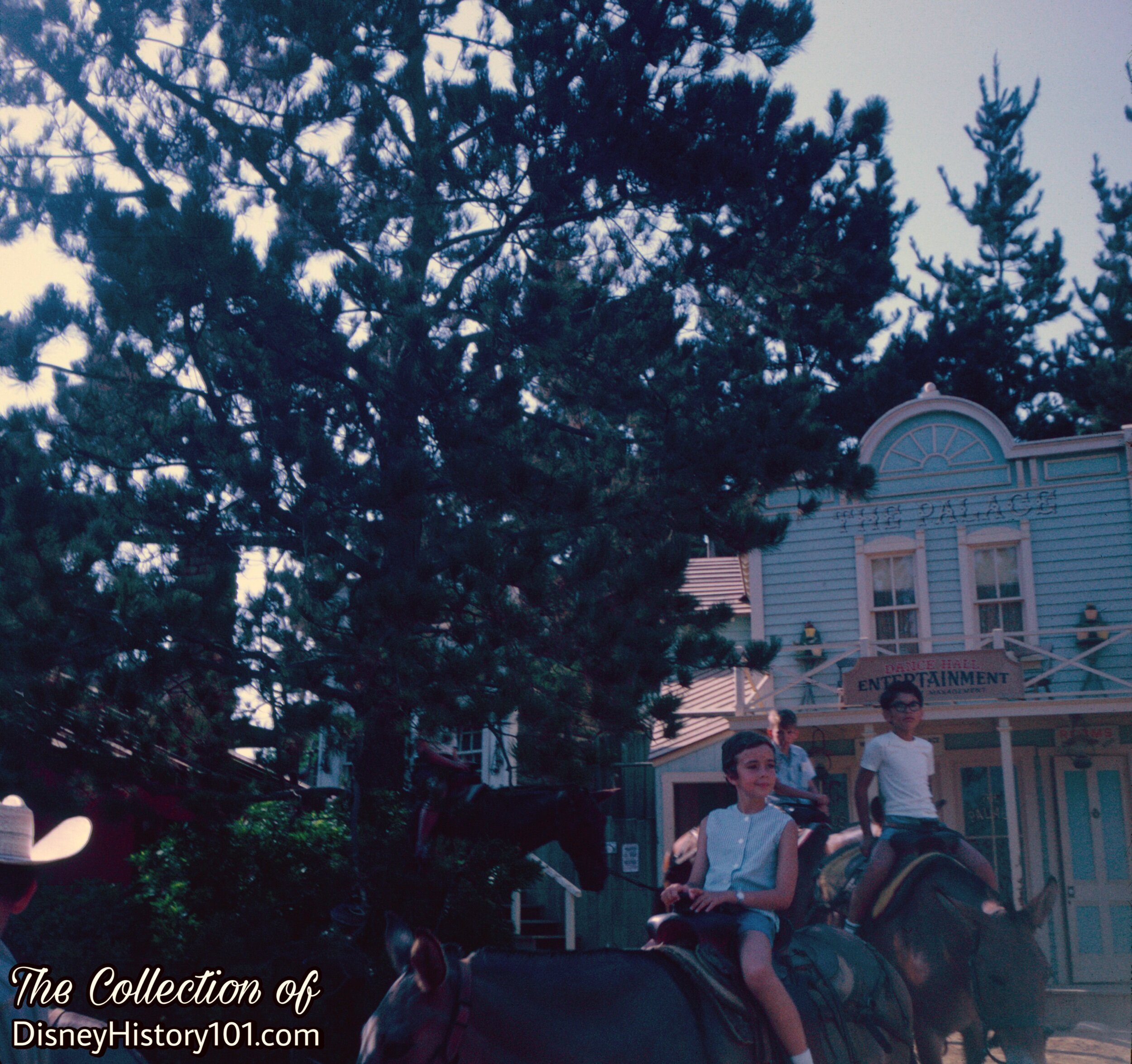
Pack Mules at Rainbow Ridge
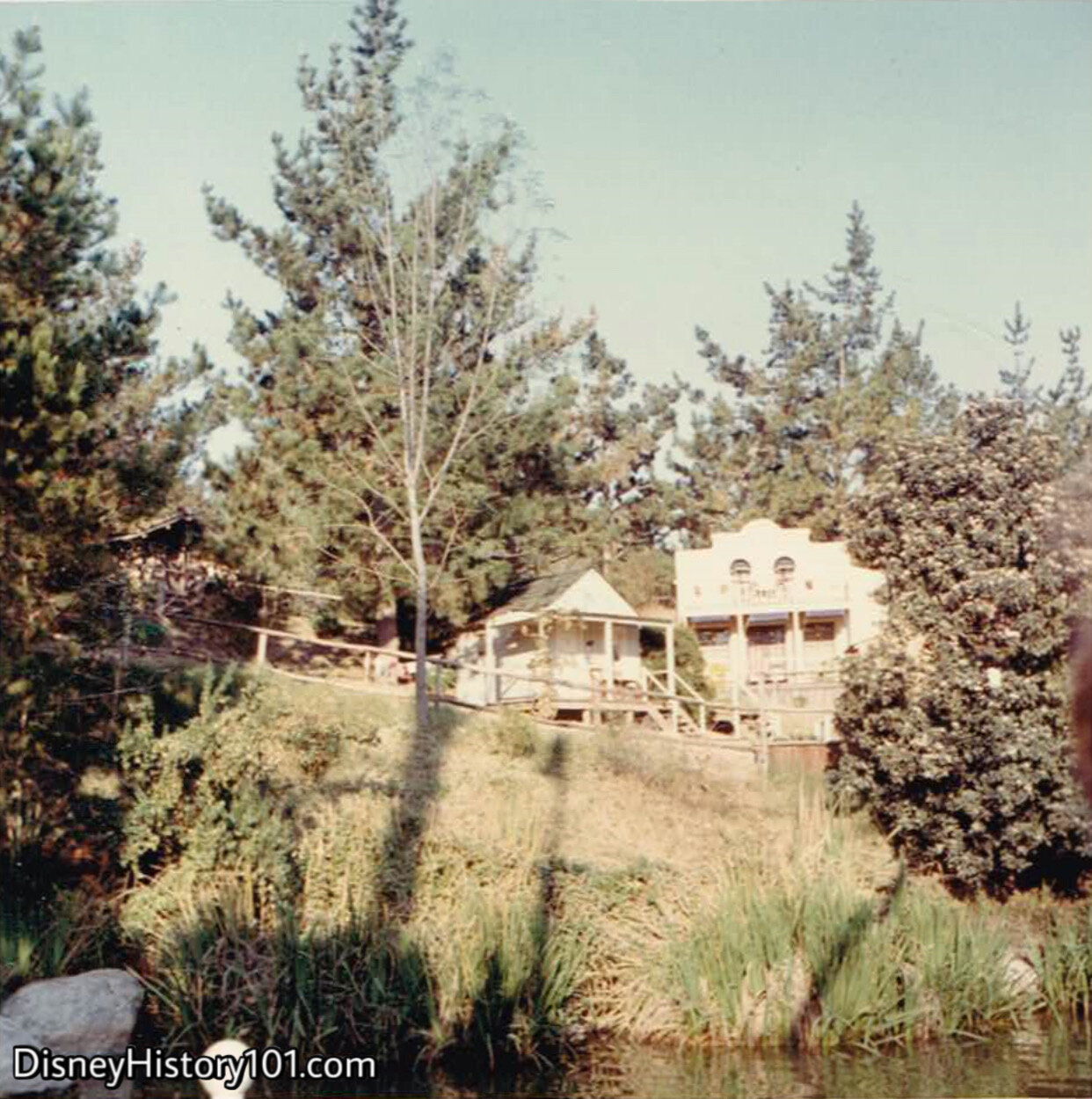
Pack Mules at Rainbow Ridge, (February, 1967)
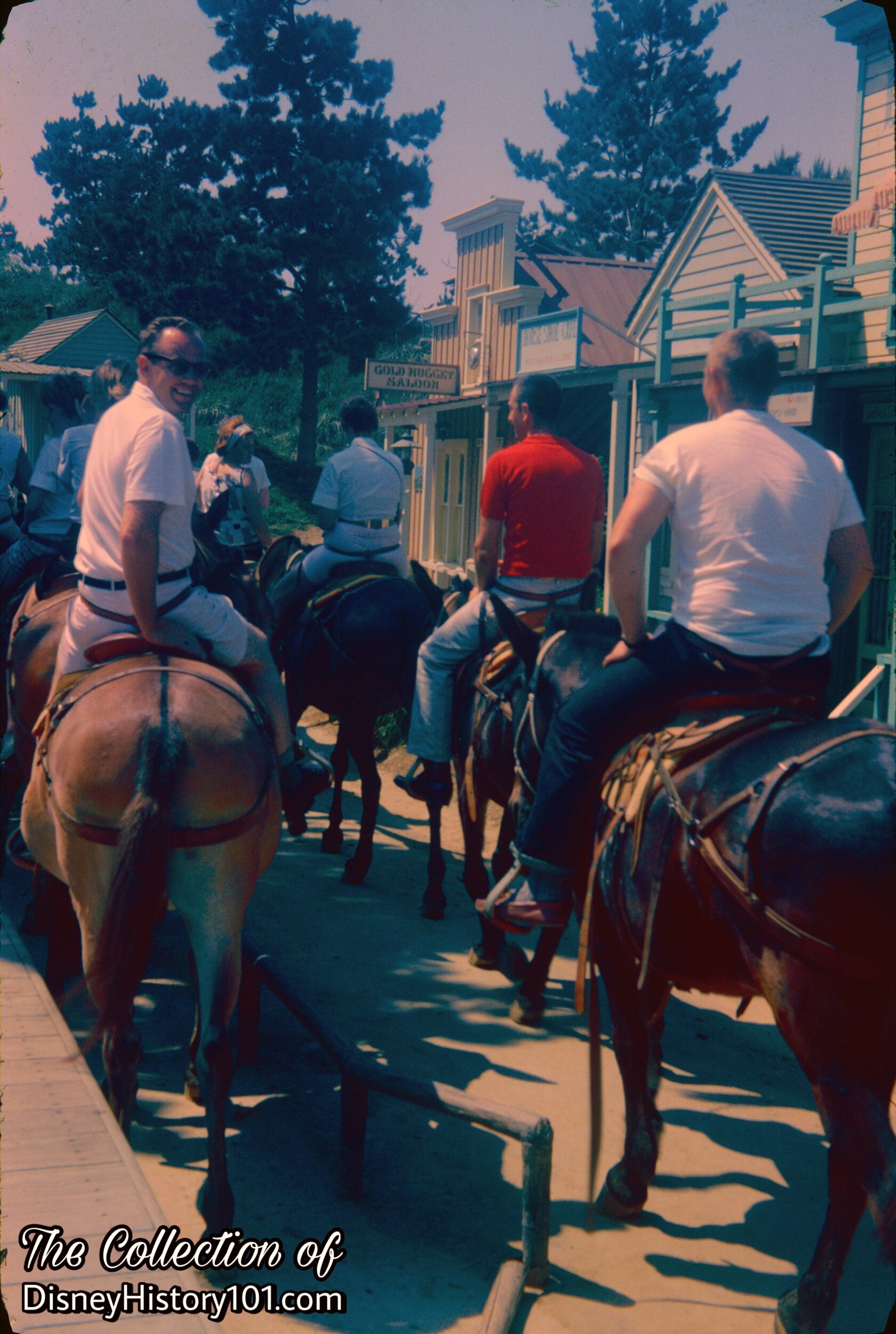
Pack Mules at Rainbow Ridge, (c. August, 1962)
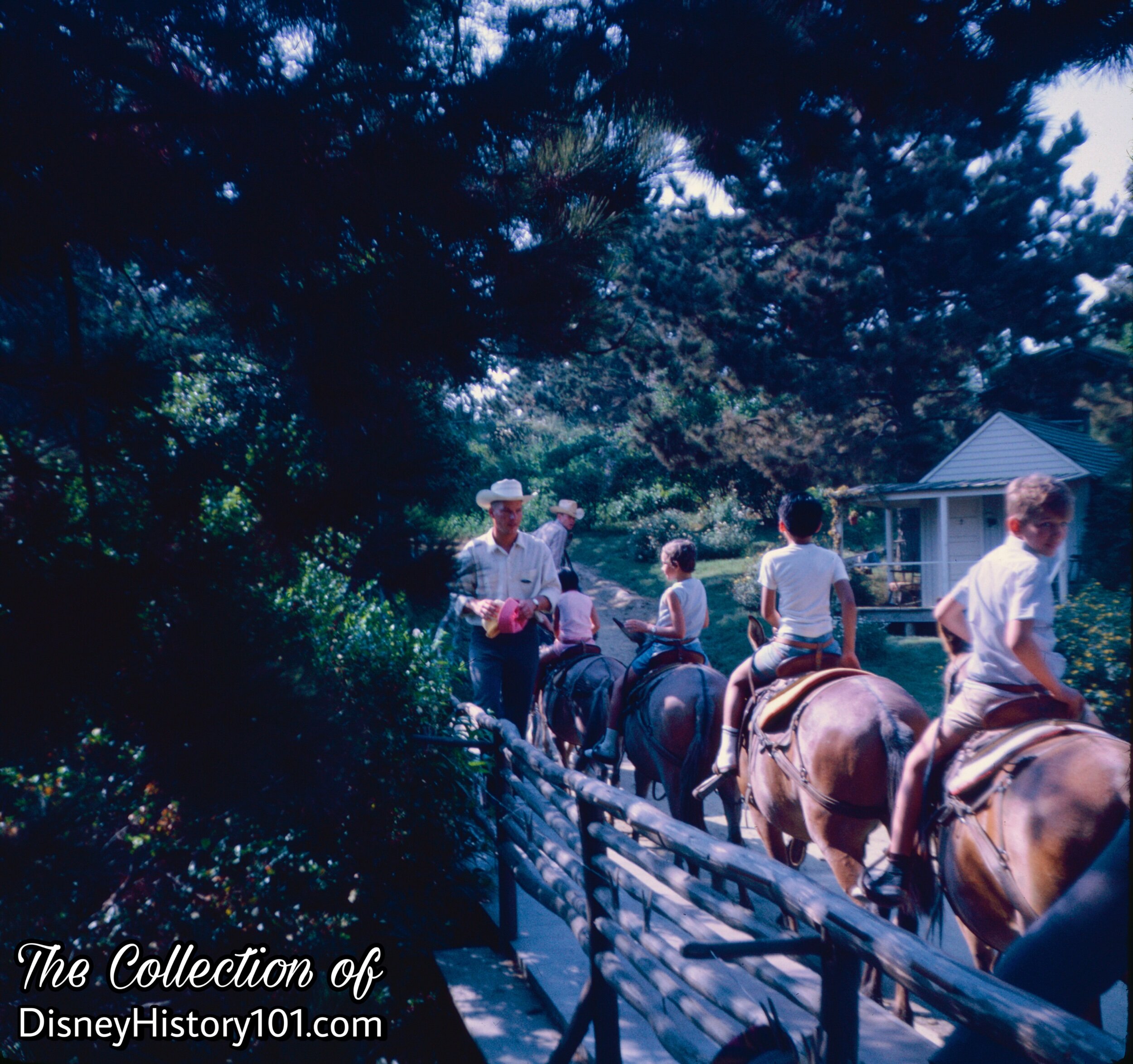
Pack Mules at Rainbow Ridge
As we head across the bridge, and near the outskirts of Rainbow Ridge (c. July, 1967), we come to a small house perhaps owned by the proprietor of the Rainbow Ridge Hotel. We’ll be heading up into the hills now, so hold tight!

Pack Mules at Rainbow Ridge, (January, 1971)

Pack Mules at Rainbow Ridge, (1960s)
The Pack Mules also gave an alternate view of the town of Rainbow Ridge, because their arrival and departure wound the train into the hills.

Pack Mules at Rainbow Ridge, (January, 1971)
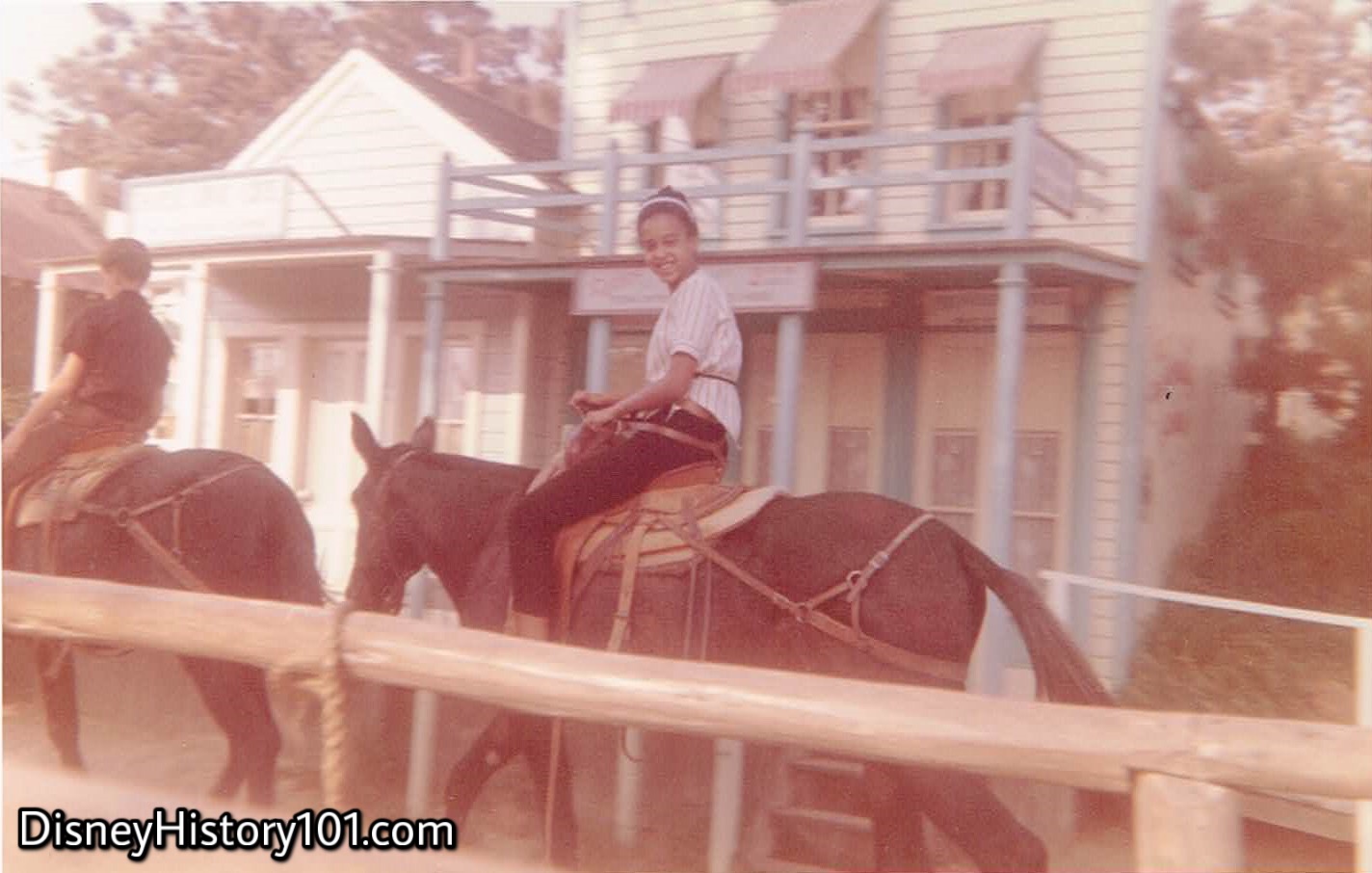
Pack Mules at Rainbow Ridge, (1970s)
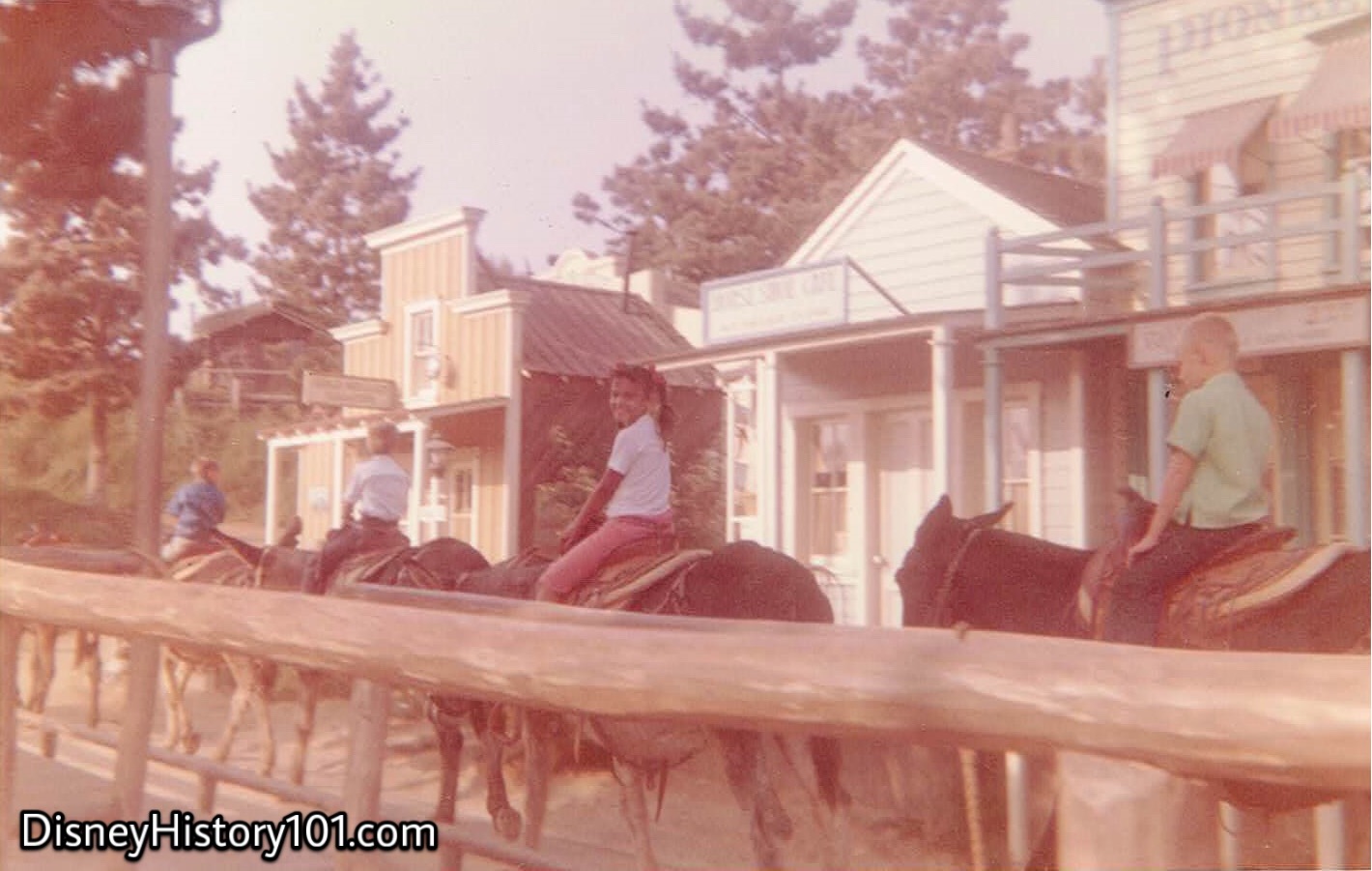
Pack Mules at Rainbow Ridge, (1970s)
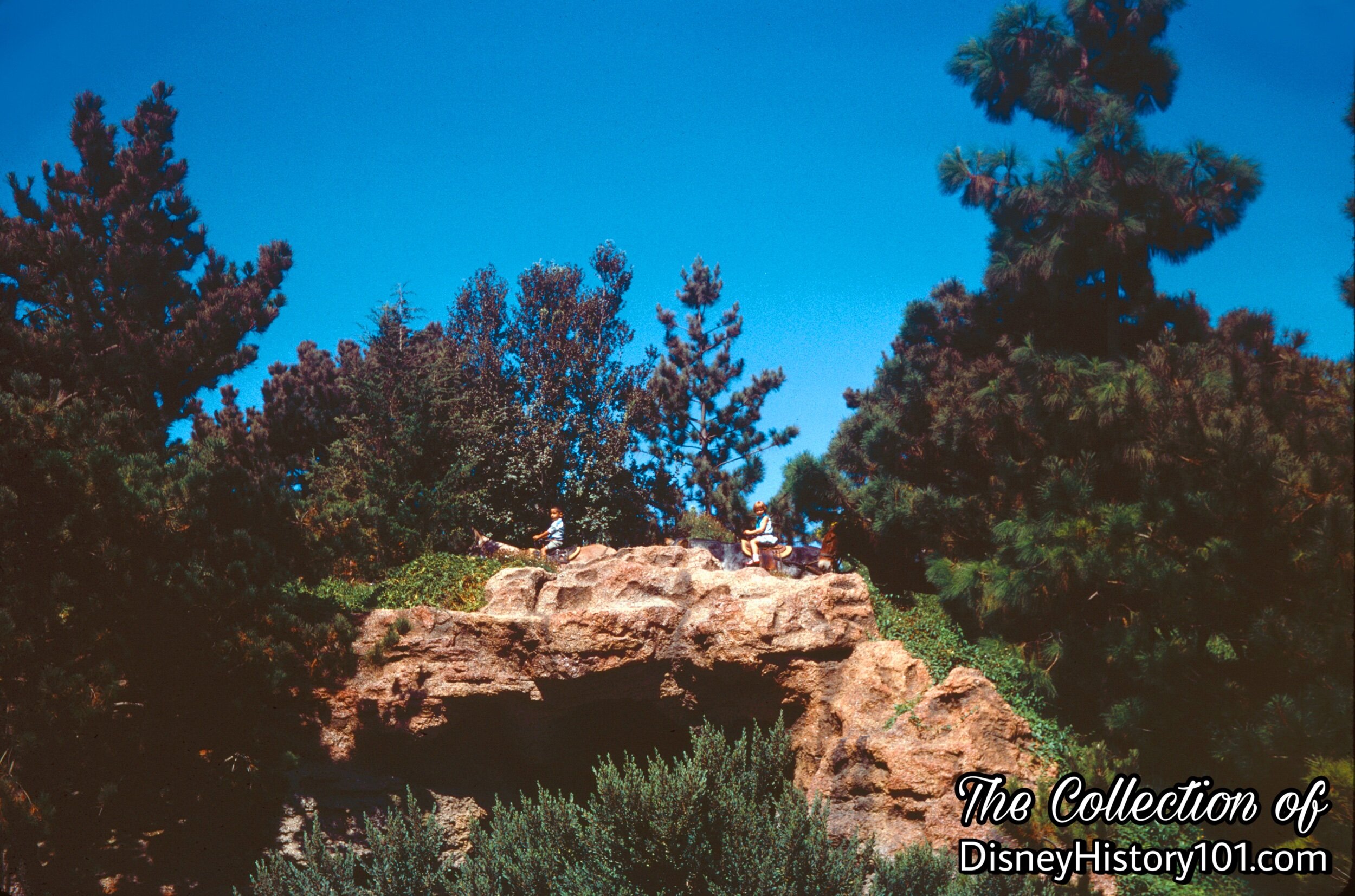
Pack Mules in Bear Country, (1967)
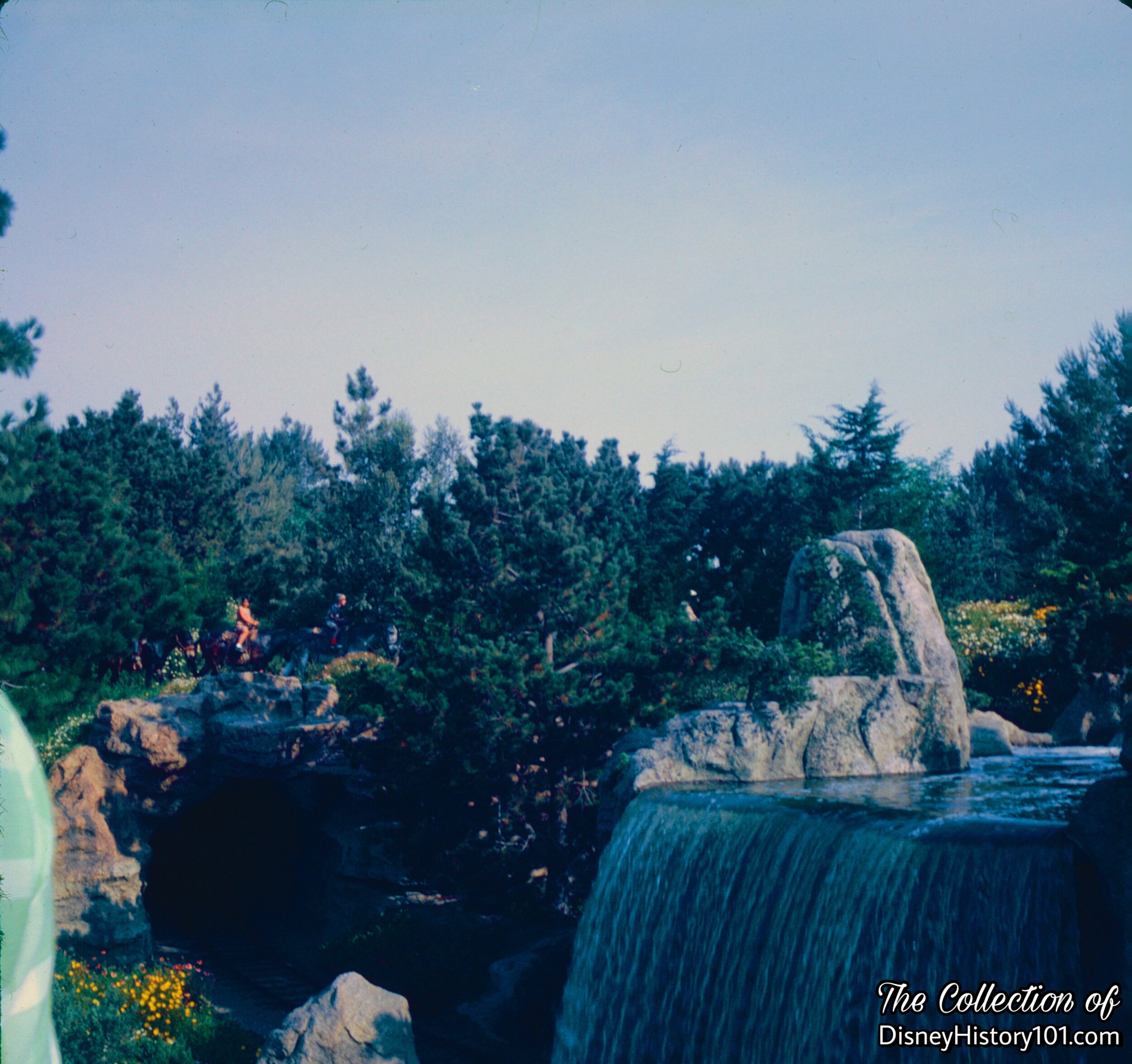
Pack Mules Near Cascade Peak, (1967)
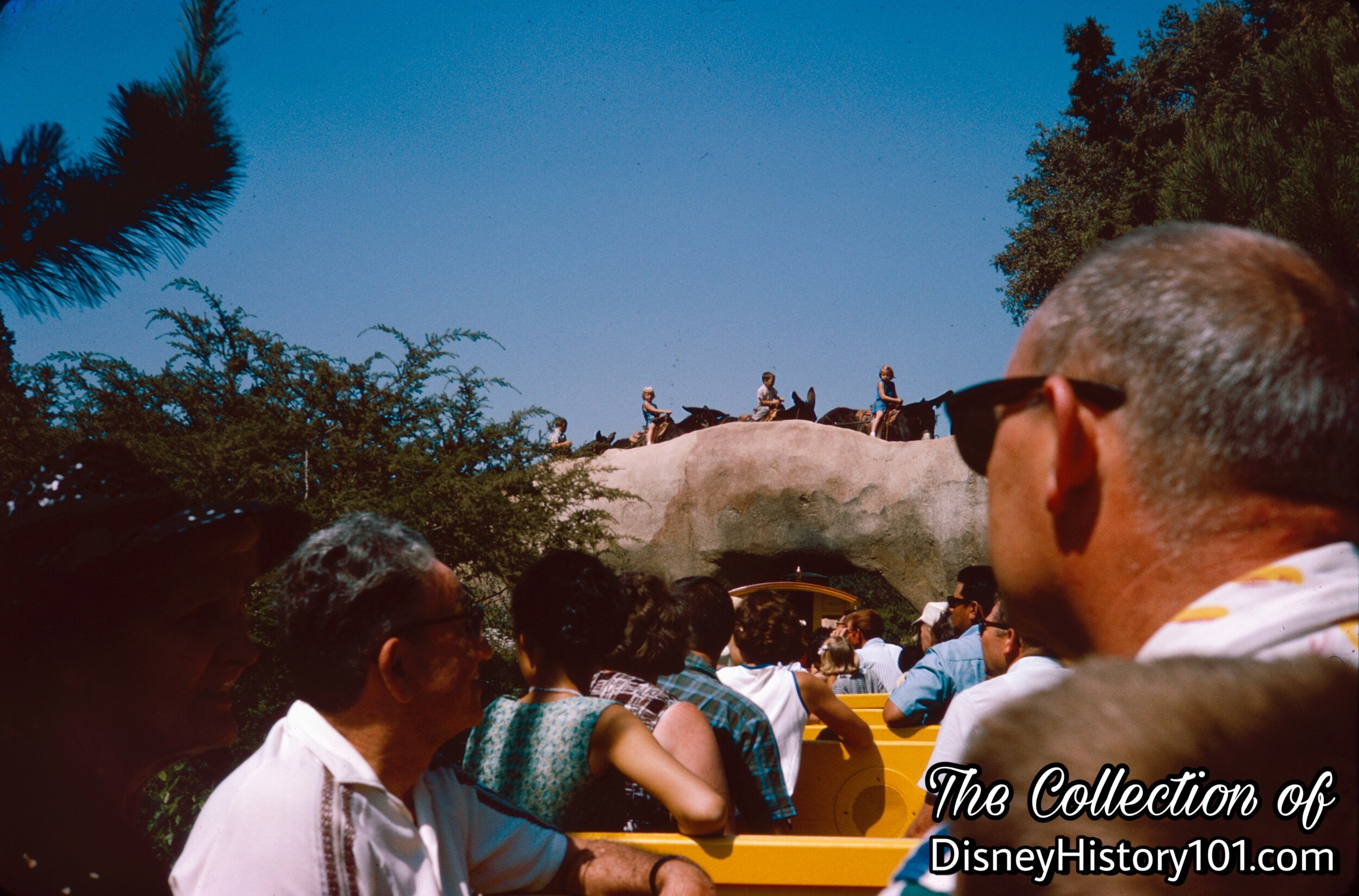
Pack Mules at Natural Stone Arch
The Pack Mules Through Nature’s Wonderland would head over Natural Stone Arch (the gateway into Nature’s Wonderland) while Mine Trains would pass beneath. Natural Stone Arch gave a breathtaking view of the Bear River on one side, and the Living Desert on the other.
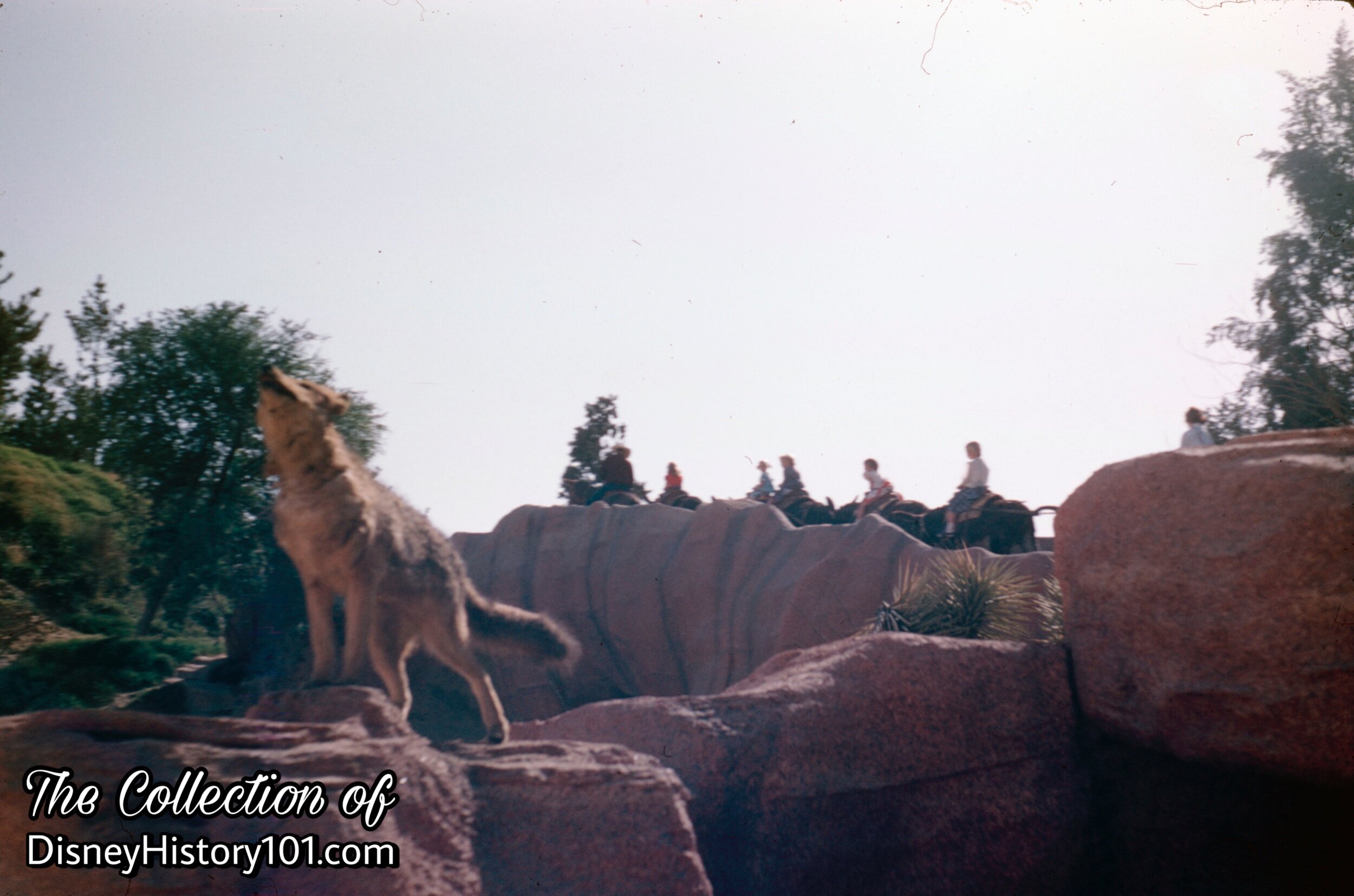
Rainbow Ridge Pack Mules Passing Coyote Rock

Pack Mules at Rainbow Ridge, (June, 1962)
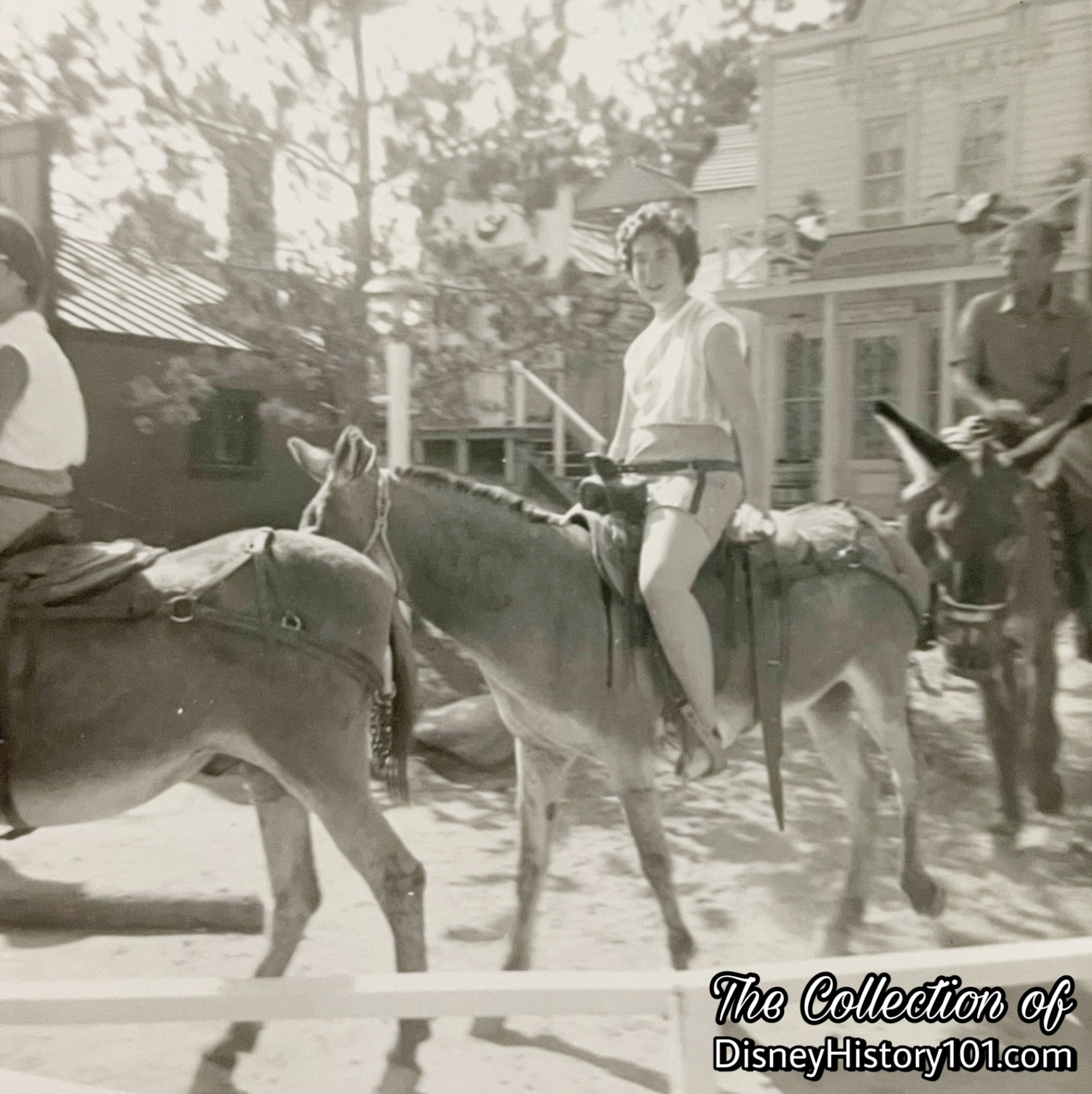
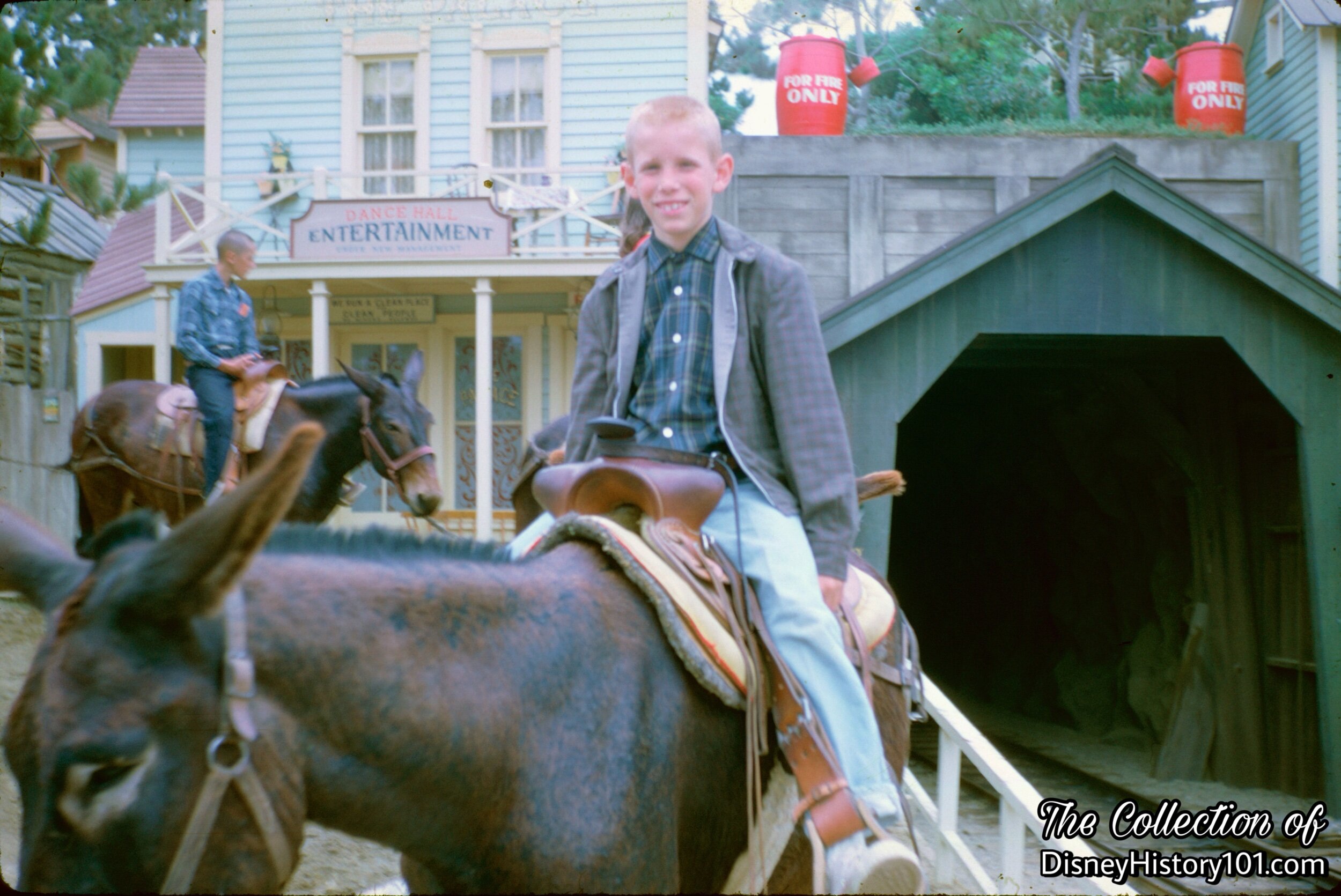
Pack Mules at Rainbow Ridge, (June, 1962)
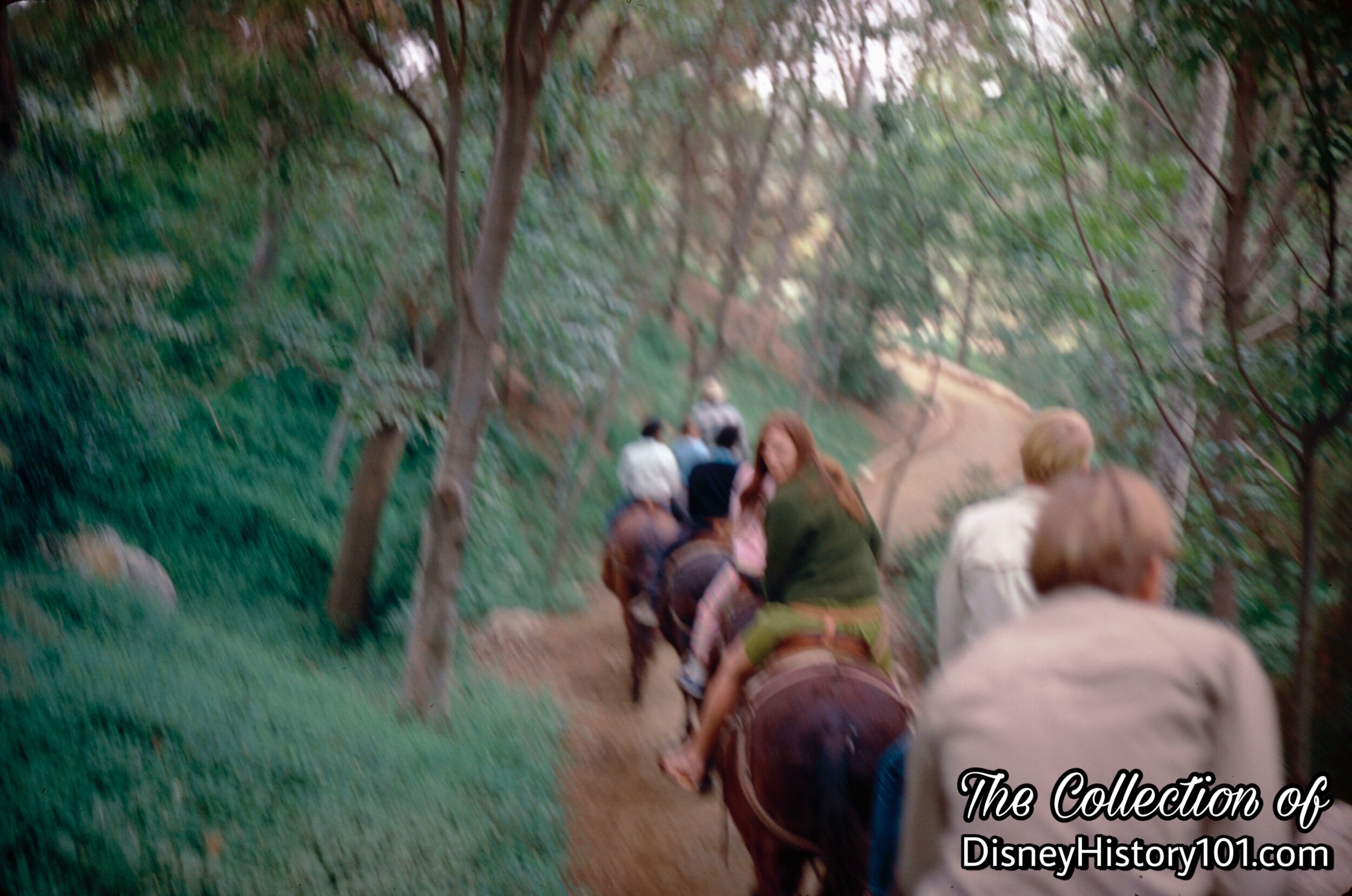
Pack Mules On The Trail, (September, 1970s)
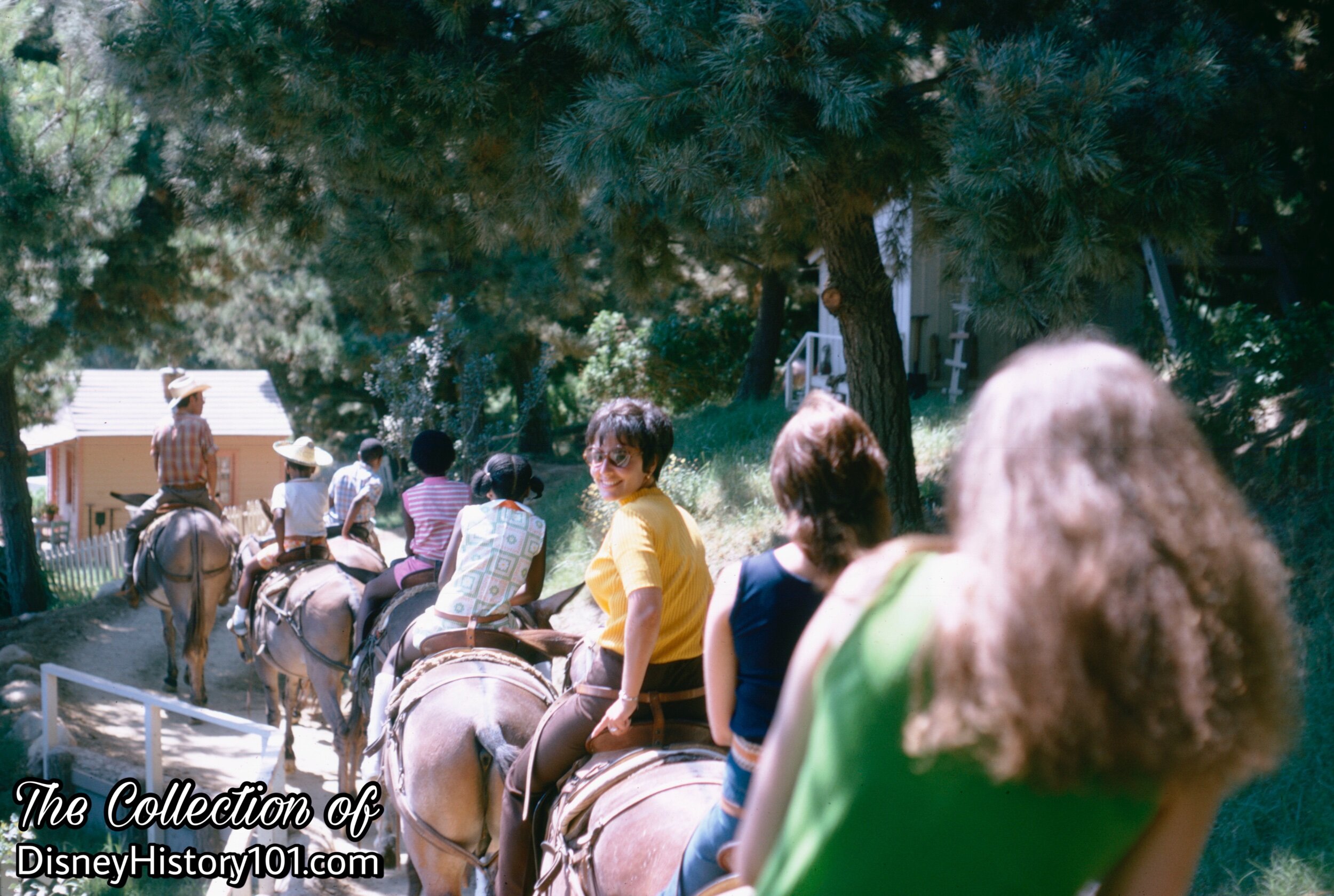
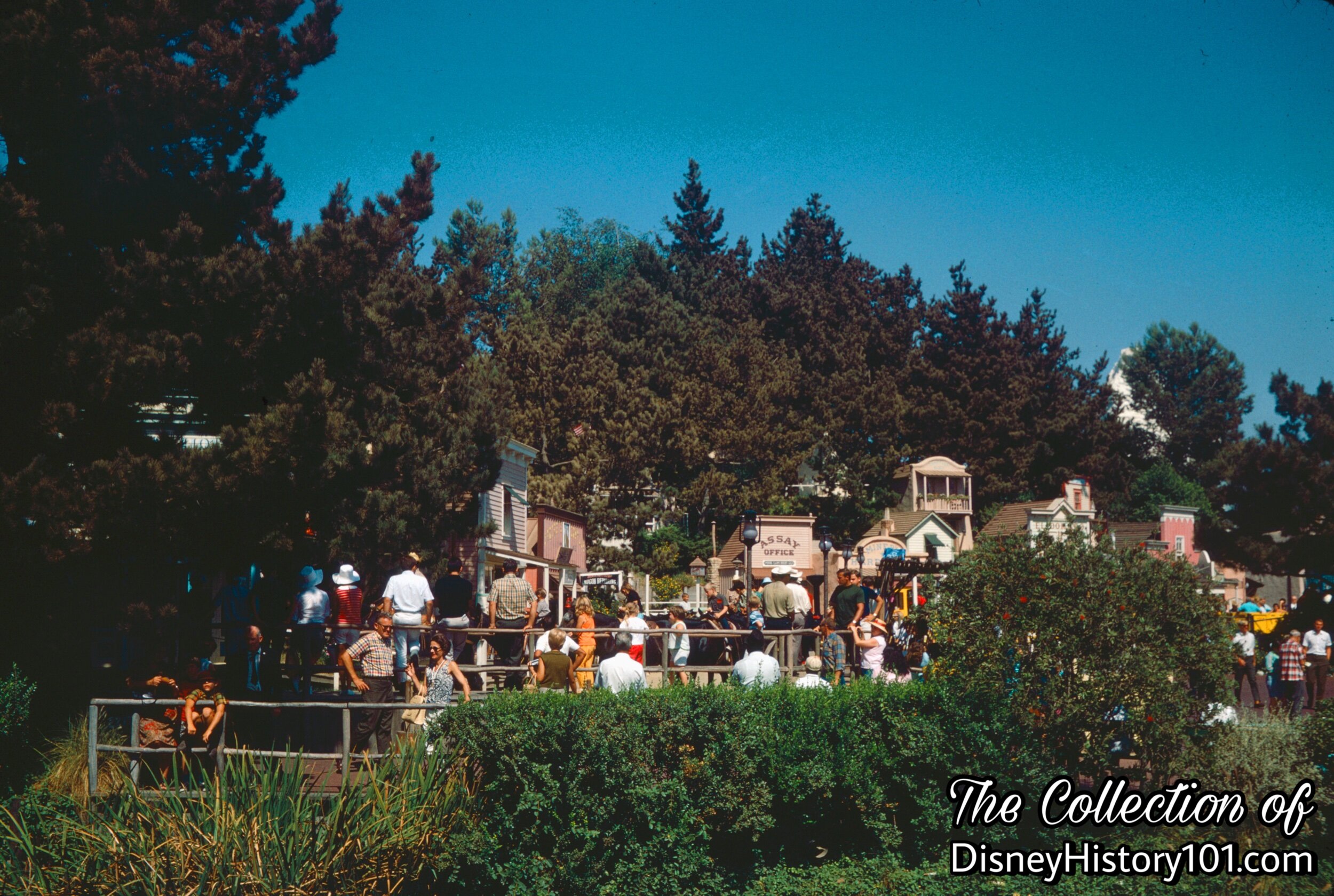
Pack Mules at Rainbow Ridge, (1967)
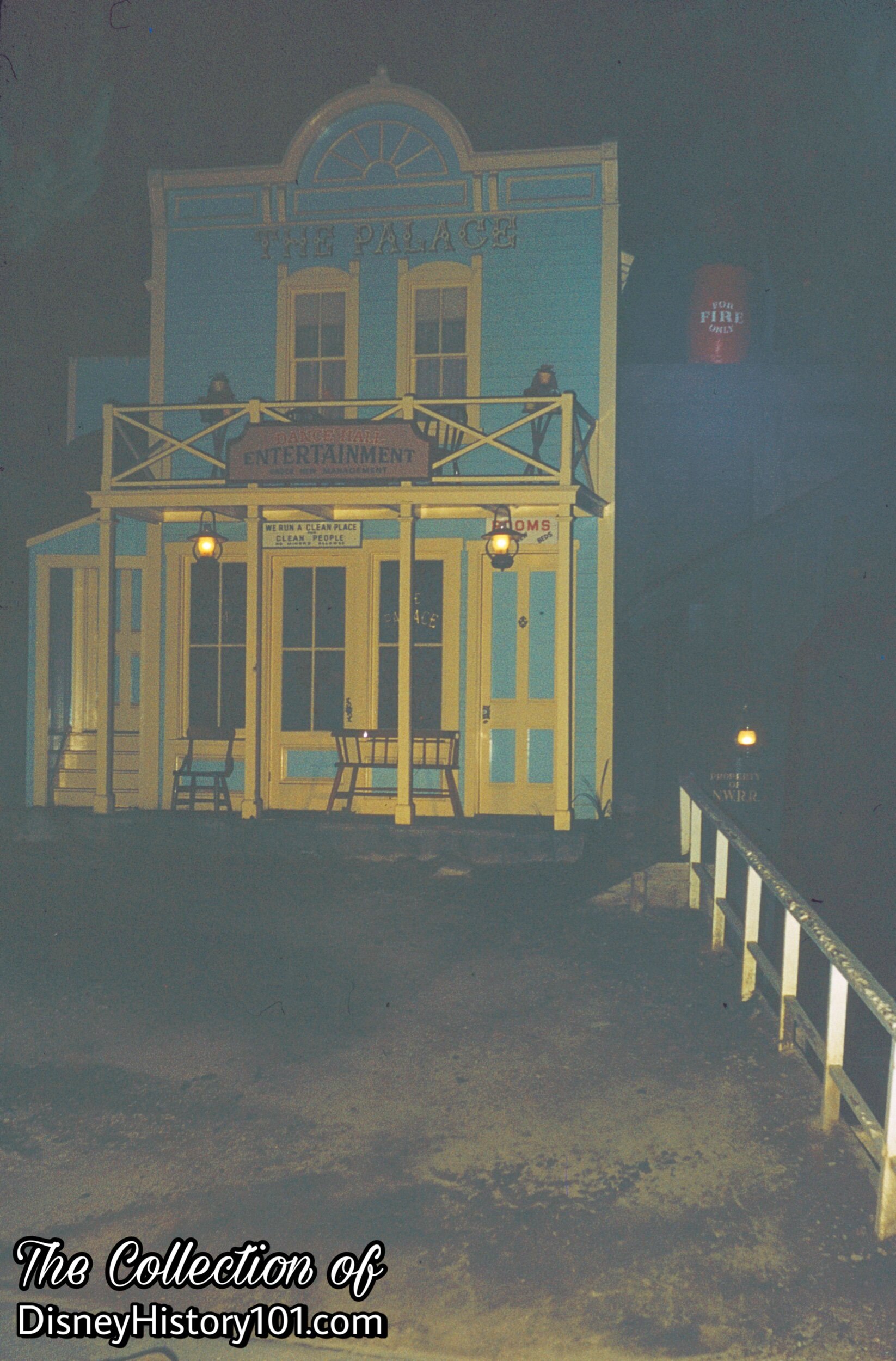
The Palace Dance Hall at Rainbow Ridge
To the side of the Pack Mule trail, we pass The Palace Dance Hall at Rainbow Ridge.
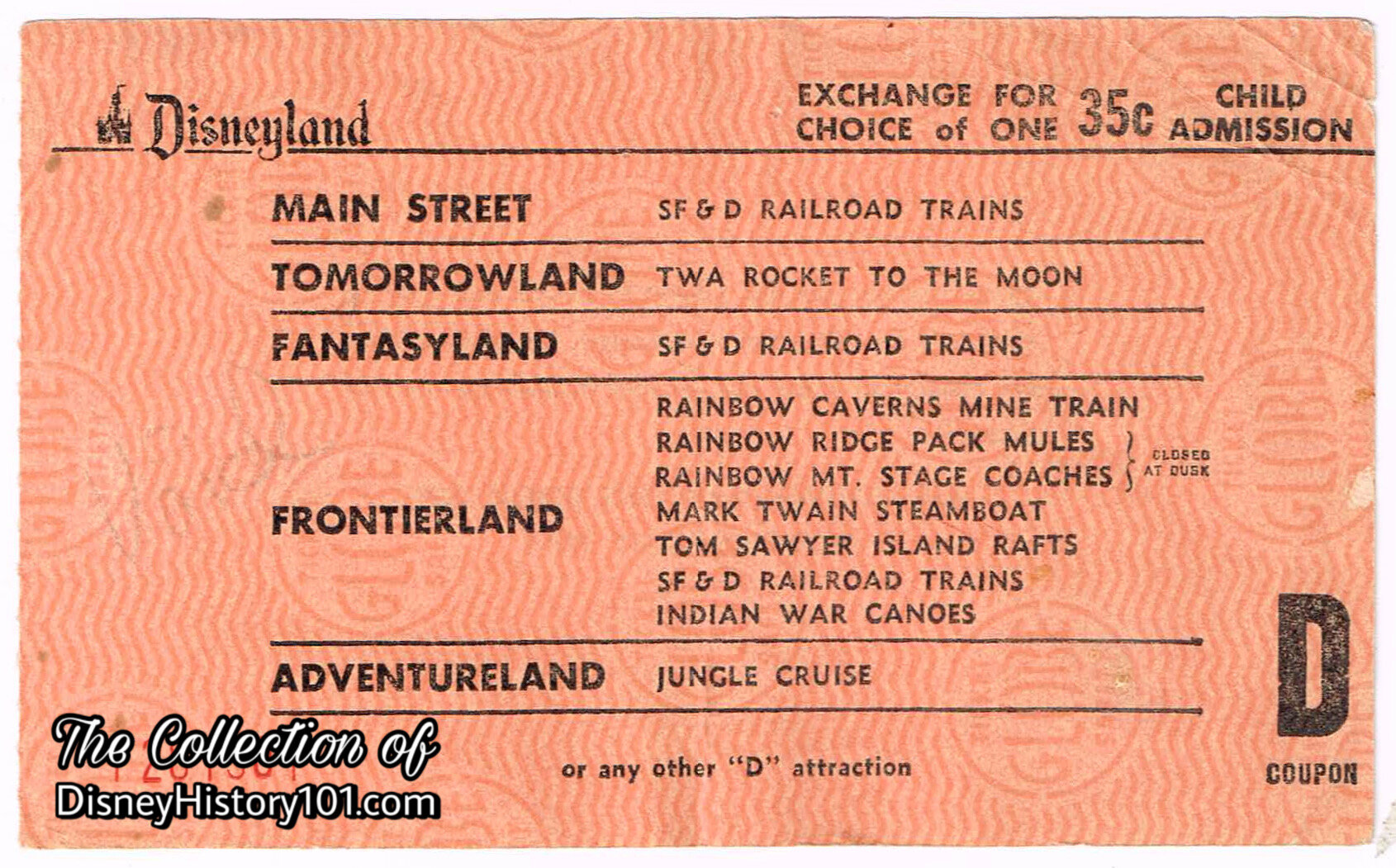
Disneyland "D" Child Admission Coupon, 35¢ Value
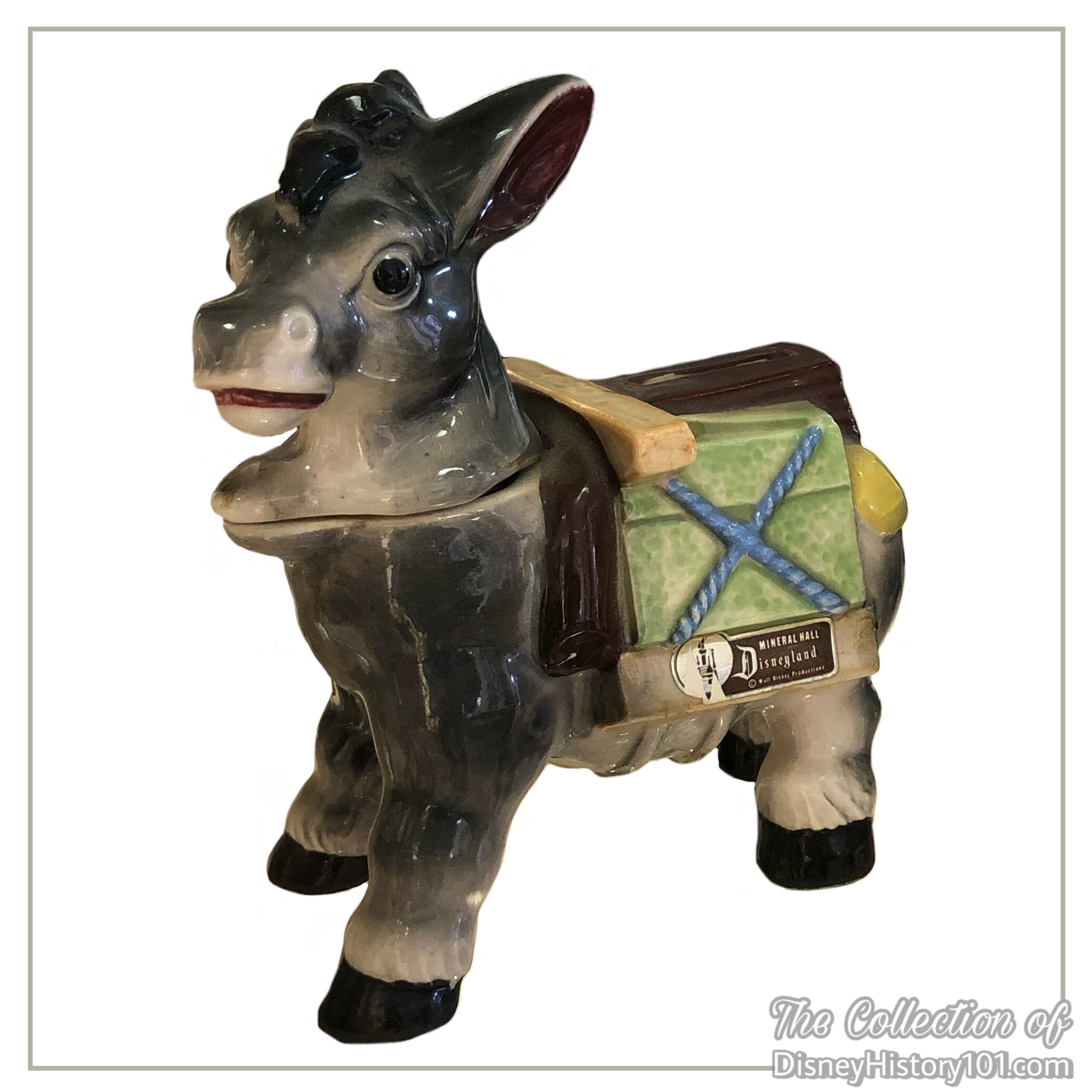
Pack Mule Ceramic Souvenir Once Sold Through The Mineral Hall
Just about a stone’s throw from the Mule Loading Area, the neighboring Rainbow Ridge Mineral Hall carried many Mule-themed souvenir gems, like this Pack Mule Ceramic.

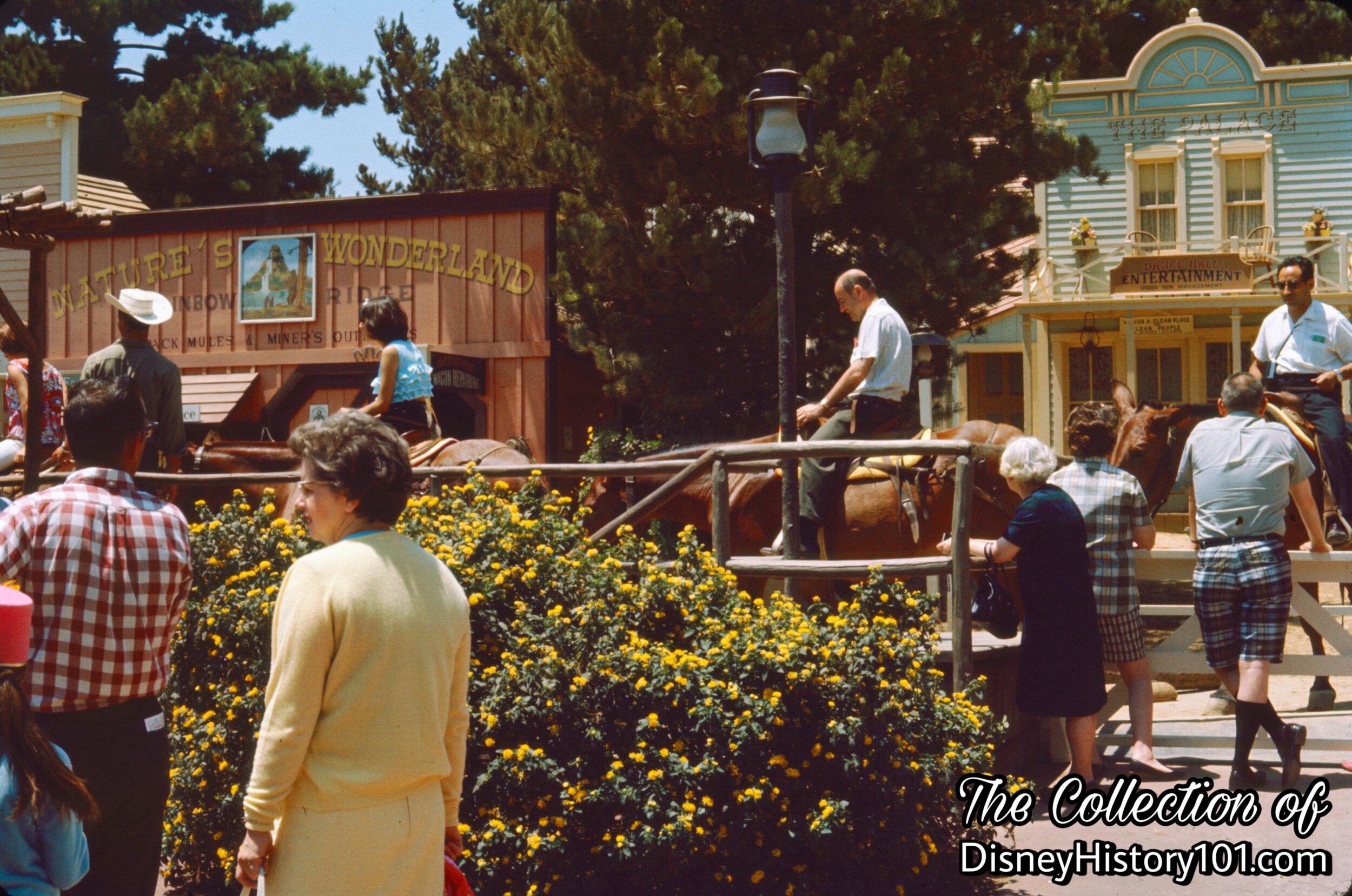
Safety is a major concern of Engineering. Every year they would make a complete test and inspection of all structural parts of Disneyland. And since Guests would look to Disneyland for their safety the department team was continuously designing new guest and personnel safety devices.
If an attraction at the Park proves to be dangerous, the problem is corrected or the attraction is eliminated. One casualty to safety was the Mule Train Ride. The Mule Train was responsible for the Park’s largest damage payouts, with at least four or five cases, major losses for Disneyland. Milo Rainey recalled: "Sometimes runaways would be caused by ducks flying across the river.” In the early 1970s, a man who fell off a donkey won a $146,000 verdict the largest single damage payout in the Park’s legal history. A Berkeley fashion model won $58,000 after she fell from a donkey and was stepped on, leaving a horseshoe shaped scar on her bank. As a result, the Mule Train would close.
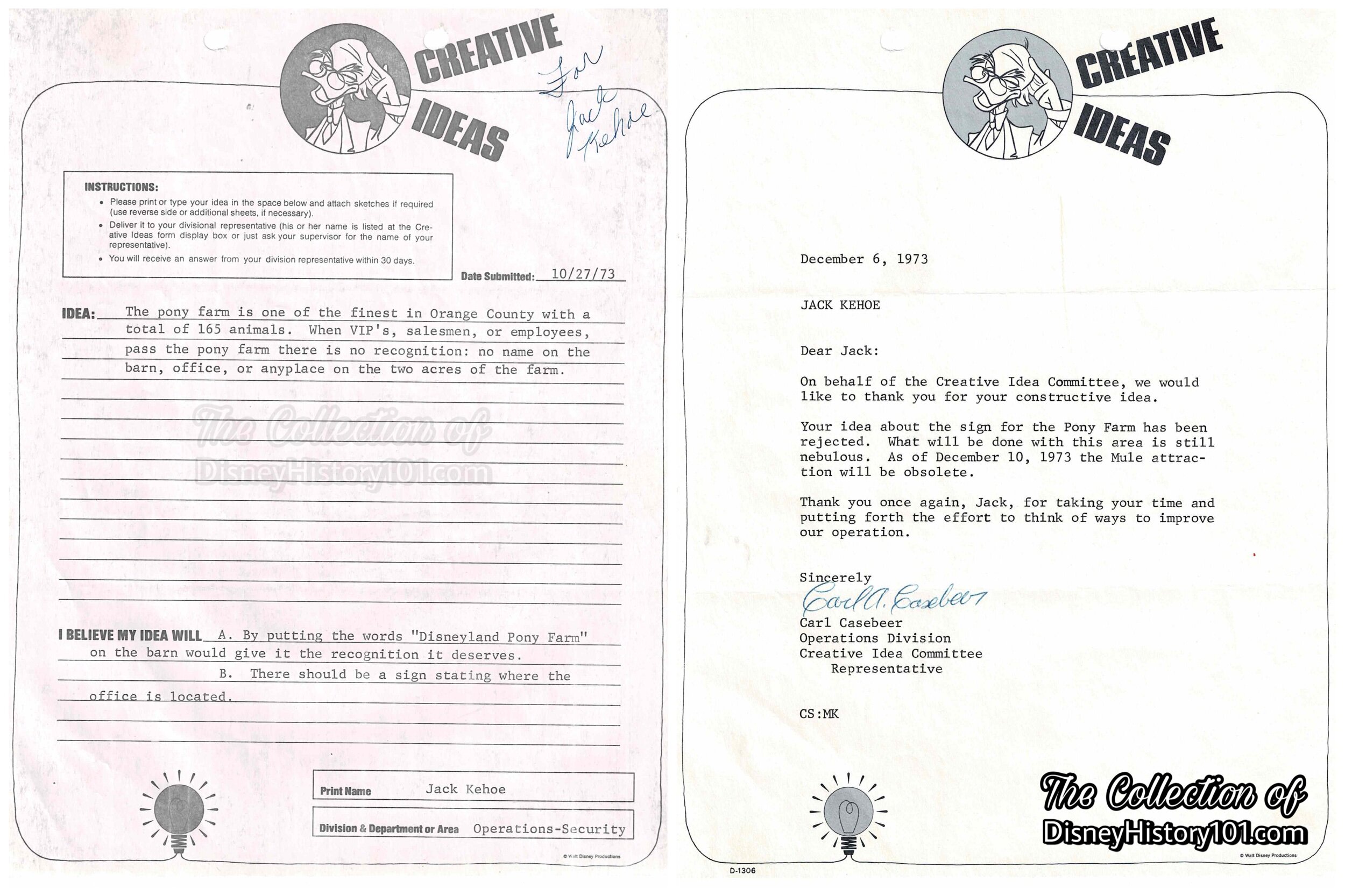
“Creative Idea” Program Suggestion (by Jack Kehoe) and Response (by Disneyland Operations), (1973)
Jack Kehoe (Operations, Security) suggested that the “Pony Farm” receive a sign labeled “The Disneyland Pony Farm,” but the official response would have been hard for some to handle. Though included in the Disneyland Admission Media Ride and Attractions Report of 1971, it seems that the “Pack Mules” was nearing the end of the trail. By February of 1973, the last pack mule had walked through Nature’s Wonderland.
While most of the mules would disappear from Frontierland (and Disneyland), the old Pony Farm wasn’t going anywhere (at least, for a while). And Jack was sure on to something. Seven years later (in 1980), another Disneyland Cast Member (Main Gate Ticket Seller Sandy Oleson) helped give the Pony Farm a new name - Circle D Ranch!
As a “sidelight,” another equestrian relic from the past - “the original trail for the Pack Mule attraction (1957-1978)” was still extant in the hills of Frontierland by 1990, according to “Disneyland - A Treasure Chest of Trivia,” prepared by Walt Disney Productions, 1990.
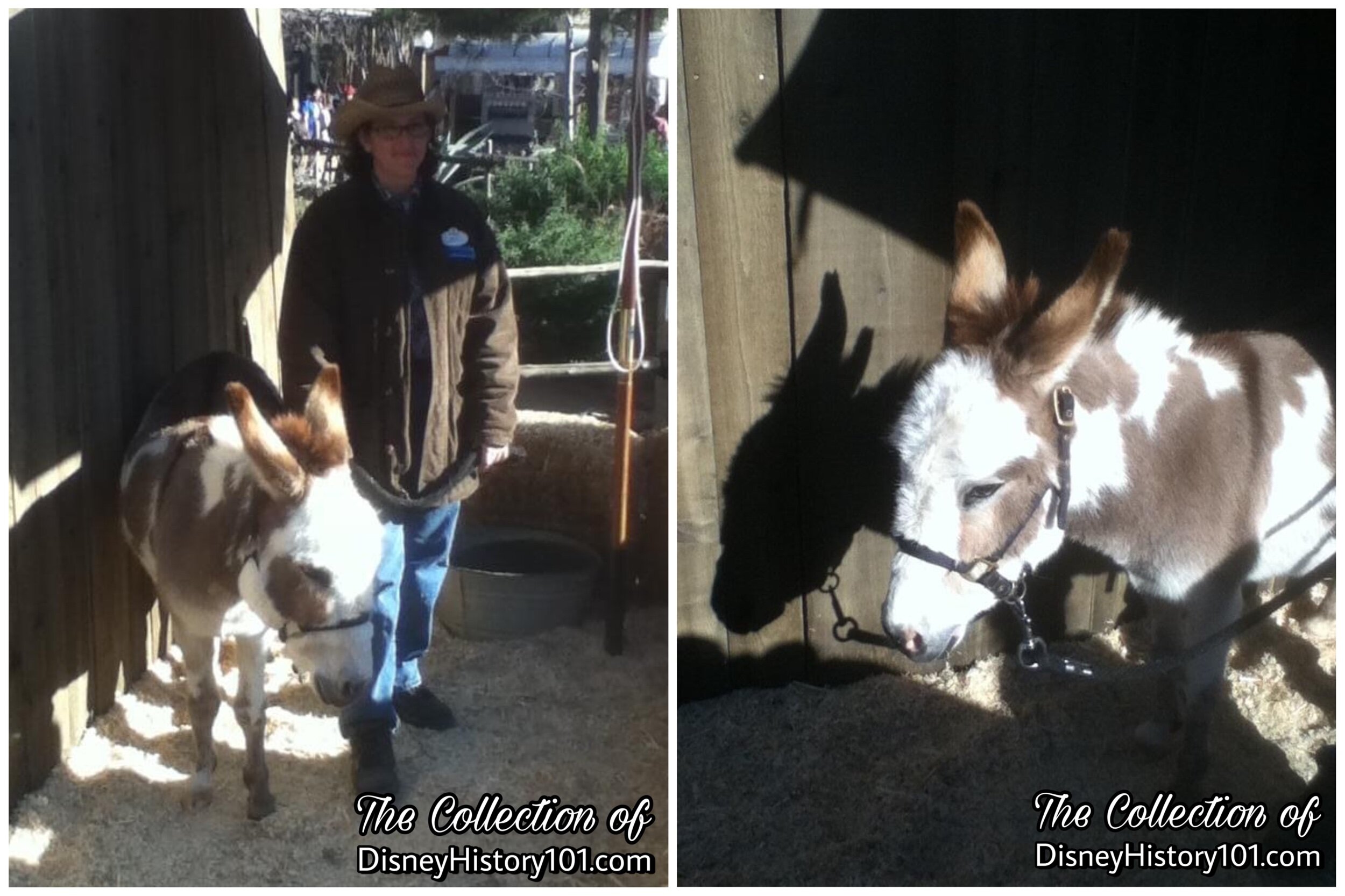
Not far from the “Big Thunder Mining Operation,” the “Happiest Horses on Earth” exhibit brought a familiar face On Stage - a mule!
